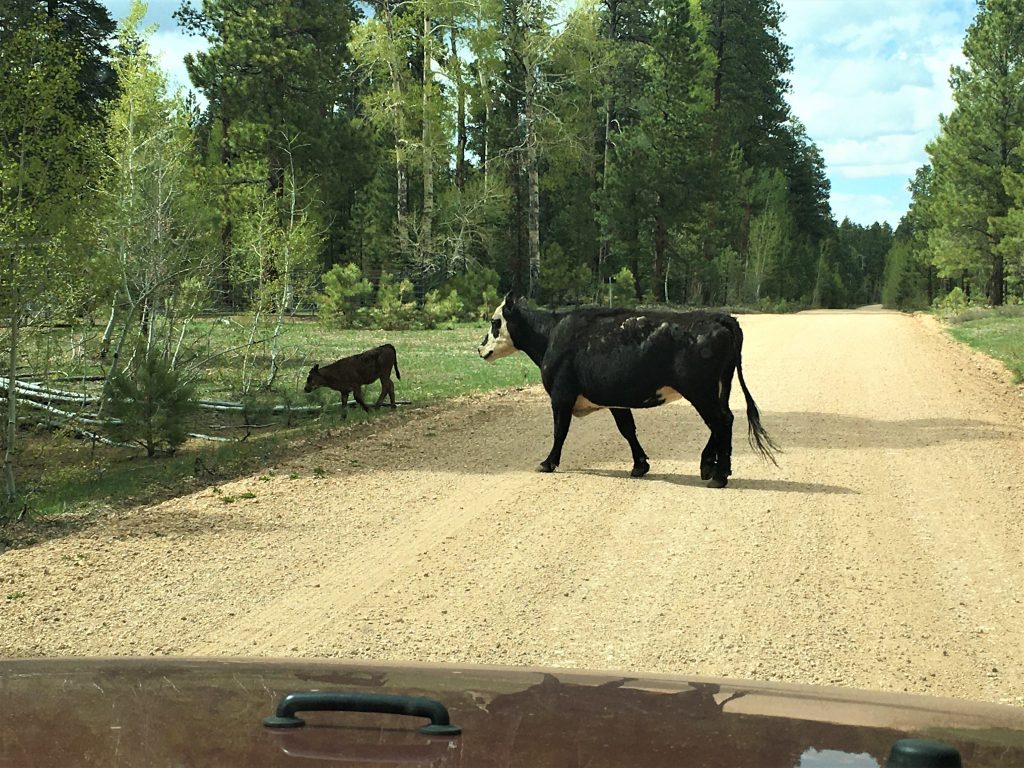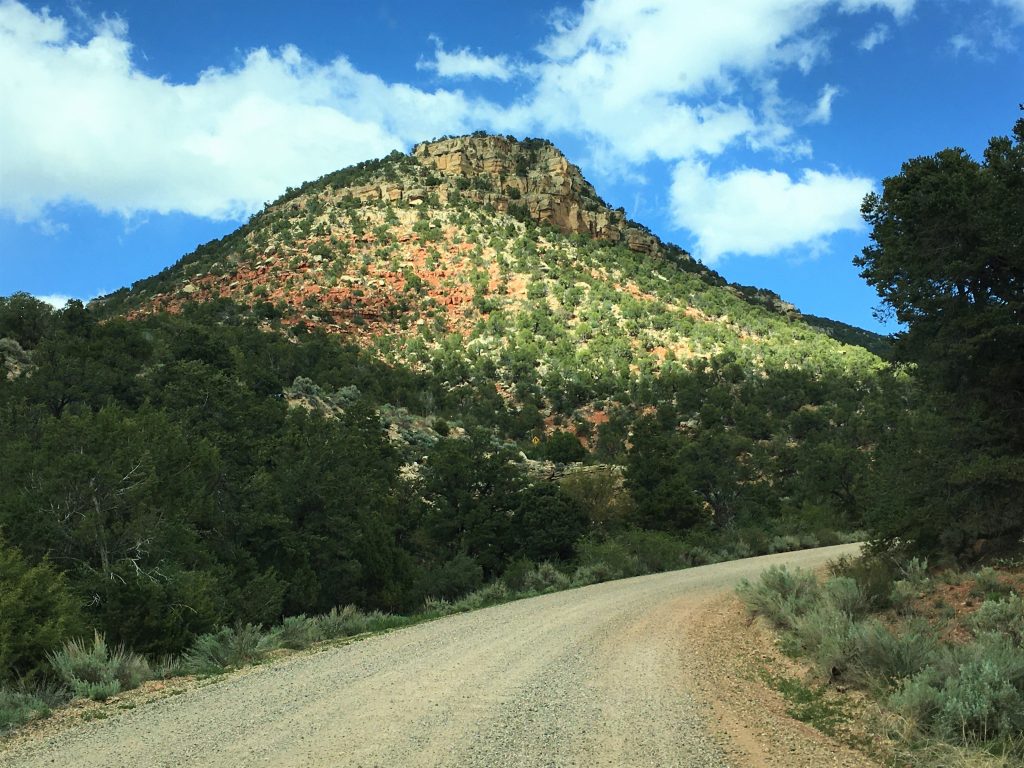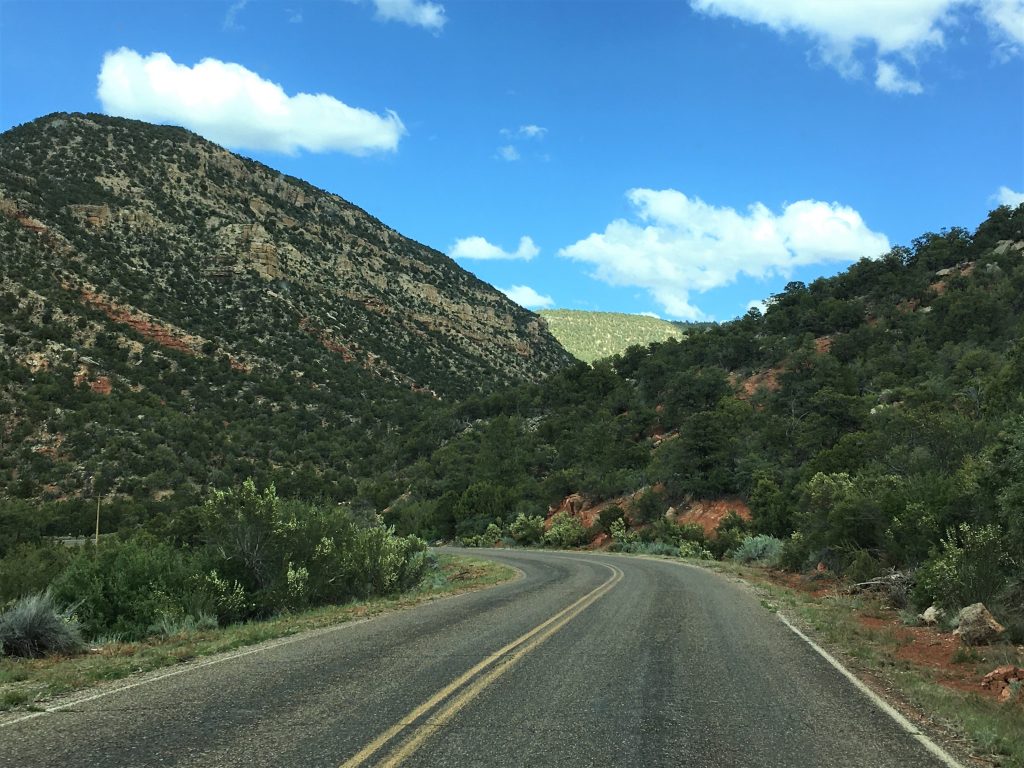Kaibab Camper Village, Fredonia, Arizona (Grand Canyon North Rim)
If you say, “But we knew nothing about this,” does not He who weighs the heart perceive it? Does not He who guards your life know it? Will He not repay each person according to what he has done? ~ Proverbs 24:12
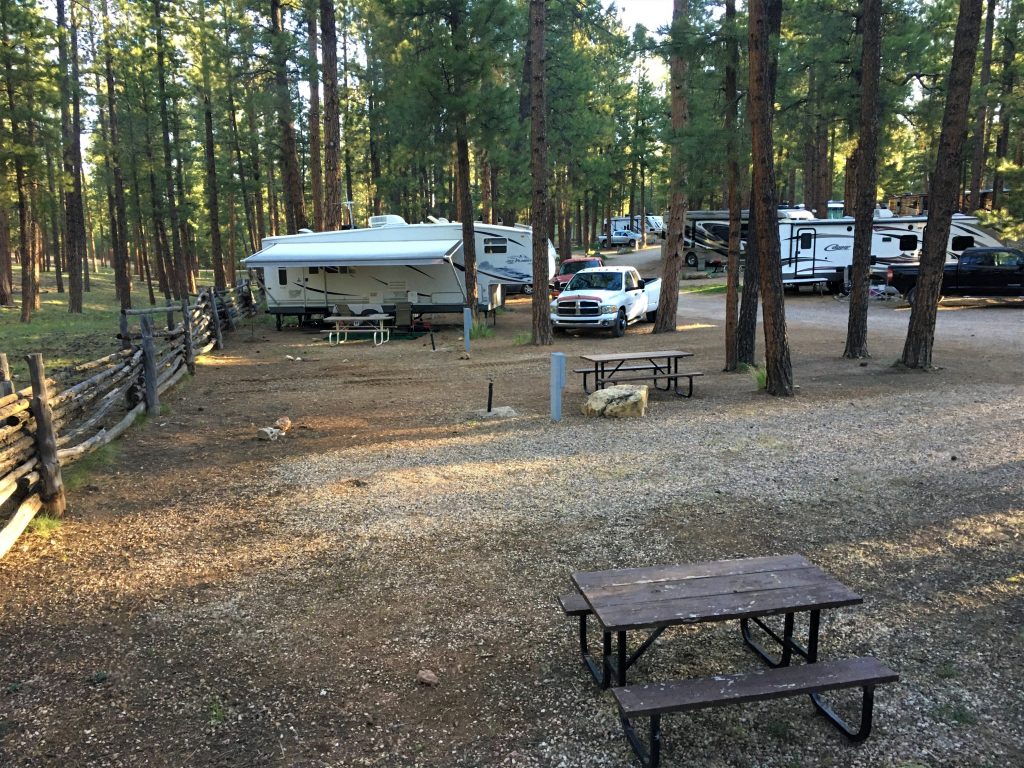
I know the address says Fredonia, but we’re actually parked in Jacob Lake.
When I woke up this morning, I began my regular routine of praise and thankfulness for a God Who loves, forgives and delights in providing God Moments throughout my days. And one of the things I distinctly remember saying this morning was, “I can’t wait to see what wondrous things You will show me today!”
About an hour later, my eyes fell upon the first wondrous thing!
As you can see from the picture, this campground is filled with pine trees, and hanging on the side of one of those trees, fairly close to us, was this gigantic, dark-colored squirrel with a huge pure white tail! I yelled for Blaine to look out the window so he could witness it as well. We watched as it then quickly climbed to the top. Sadly, neither of us were in a position to take a picture.
But!
A few minutes later, I was looking out the window again and noticed he was still in the treetop. And then he started back down! So we were not only able to see it again, but snapped a few pictures as well. We needed those. As proof. Because when I looked up this unusual squirrel with a large body, white tail and “rabbit” ears, it seems their sightings are rare!

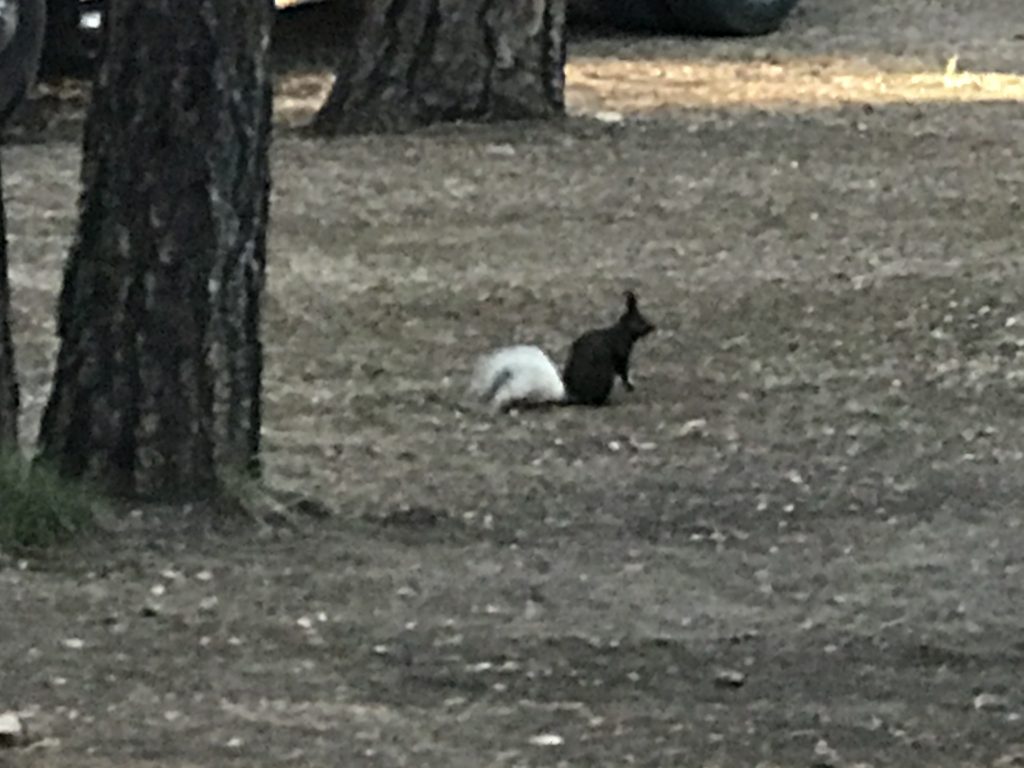
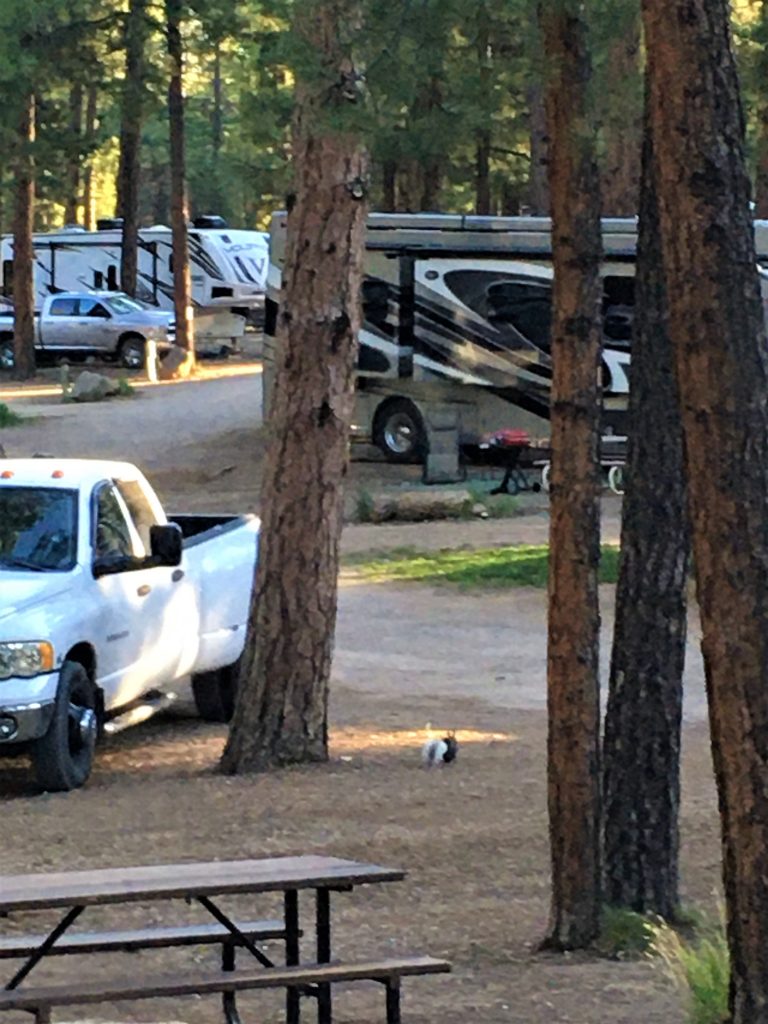
Here’s the information I found on them, from newsforsquirrels.blogspot.com:
Their bodies are about 18-23” long and their tails add an additional 7-10” to their length and they weigh about 1 ½ pounds.
Compare that to the gray squirrels in Ohio which are 8-10” long with 7-10” tails and ¾ – 1 pound in weight. Kinda funny that their tails are the same length. 😊
Kaibab squirrels are much quieter than gray squirrels. Also, instead of traveling from tree to tree, the Kaibabs travel more on the ground instead of from limb to limb like the gray squirrels.
The Kaibab squirrel is a subspecies of the Albert’s squirrel, a large tree squirrel of the Rocky Mountain and plateau regions of the western United States and Mexico. Kaibab squirrels are found only in northern Arizona, in a small area on the north rim of the Grand Canyon around the town of Jacob Lake.
A dark-colored squirrel with a body about eighteen inches long, a black or dark-gray belly and a dark-brown patch on the back, the Kaibab squirrel has two particularly noticeable features: long ear tufts similar to those of the Eurasian red squirrel; and a startling snow-white tail. Like other Albert’s squirrels, the Kaibab squirrel is completely dependent on ponderosa pine forests. The most important part of its diet consists of the seeds found on the inside of the ponderosa pine cone. It also eats the inner bark from the twigs of this tree, as well as fungi that grow in the vicinity of the trees. Fruit and acorns also make up part of its diet. Unlike most tree squirrels, the Kaibab squirrel does not hide or store food for the winter.
And from atlasobscura.com:
Only able to survive in ponderosa pine forests, the squirrels on the Kaibab Plateau are removed from their brethren by canyons and deserts and are now a genetically unique subspecies, confined to an area of only about 638 square miles. They’re noted for their distinctive charcoal-colored bodies and strikingly white tails.
Unlike squirrels living in many other more developed areas, the Kaibab squirrel doesn’t interact with humans frequently, and largely still avoid crossing paths with any people they notice. So although the Kaibab squirrels are not facing an immediate threat of habitat loss or extinction, they’re elusive, making spotting a Kaibab squirrel a semi-rare event.
Still, despite their tendency to keep to themselves, the Kaibab squirrels have become locally beloved and iconic, gracing the imagery of logos, stickers, coffee mugs, and more on the Kaibab Plateau. In 1965, the Kaibab squirrels and their isolated habitat were recognized for their uniqueness and placed on the National Natural Landmarks Register.

Thank You, Father! For continuing to surprise us!
If you recall, we were supposed to camp for a week inside the South Rim of the Grand Canyon back in April, but as you may also recall, our reservation was cancelled due to COVID-19. This week, we were supposed to be able to visit the North Rim from this campground. But the North Rim is closed indefinitely. Fortunately, the campground was nice enough to tell us of the Rainbow Rim Trail that’s nearby. It’s actually a 38-mile one-way hiking trail, but you can drive an unmaintained dirt/gravel road, stop at certain viewpoints, walk a short distance on a stick/boot-worthy trail, and see the Grand Canyon!
So our pictures today, are most likely as close as you (or we) will be to the Grand Canyon. We’re sooo grateful to at least be able to have these vantage points! And you’ll just have to trust me – – it was sooo much more awe-inspiring than we could photograph – – especially with one hand on our hat! It was extremely windy today!
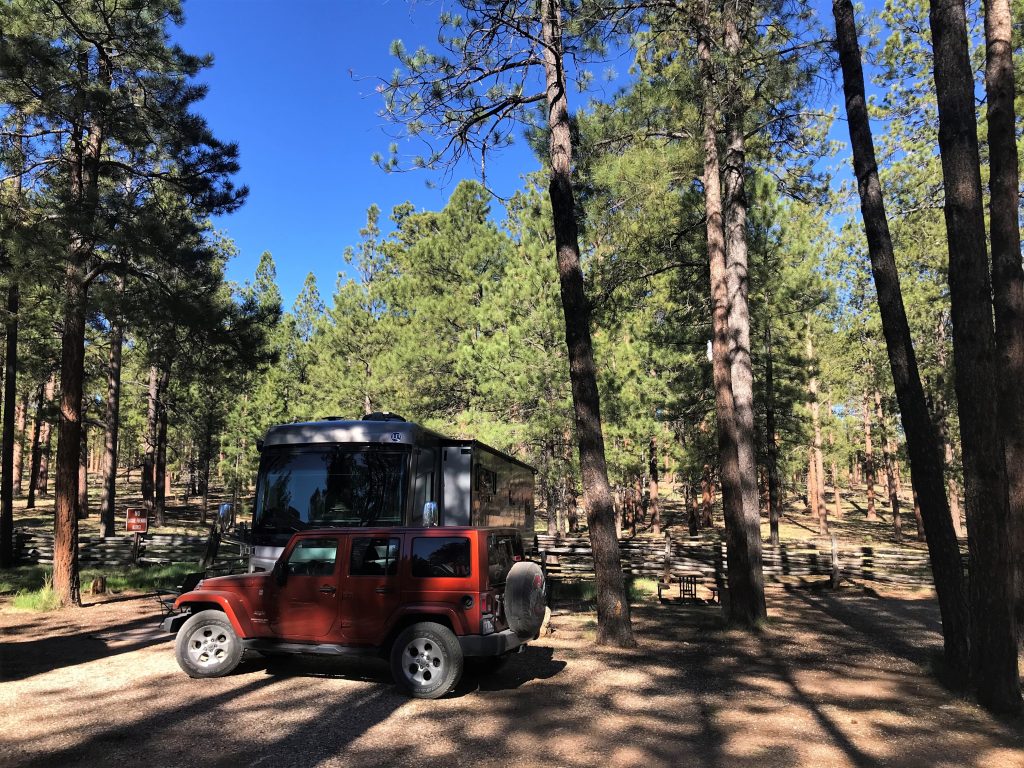
That close neighbor is just out of frame on the left.
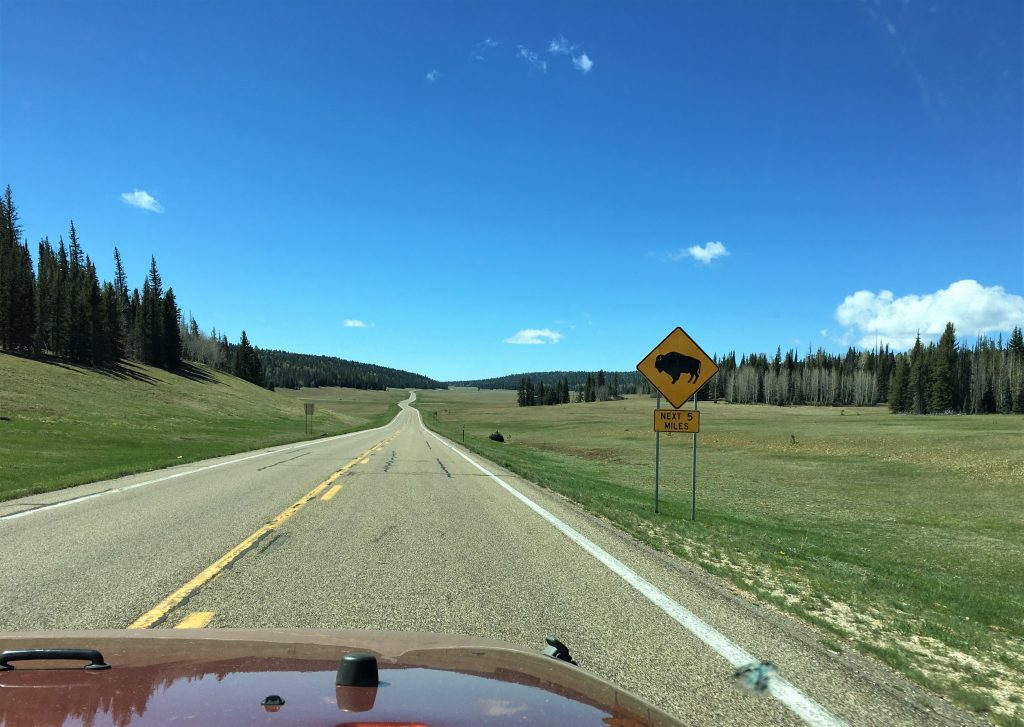
Unfortunately, we never saw a one. : (
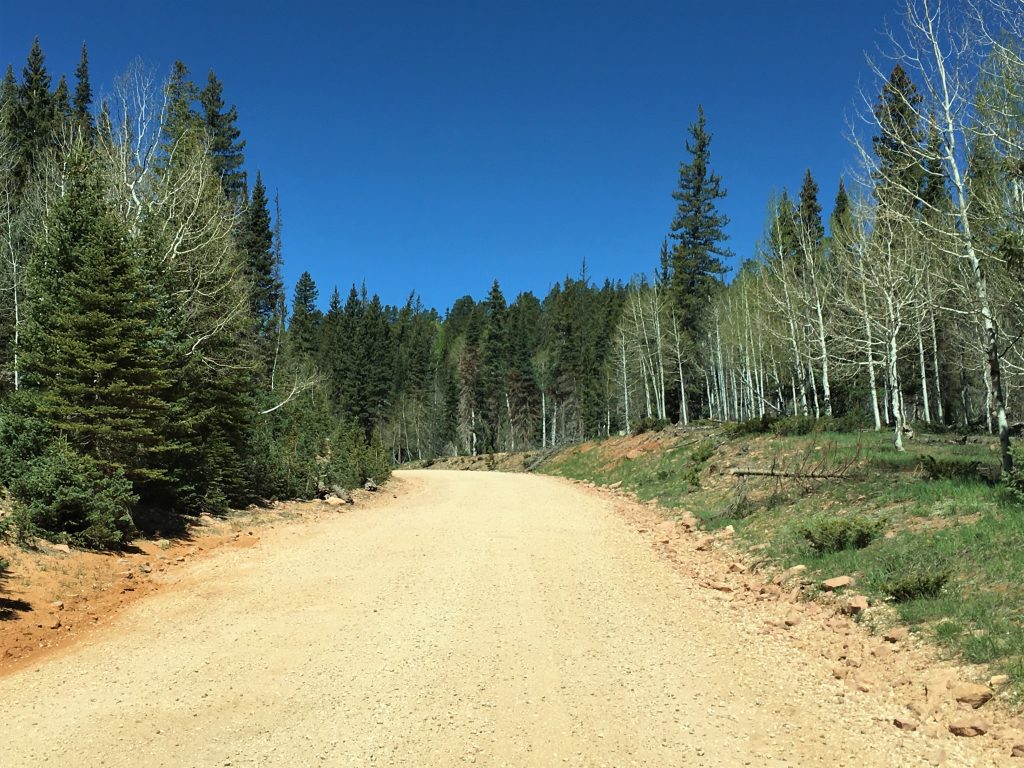

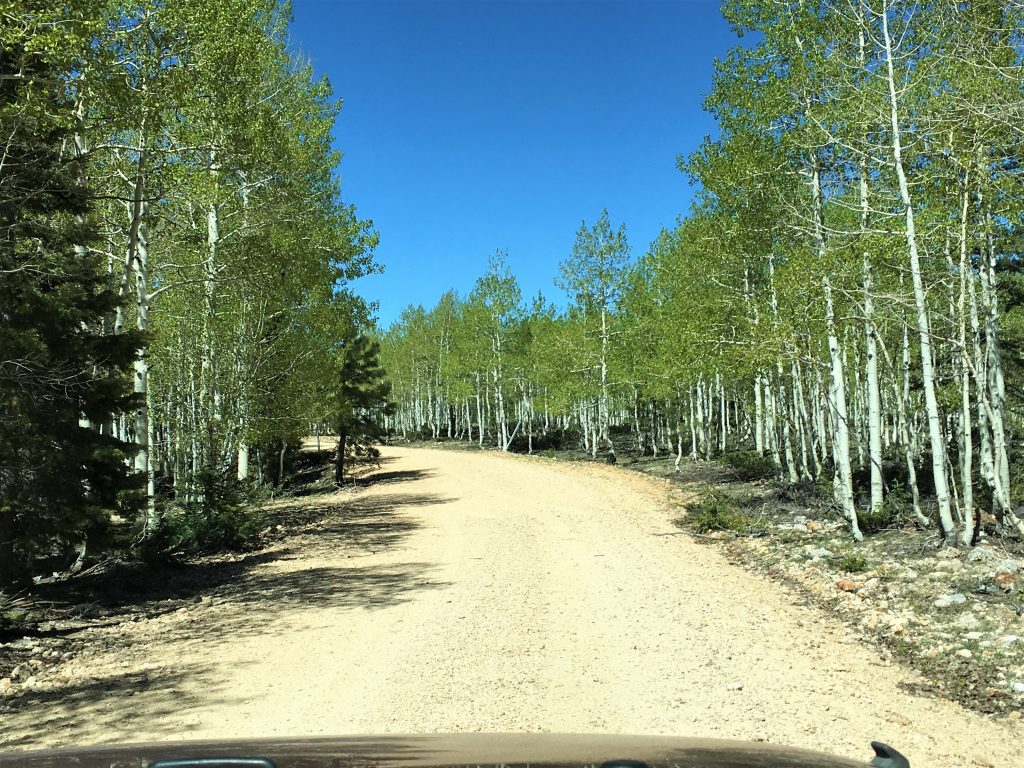


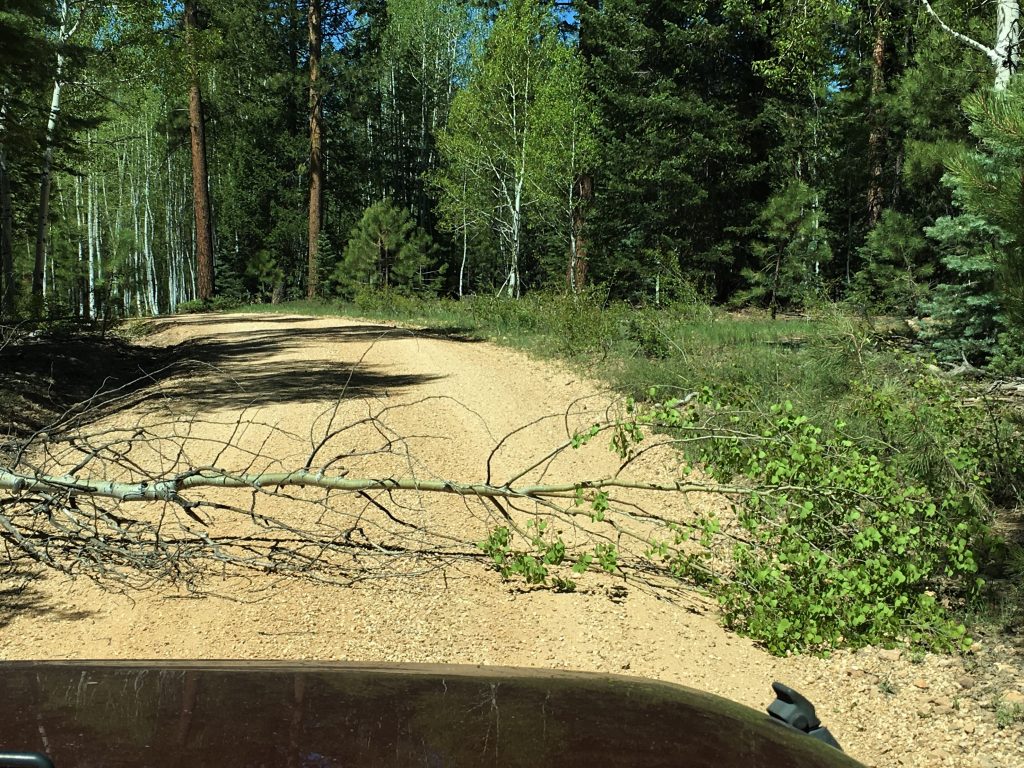
Blaine had to manhandle several trees today during our backroads drive; the aftermath of yesterday’s high winds, that continued into today. In addition, at one point while we were driving, a deer ran across the road, almost too fast to see!
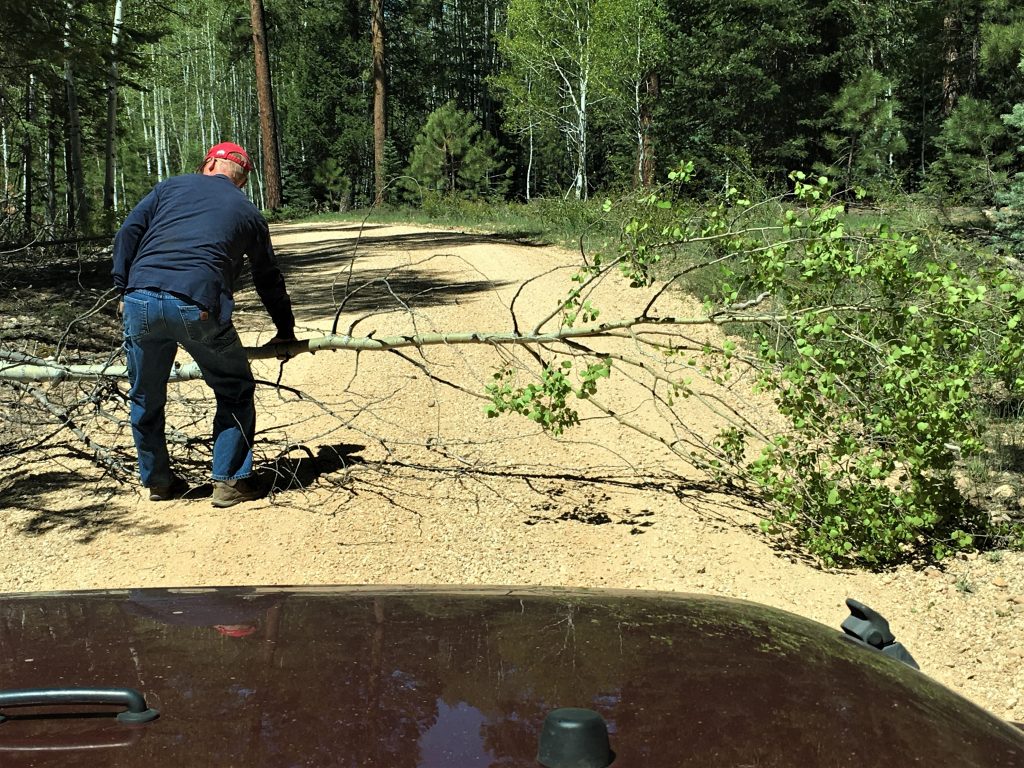
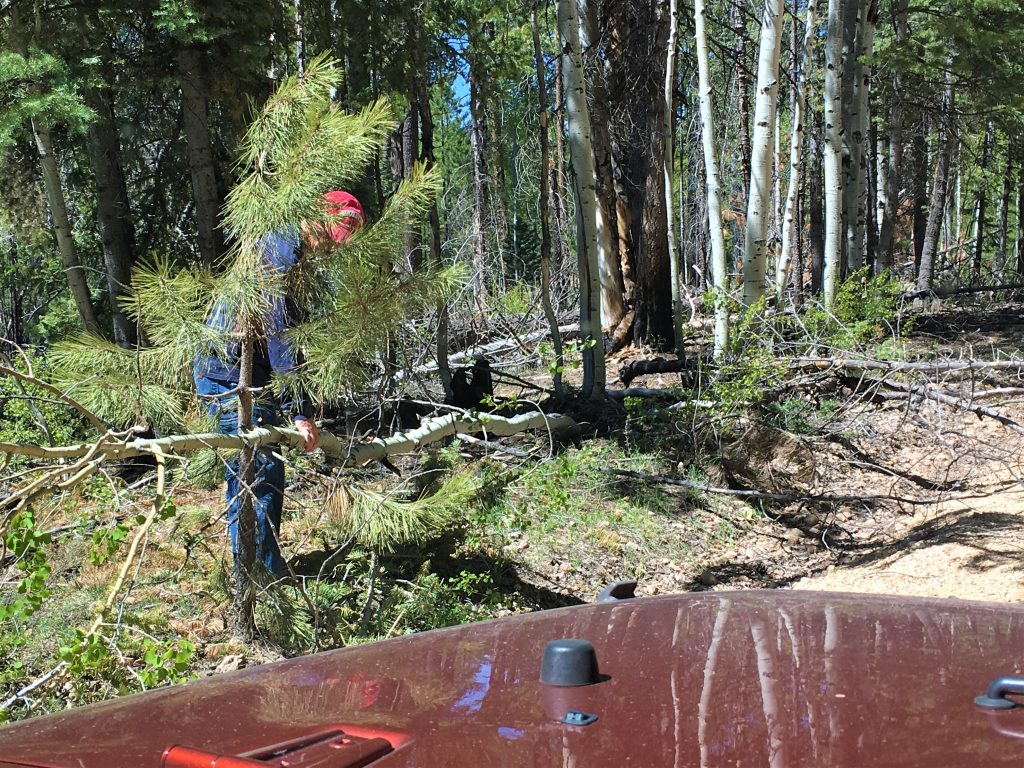
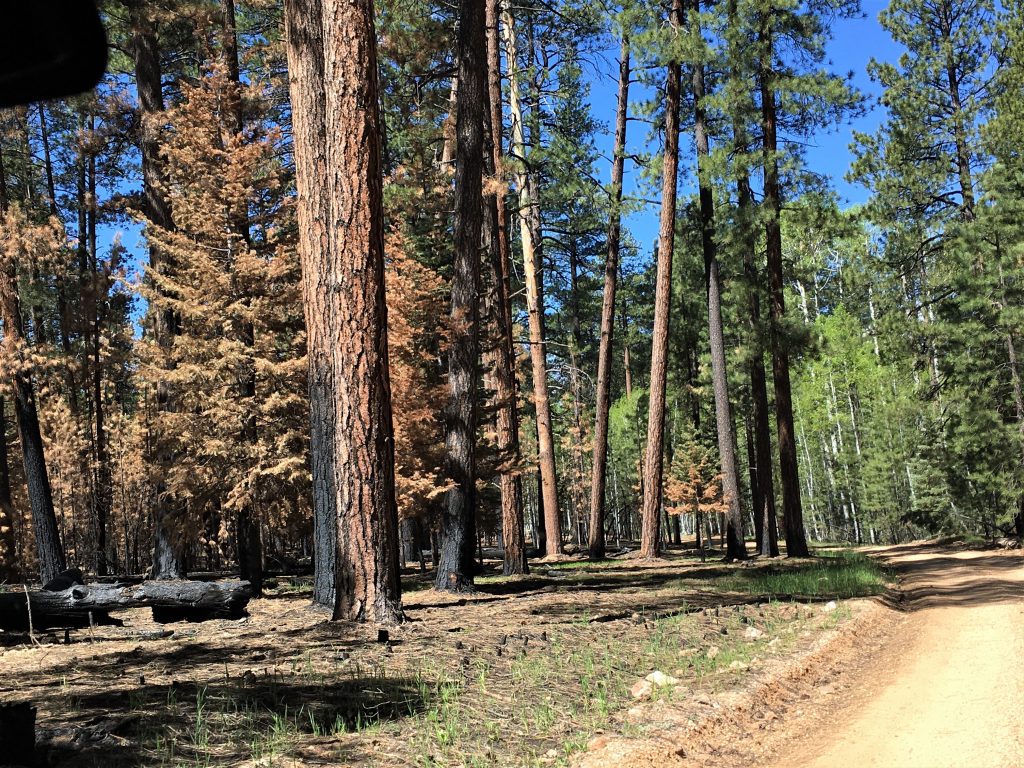
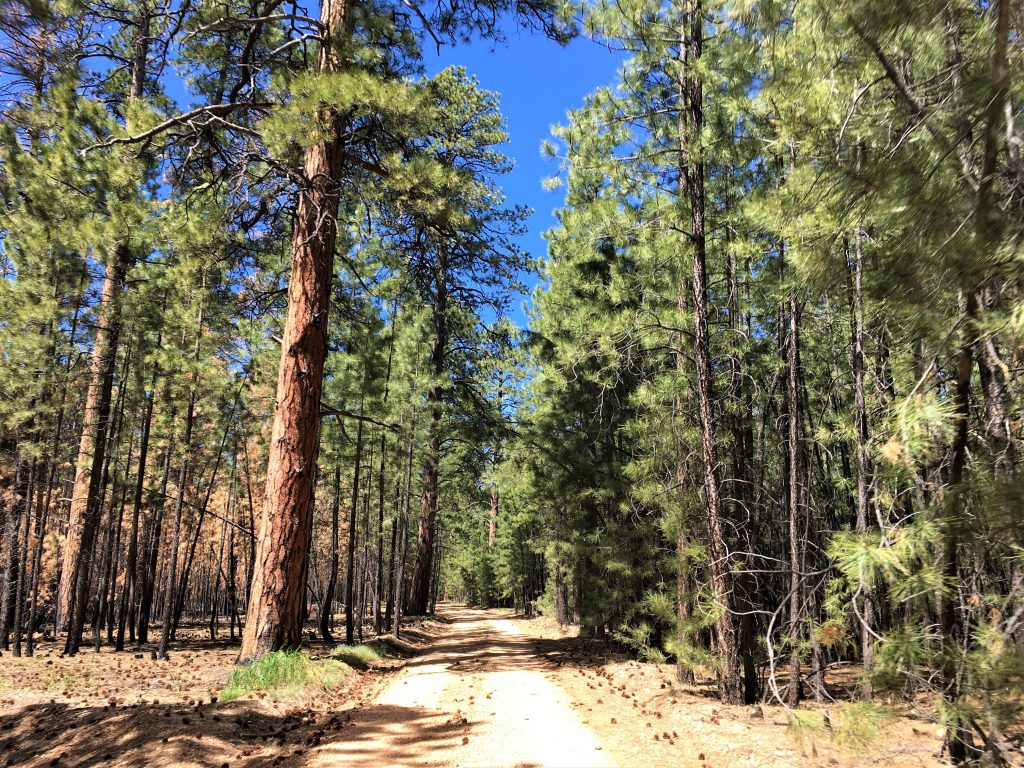
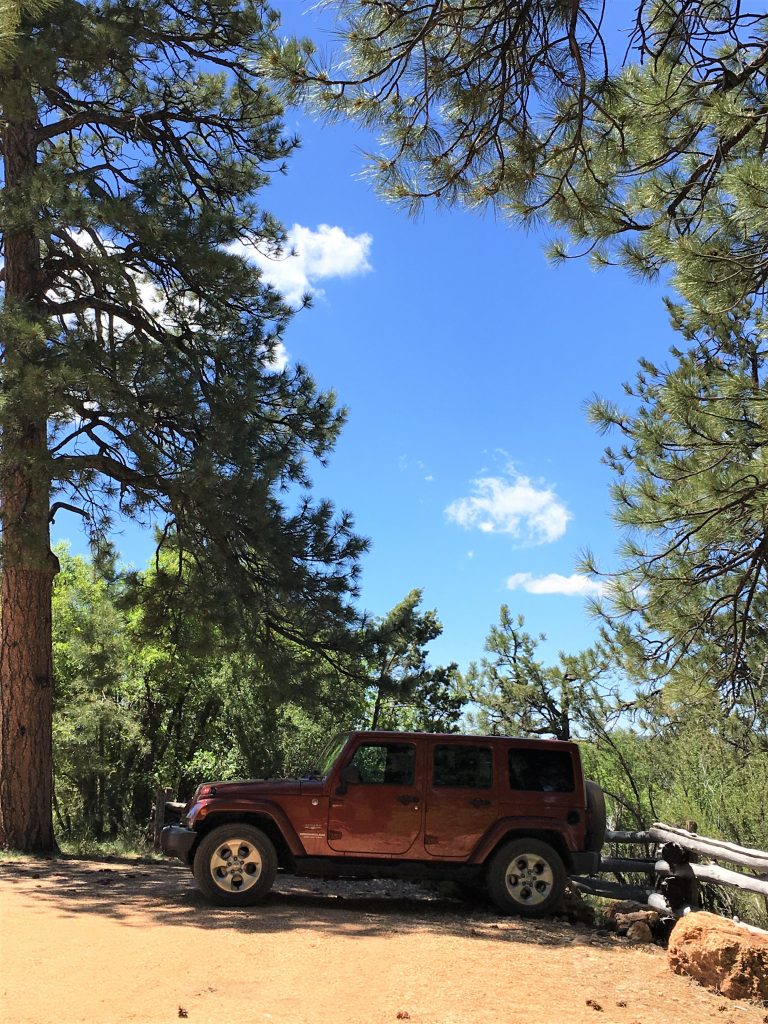
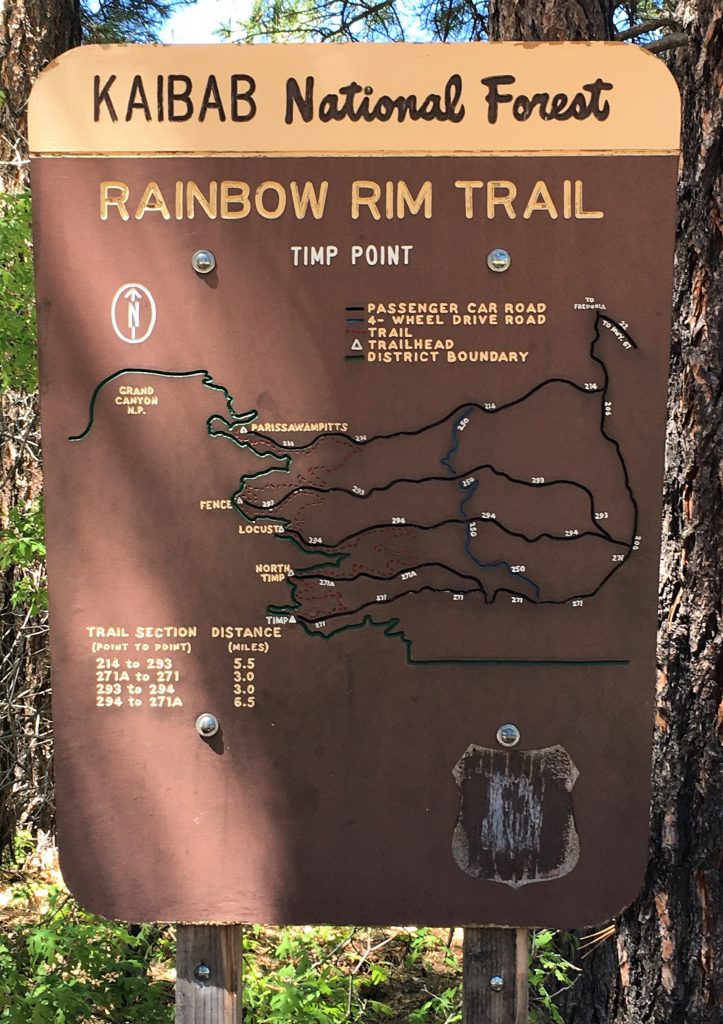
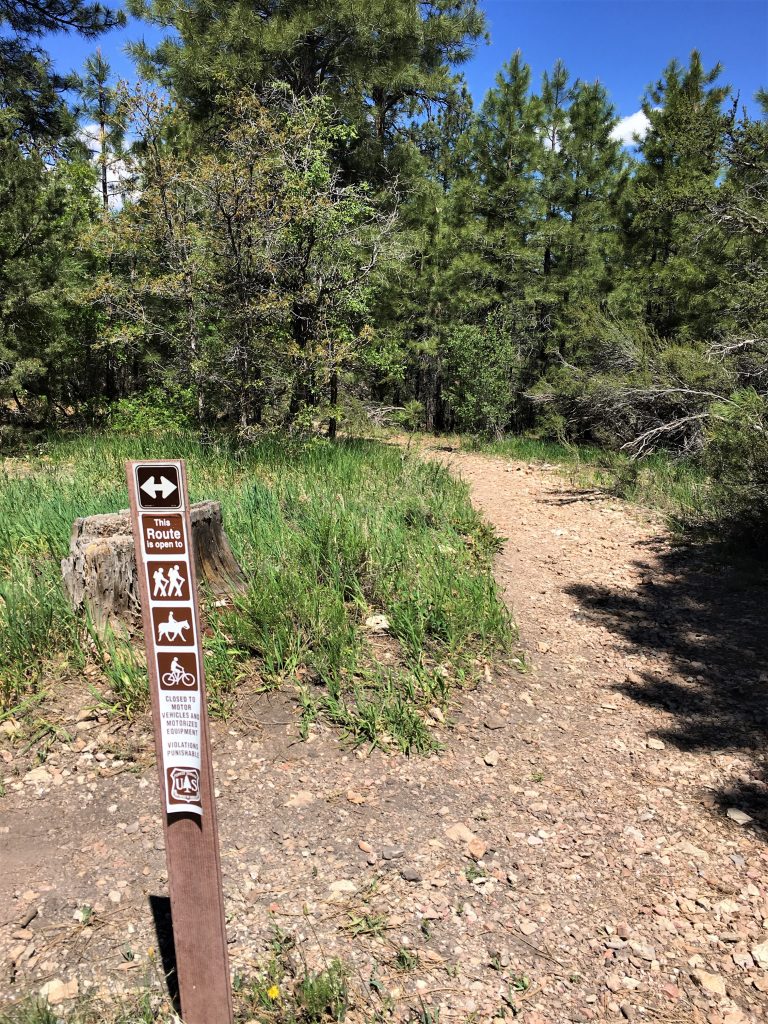
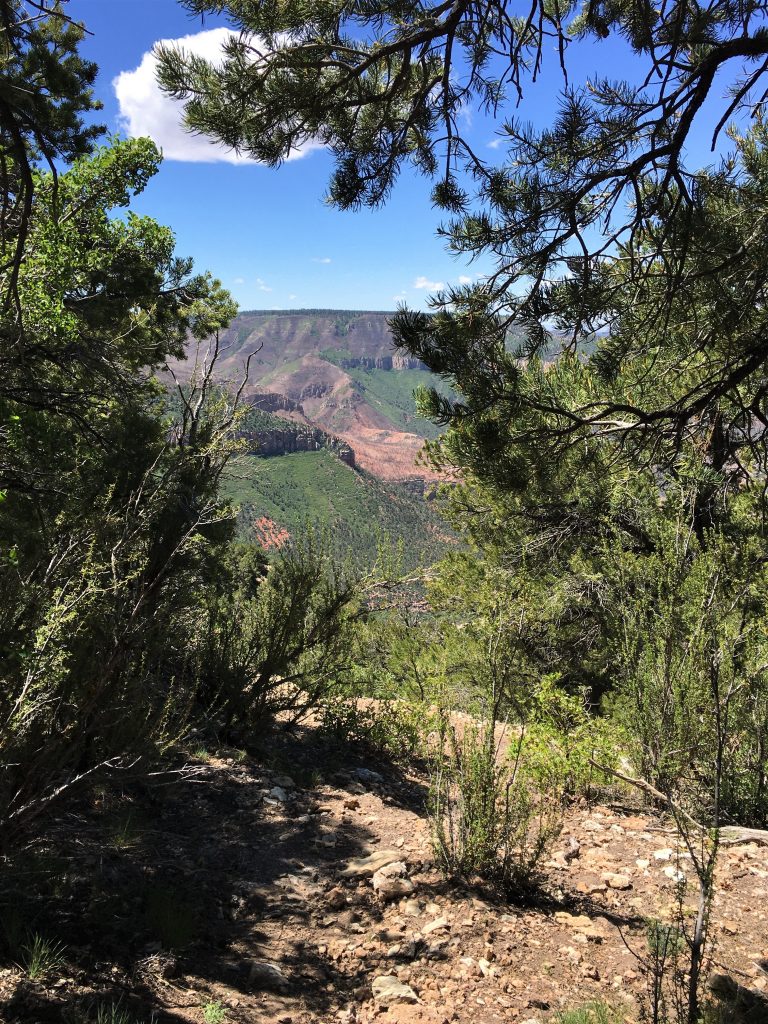
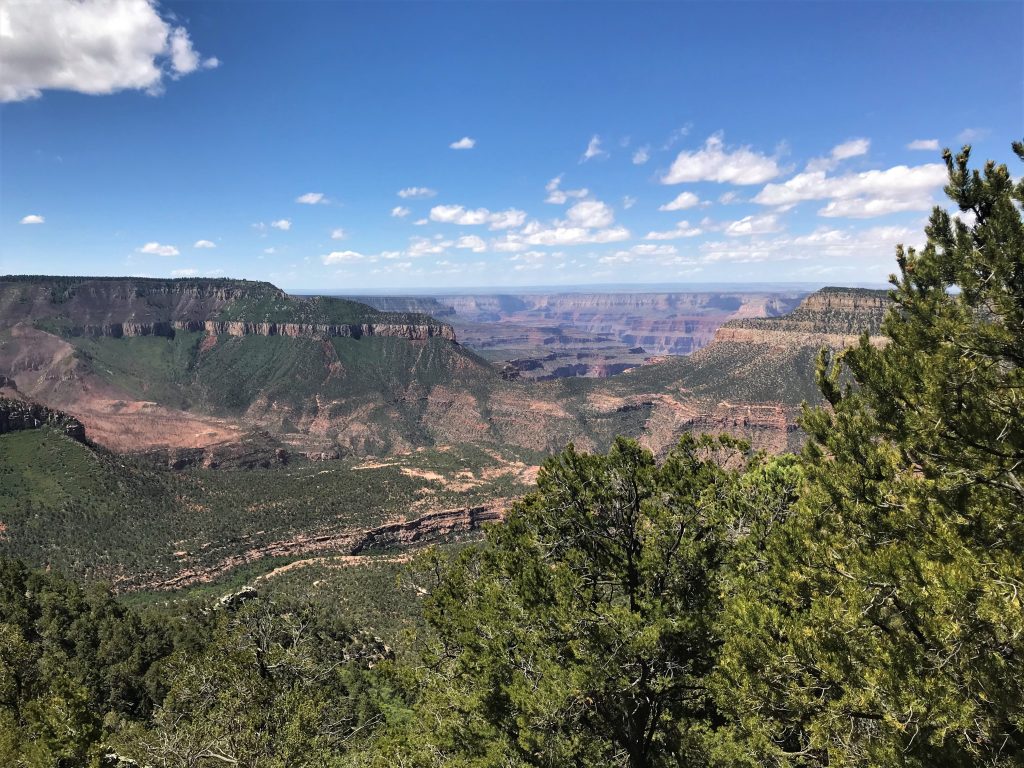
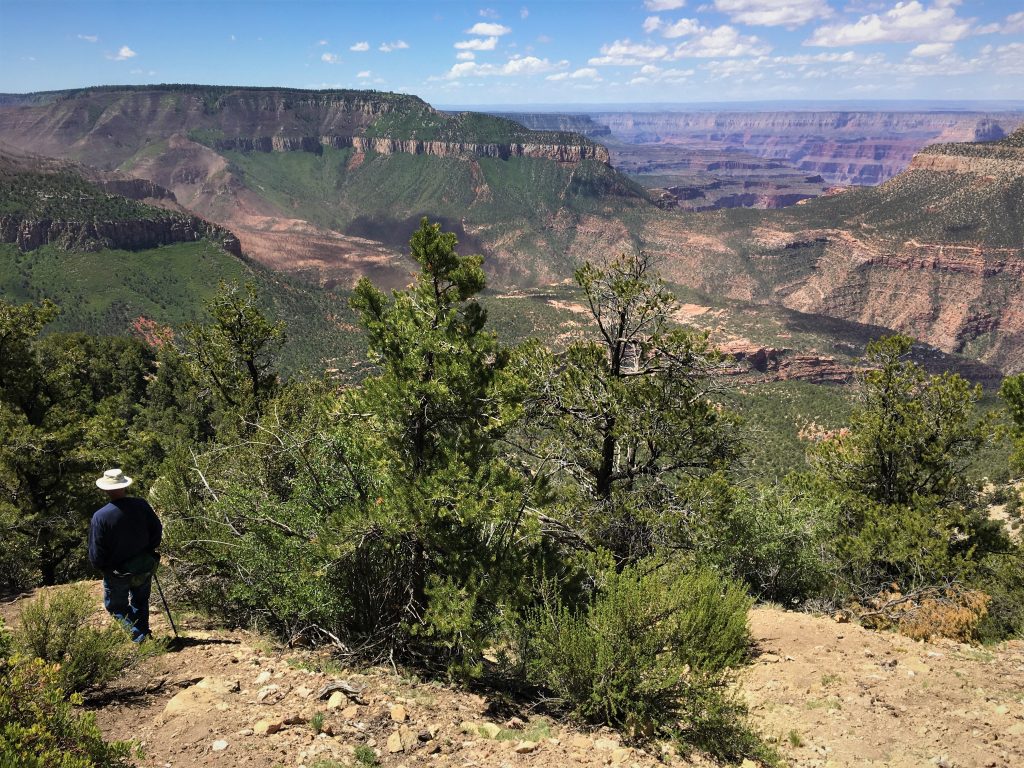
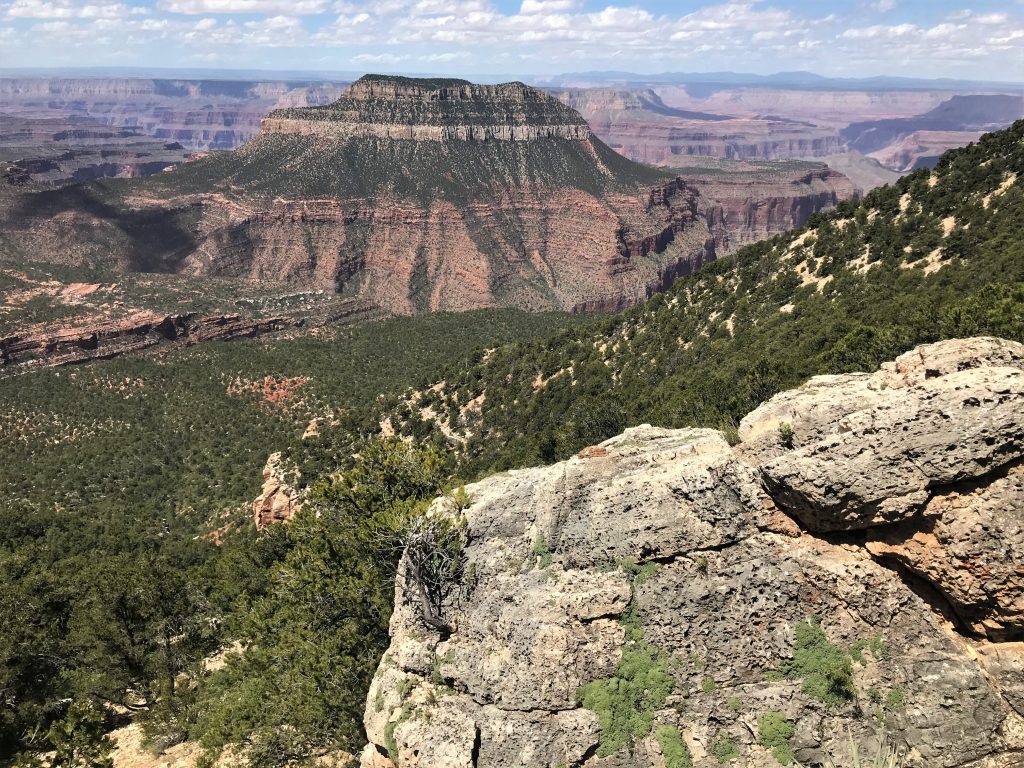
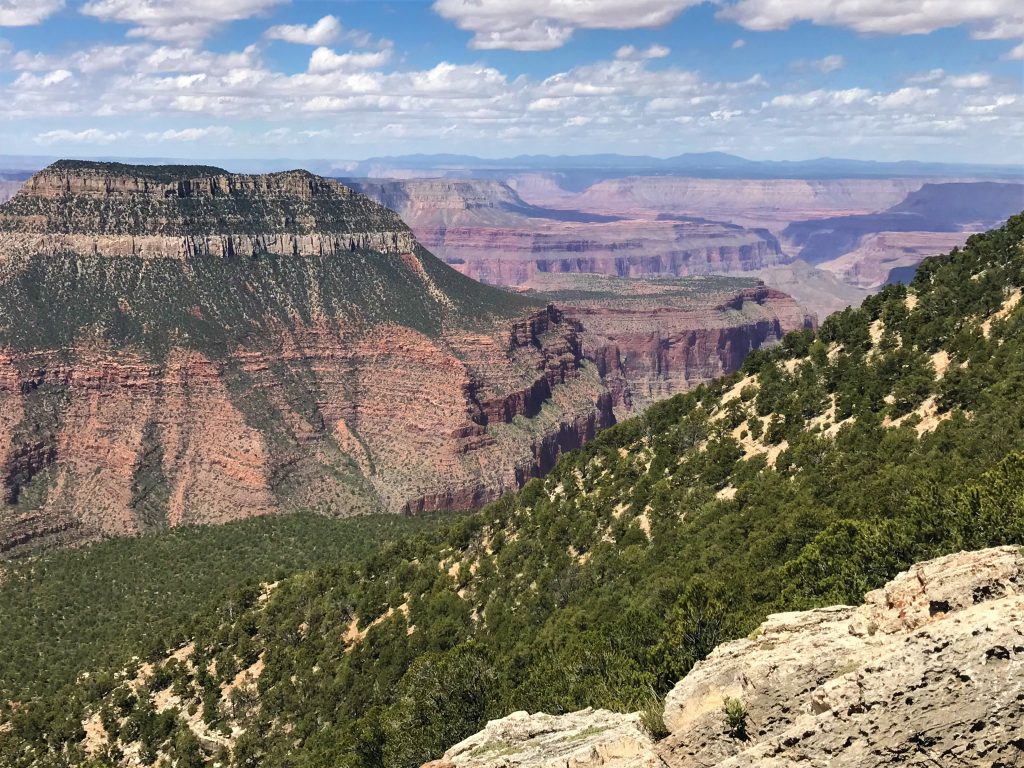
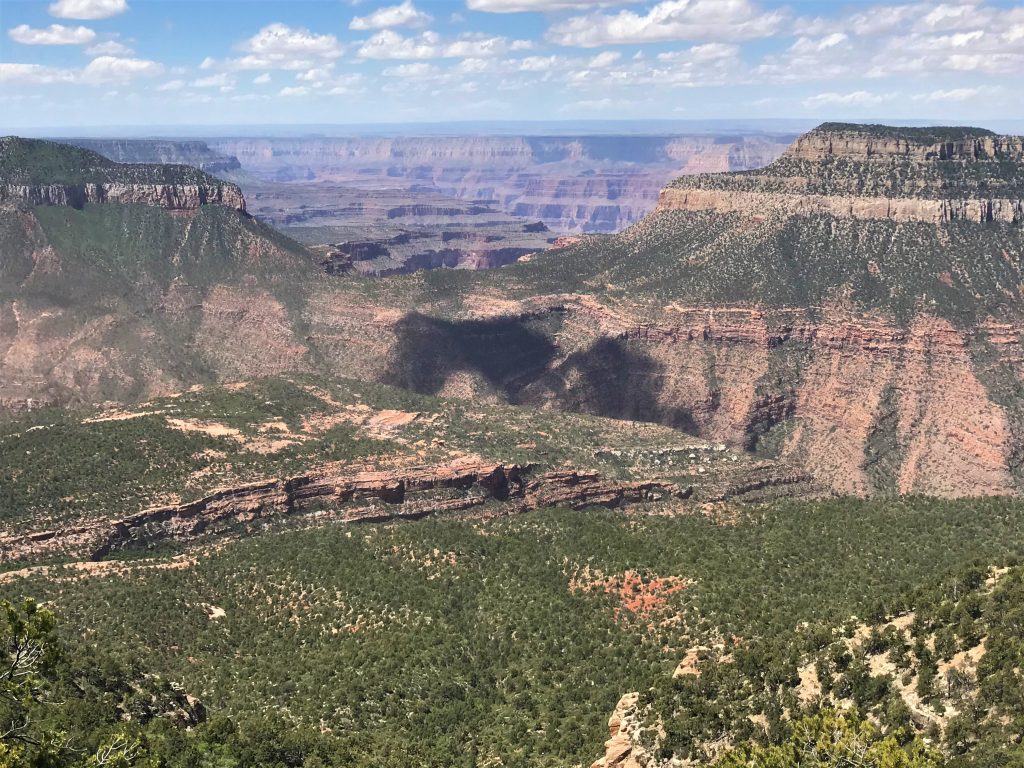
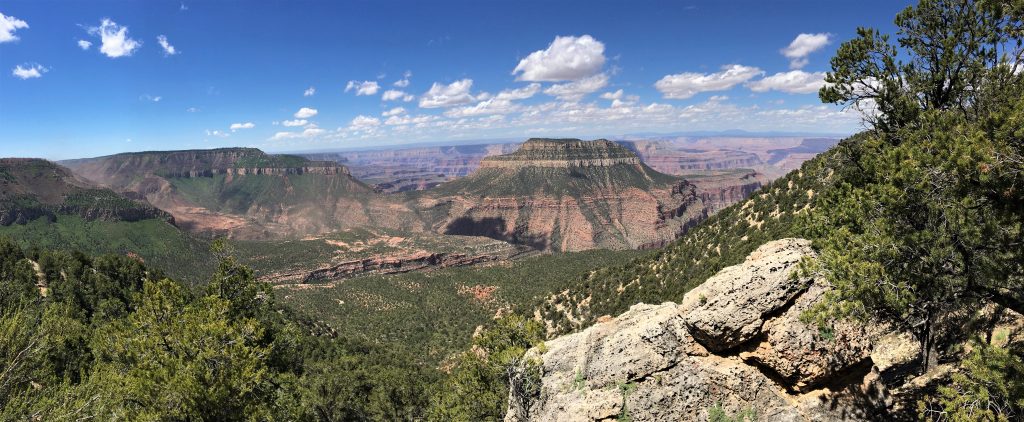
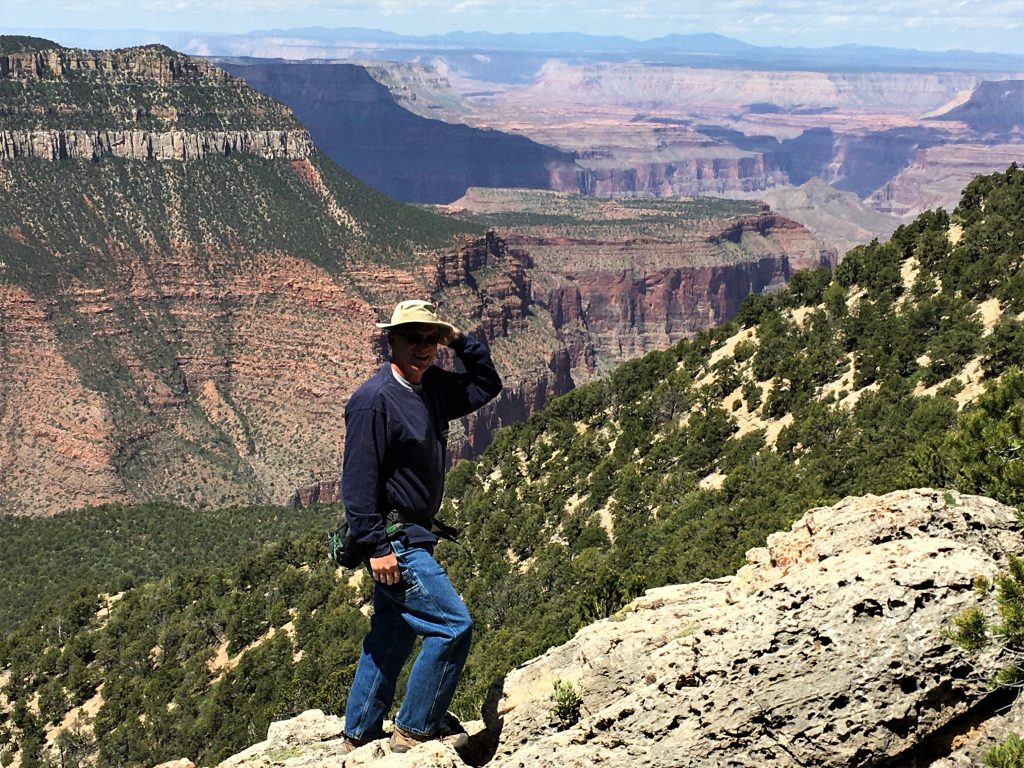

Even with a strap on!
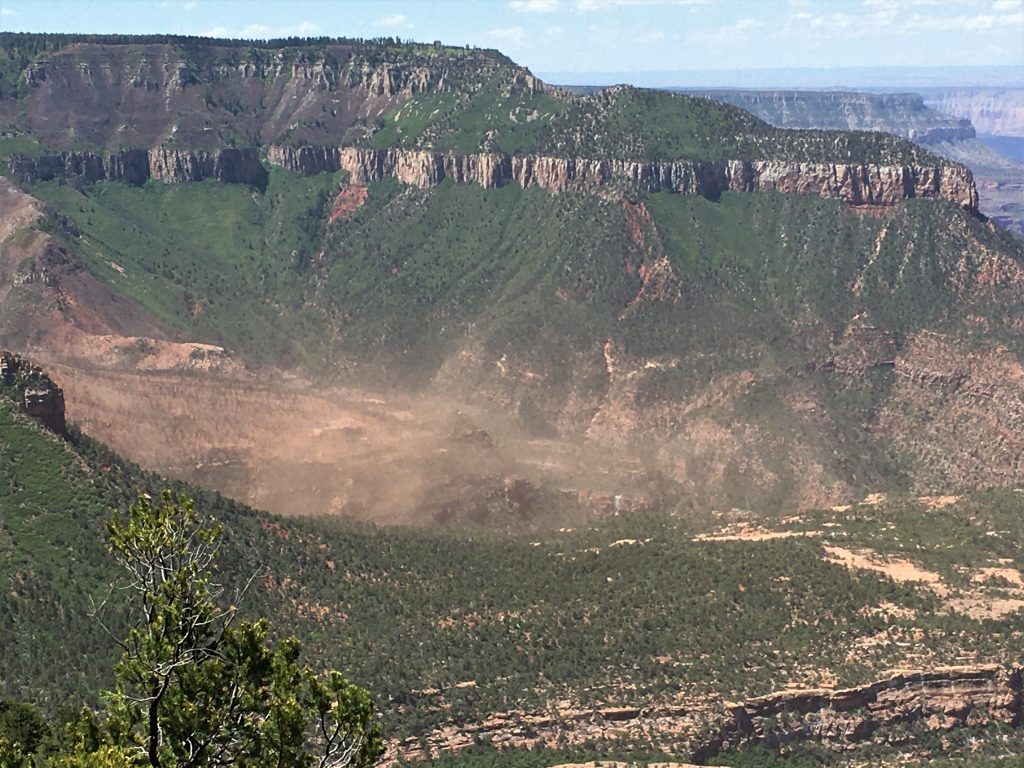
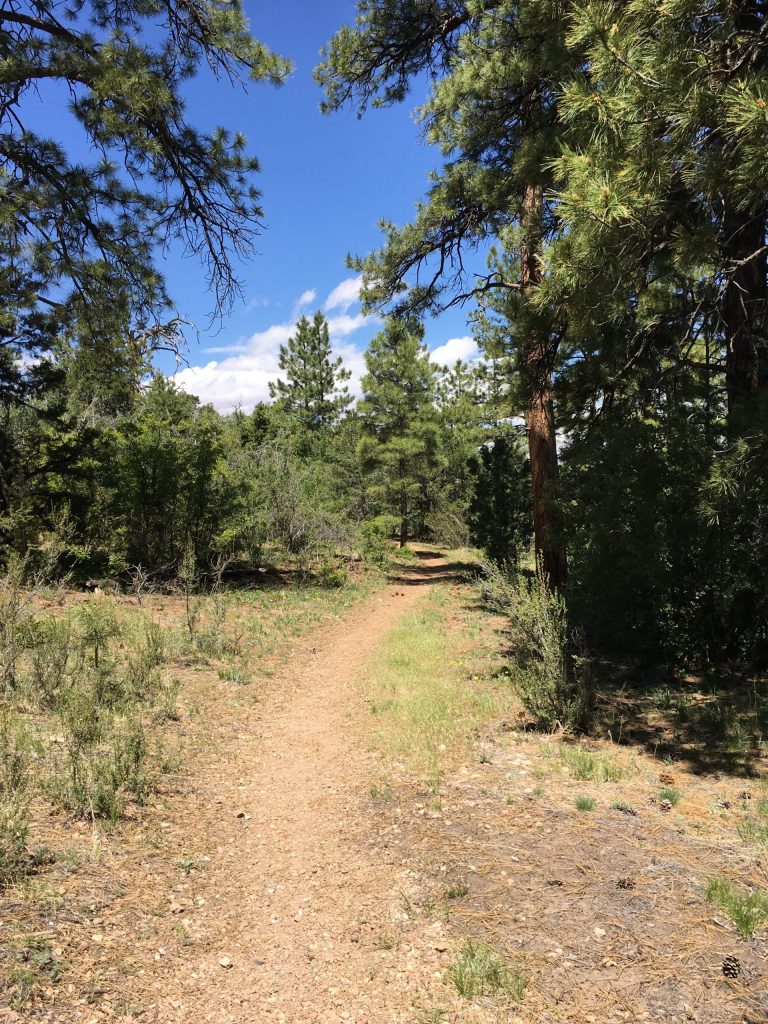
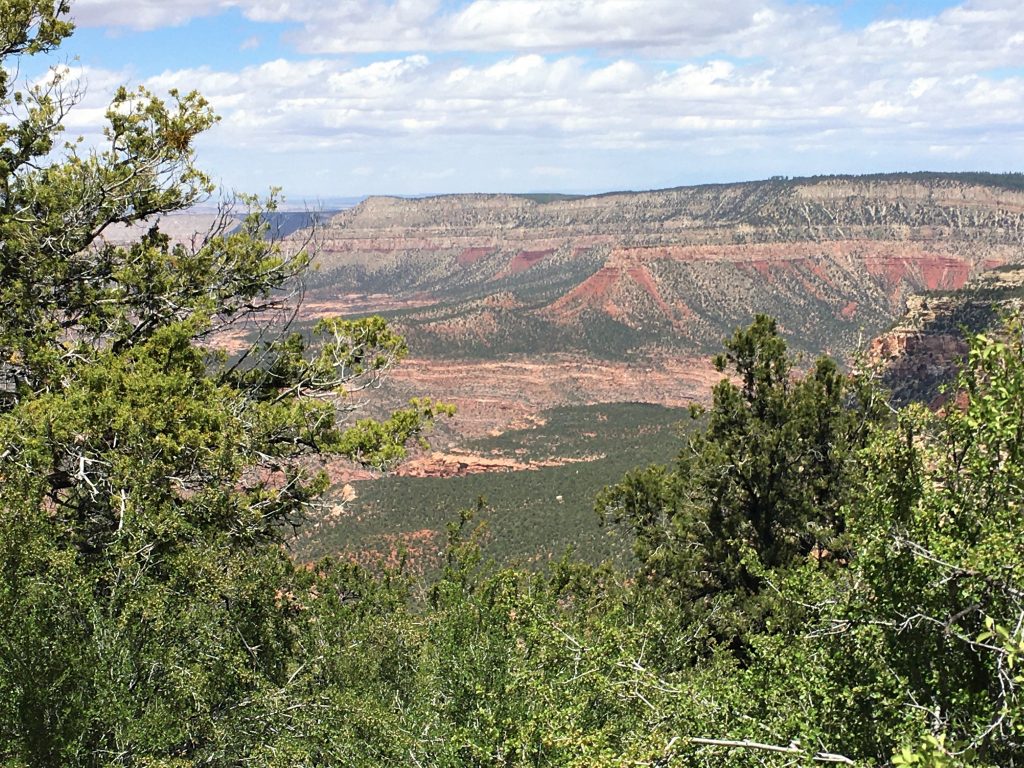
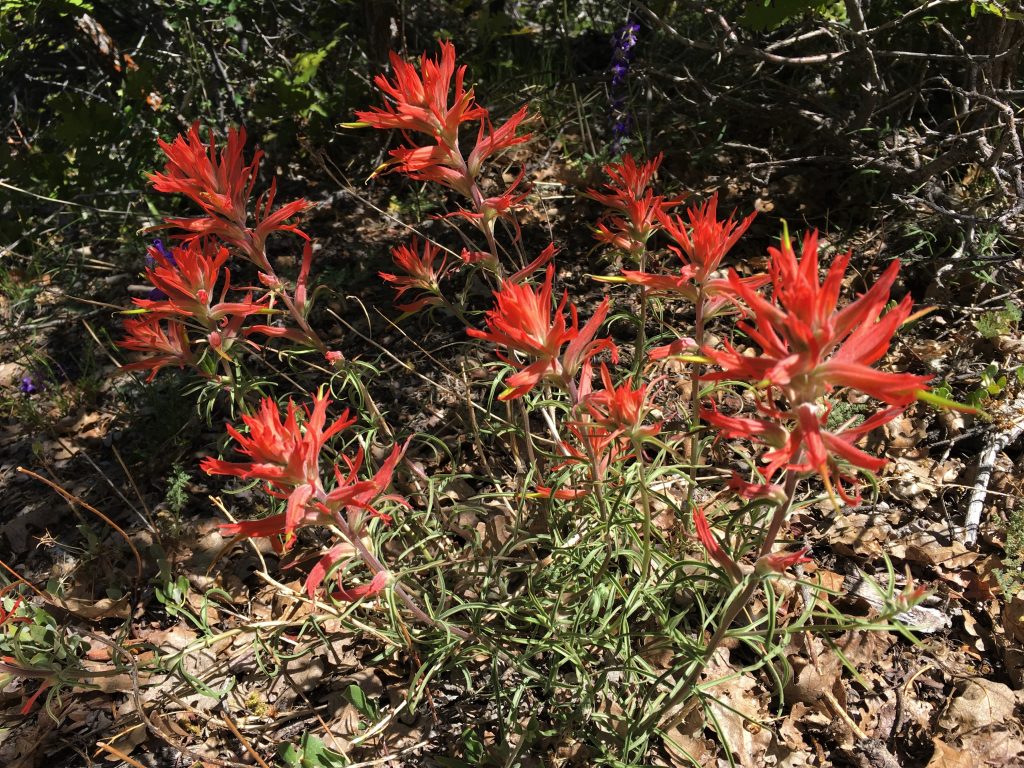
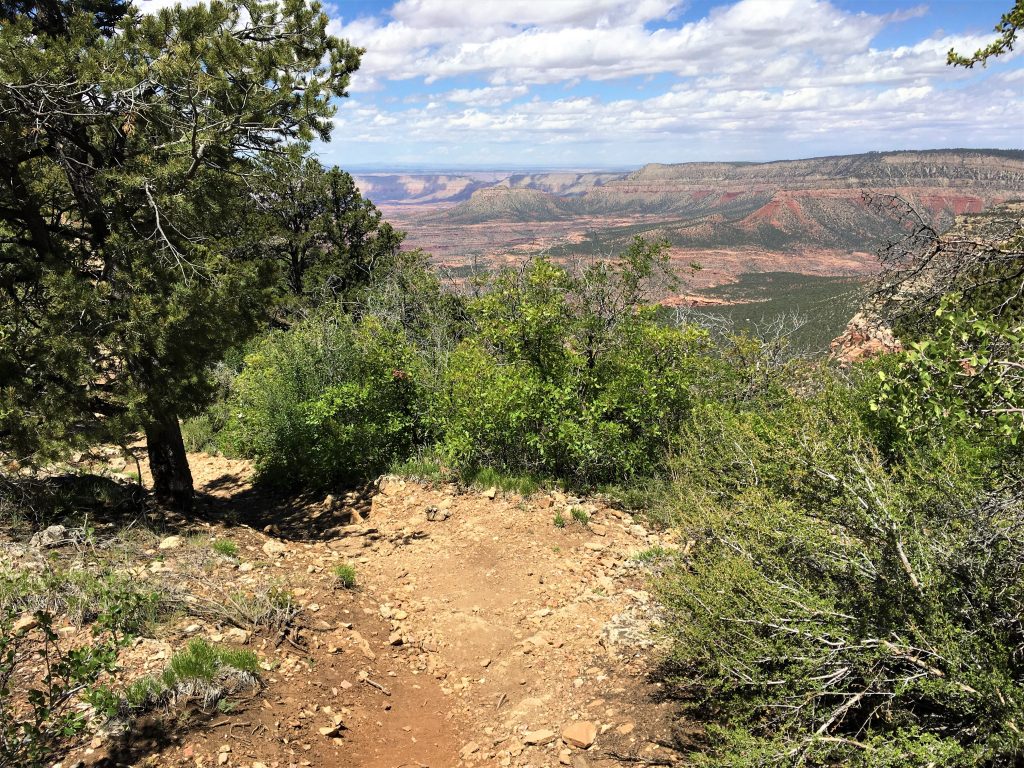

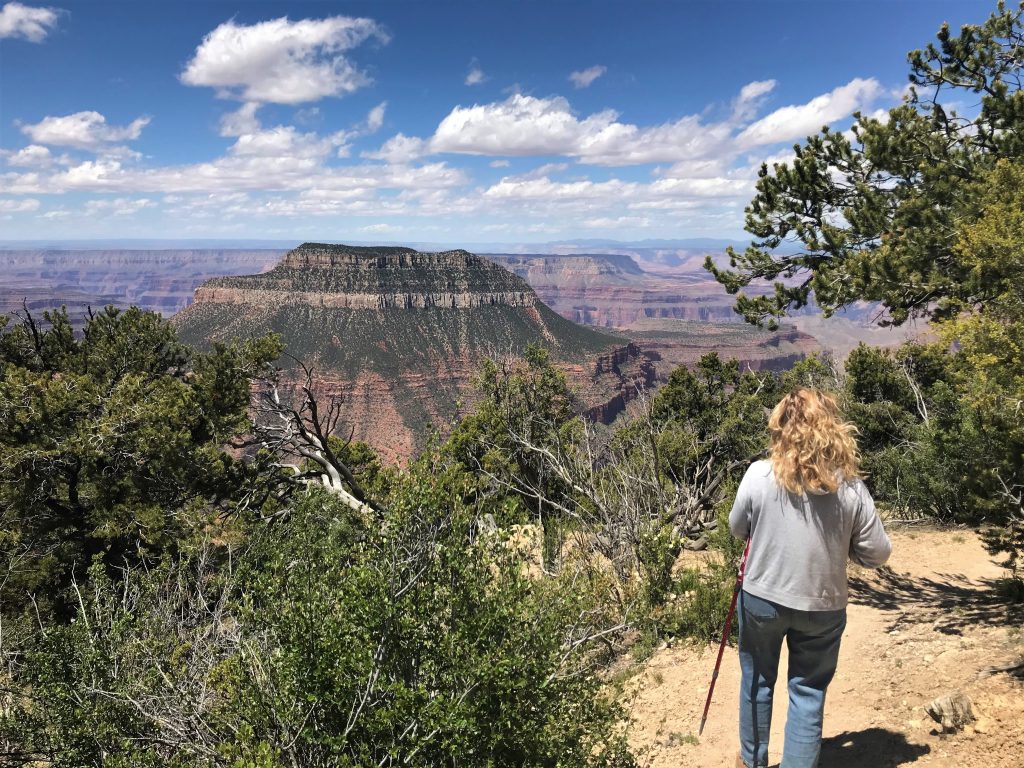
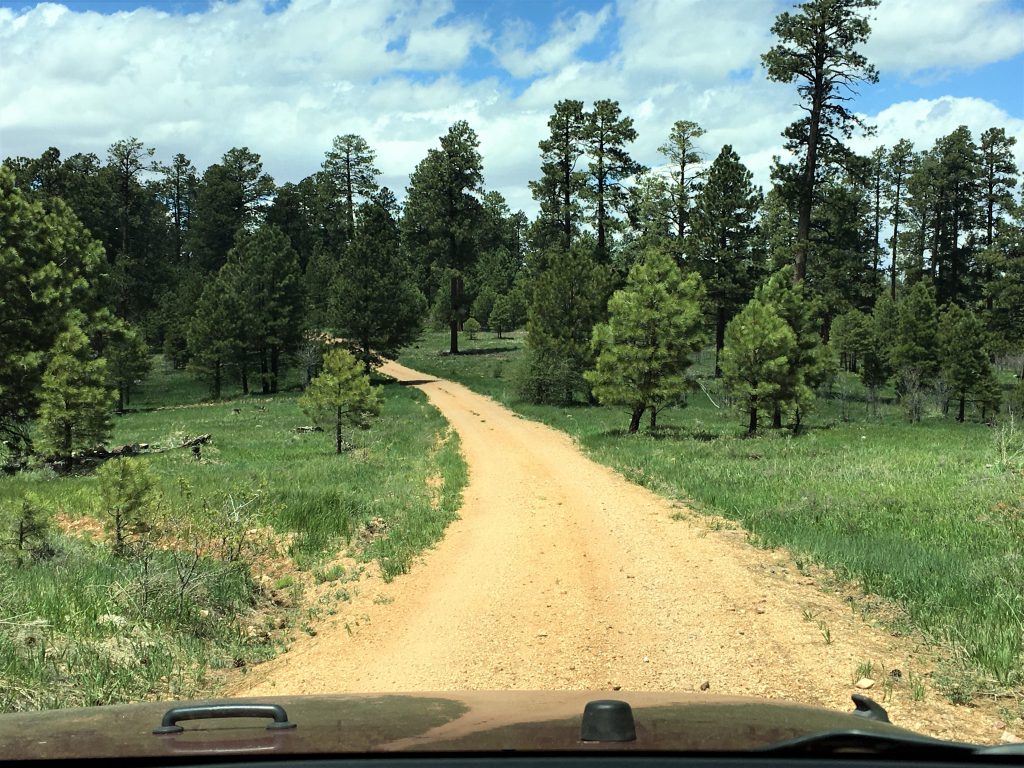
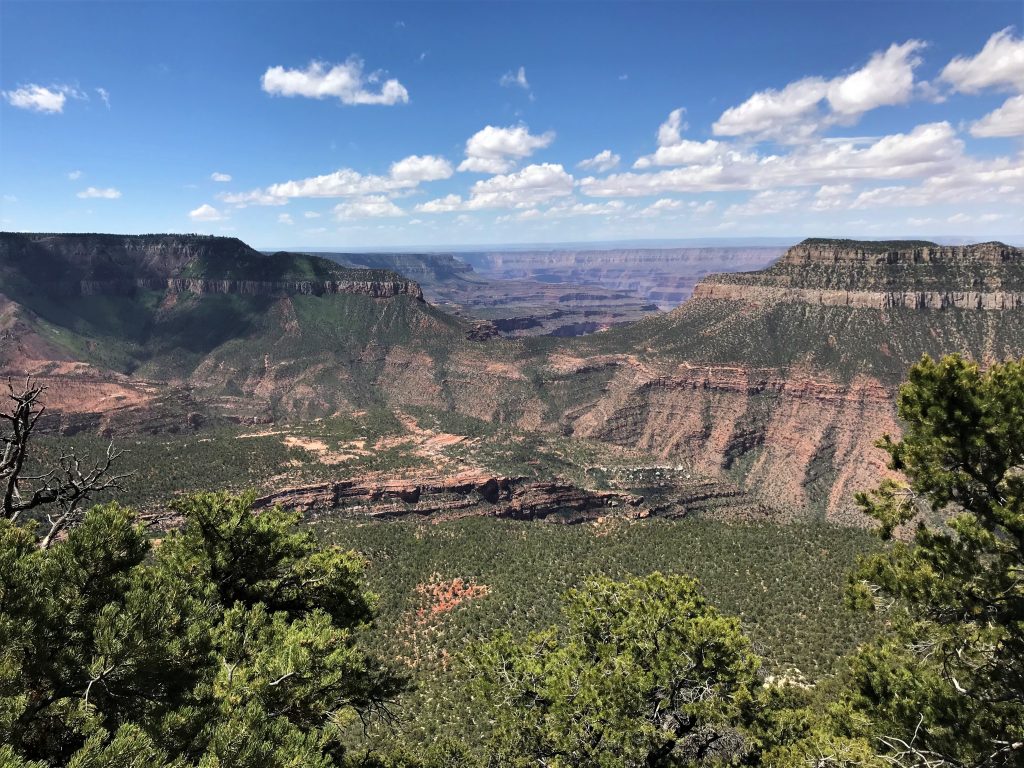
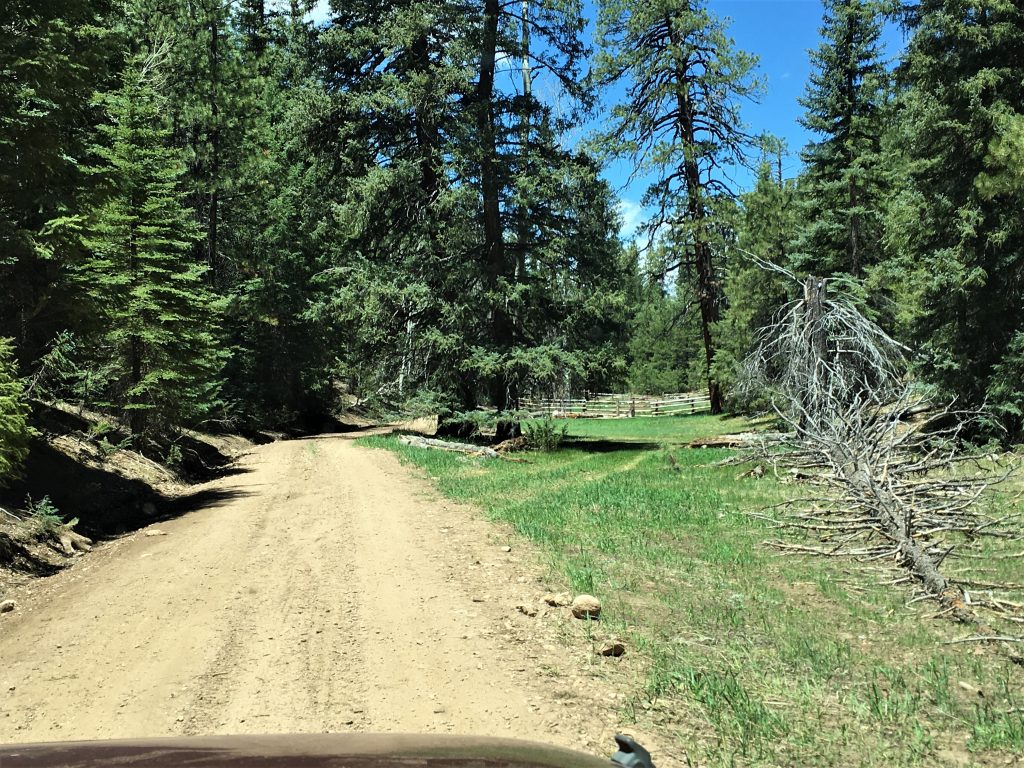
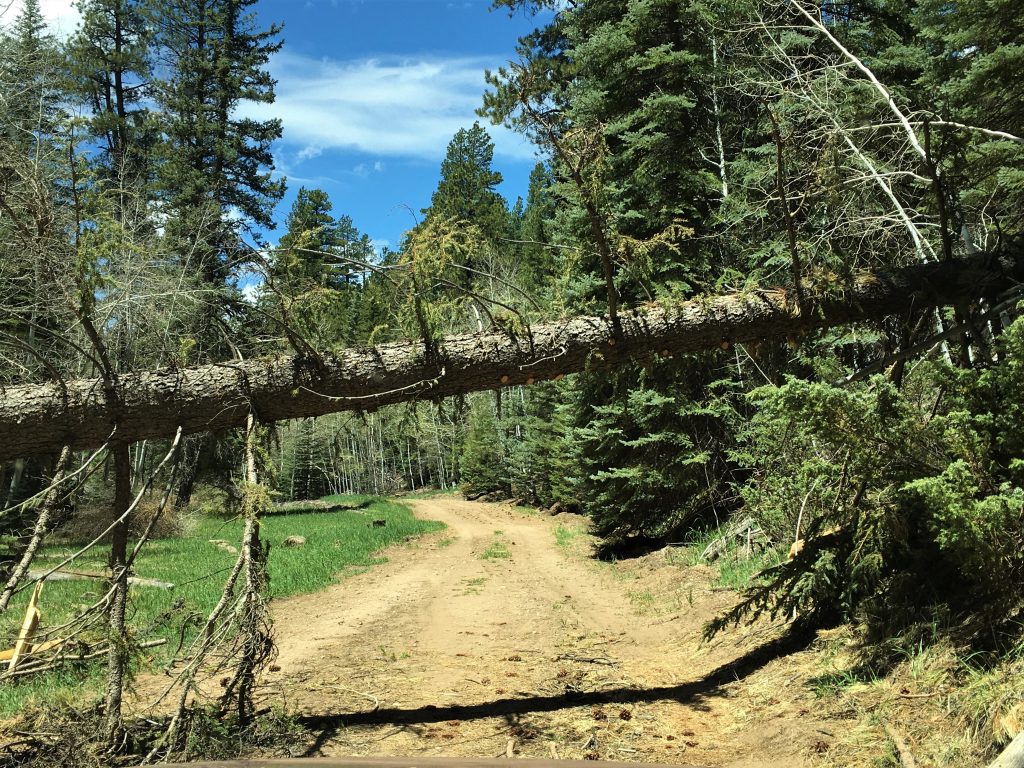
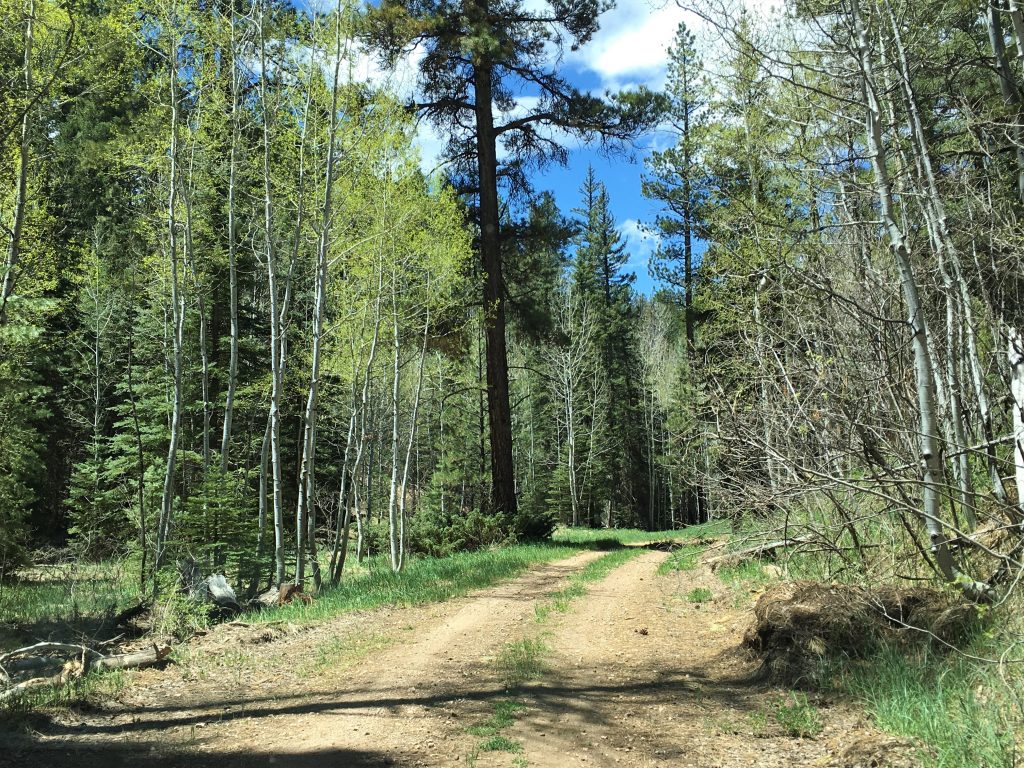
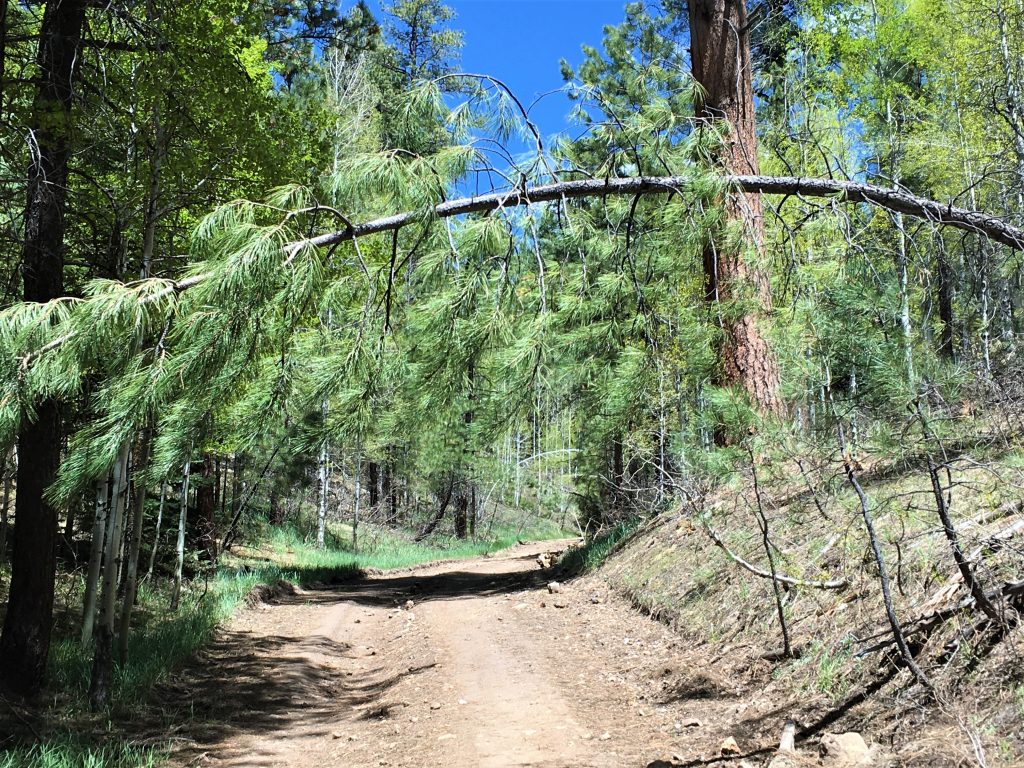
Kinda like driving through a car wash – – which we desperately need. : )


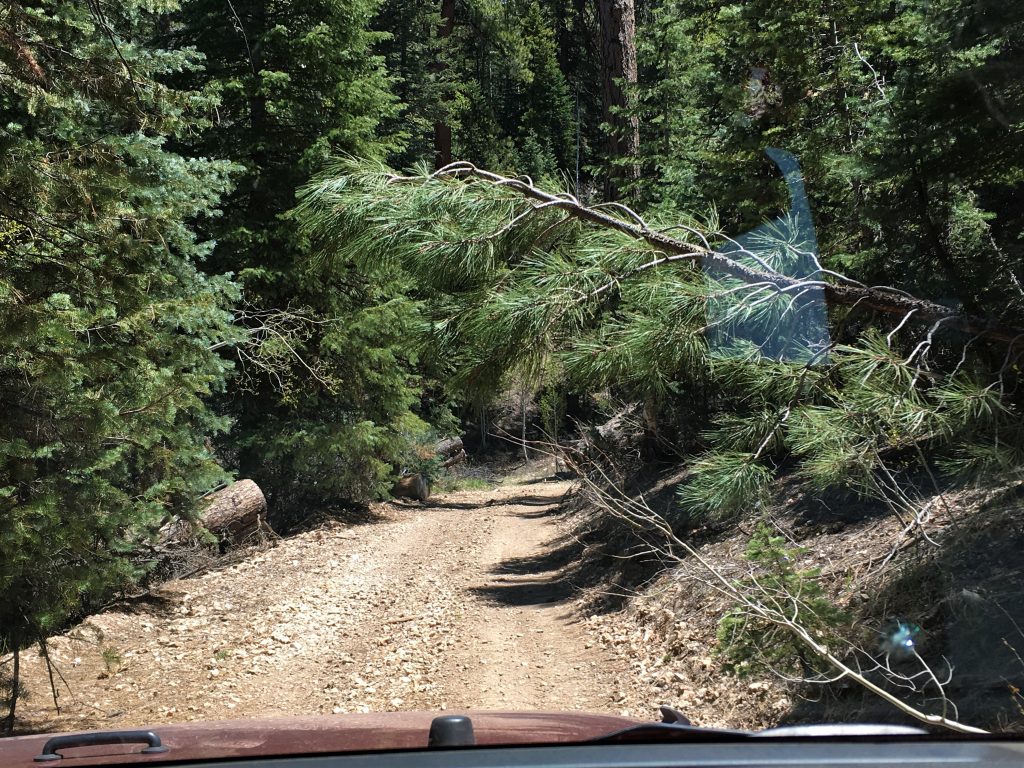
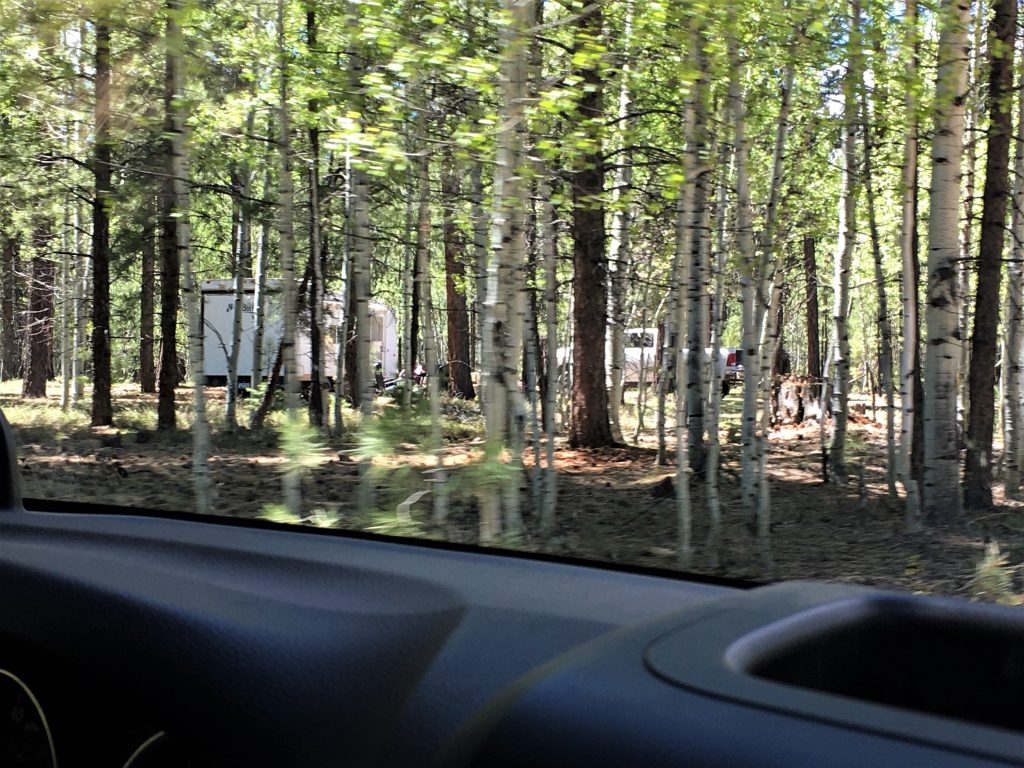
No more than two weeks though.
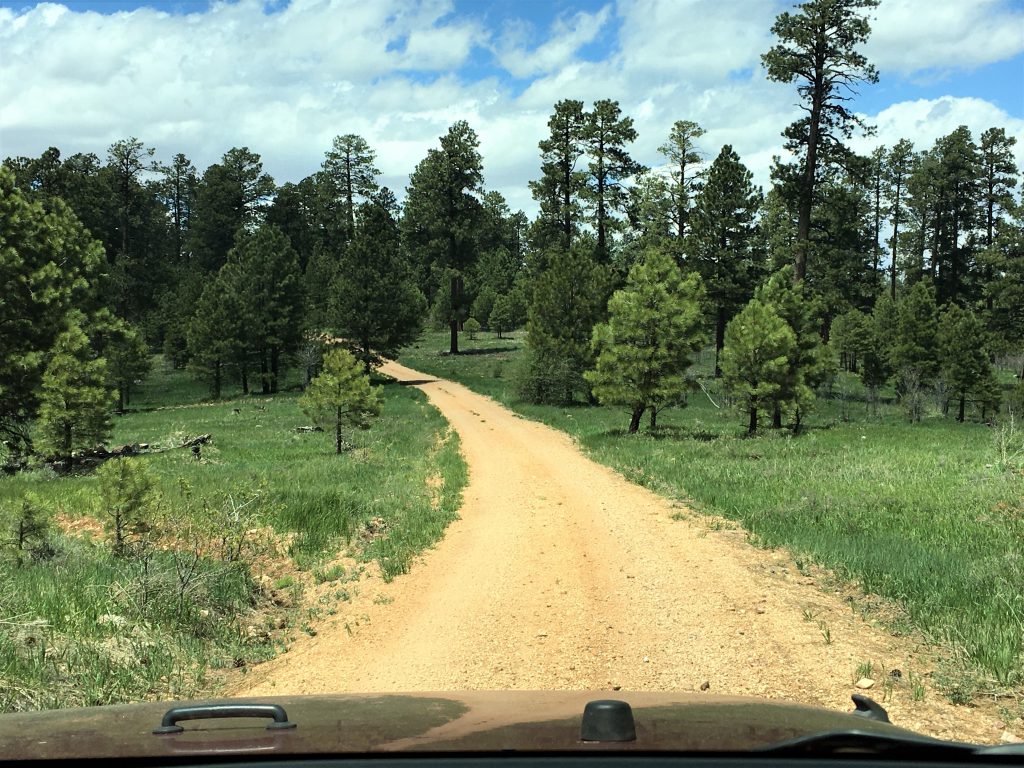
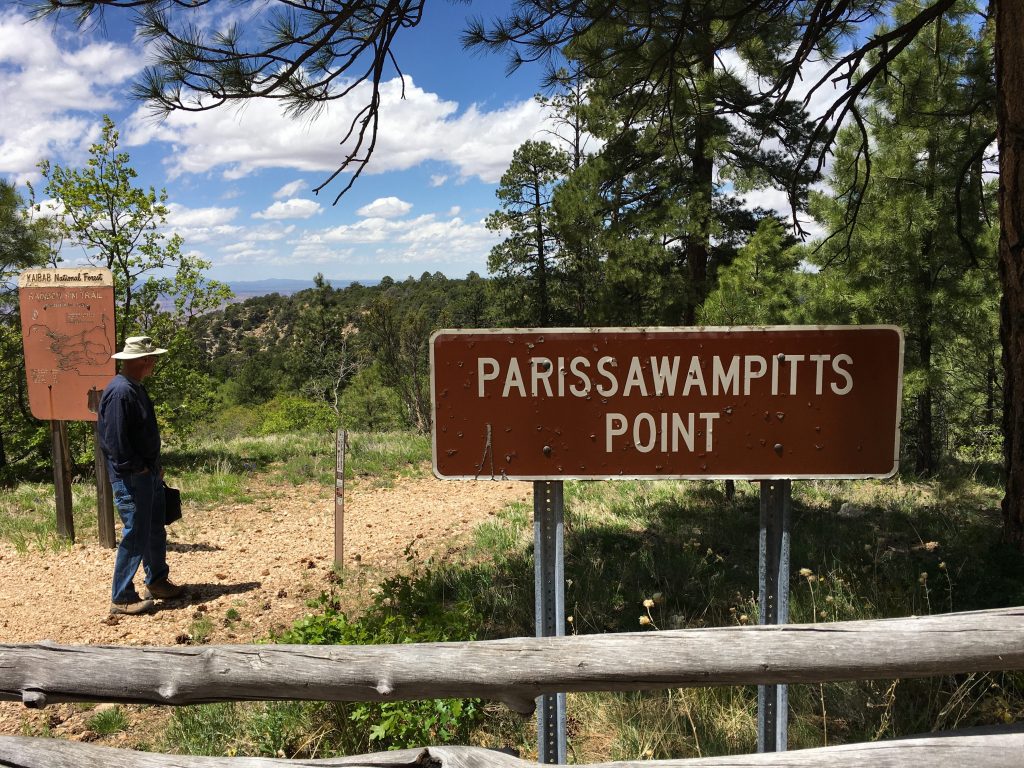
It was a complete dud as far as any views of the Grand Canyon go. : (

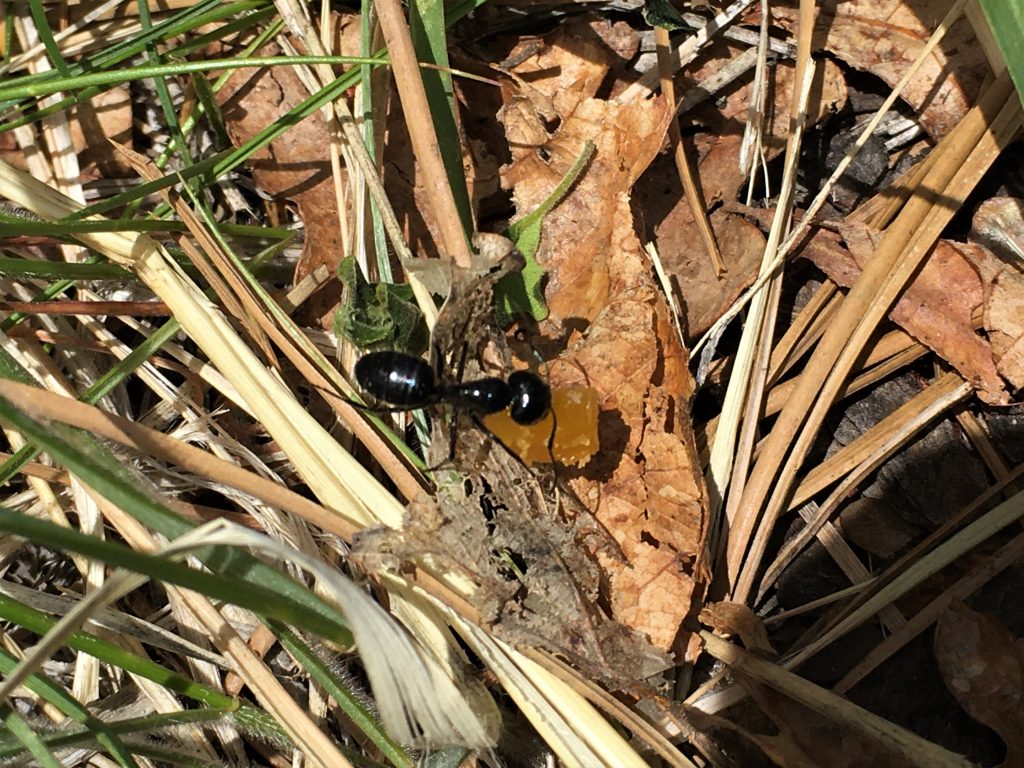
We had fun watching him try to drag it off to parts unknown. : )
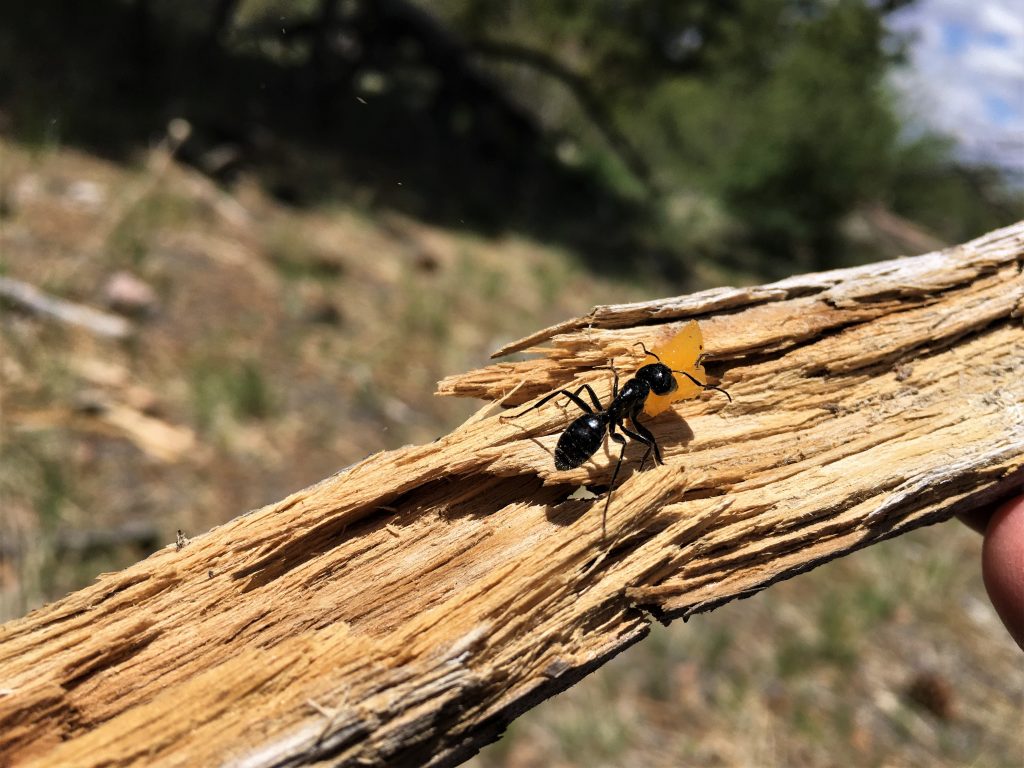
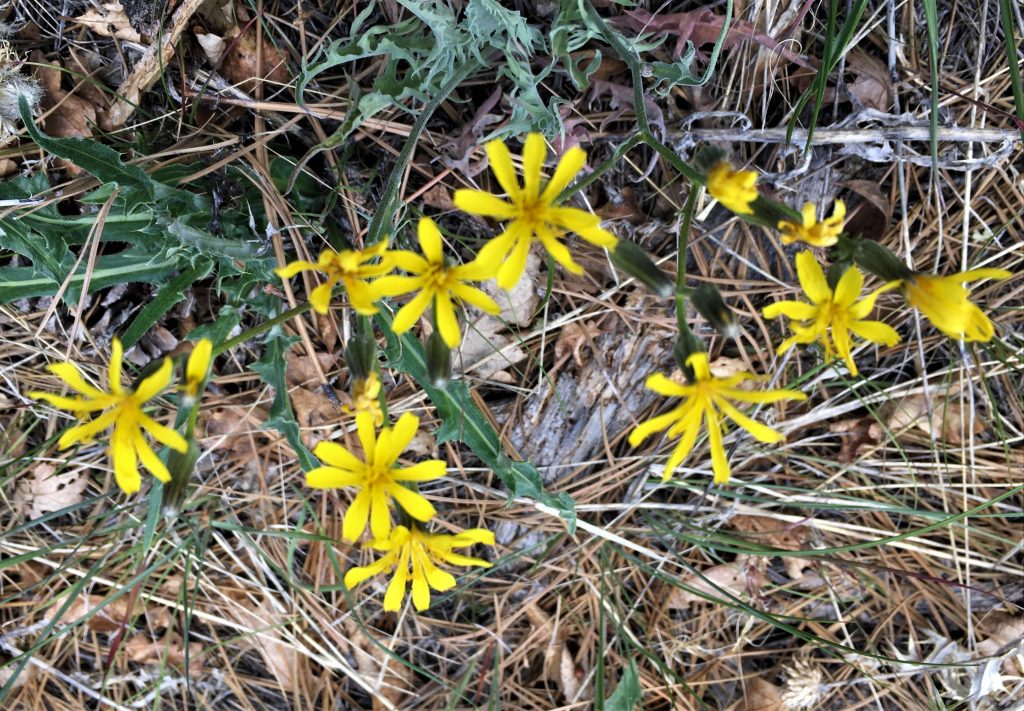
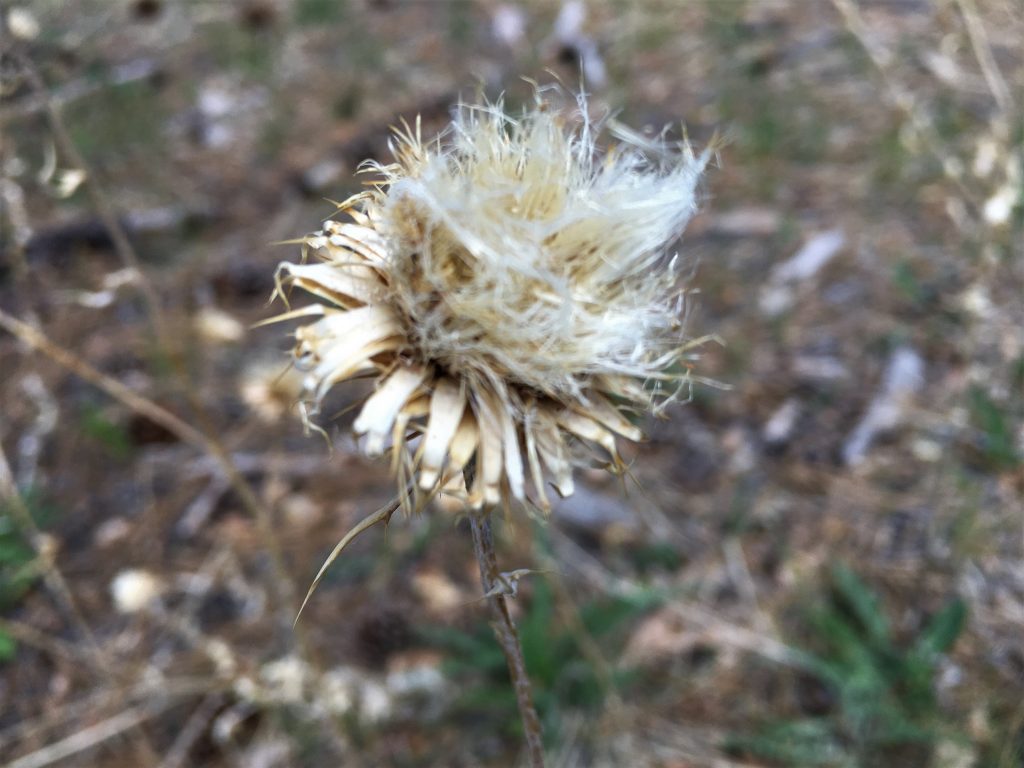
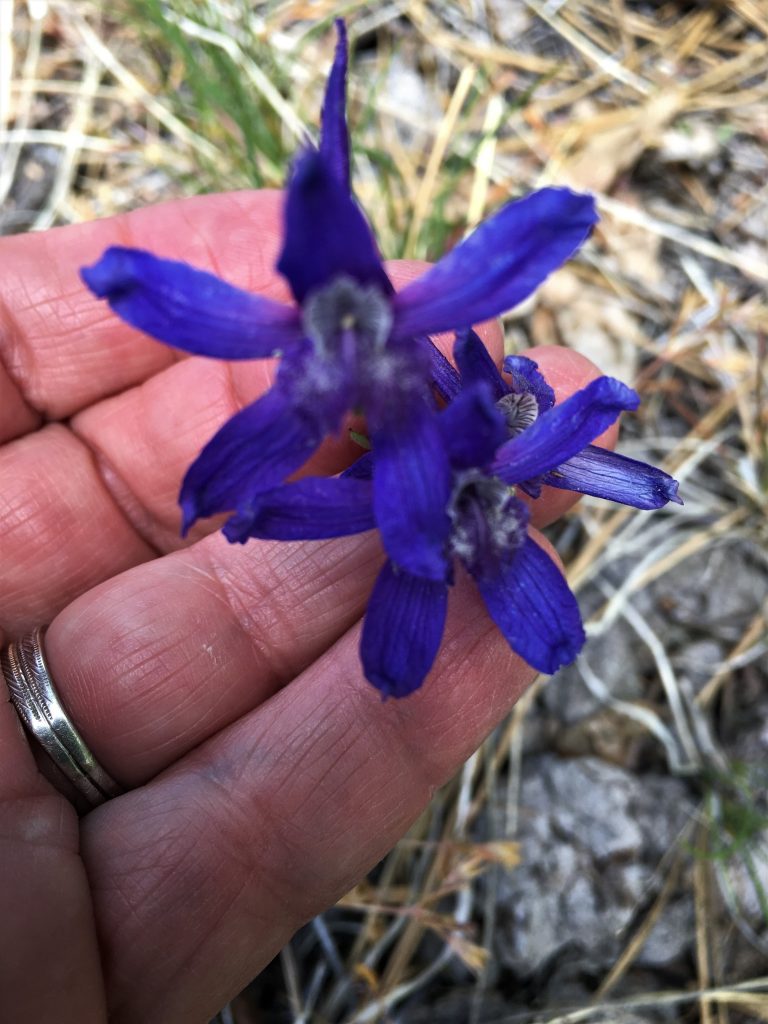
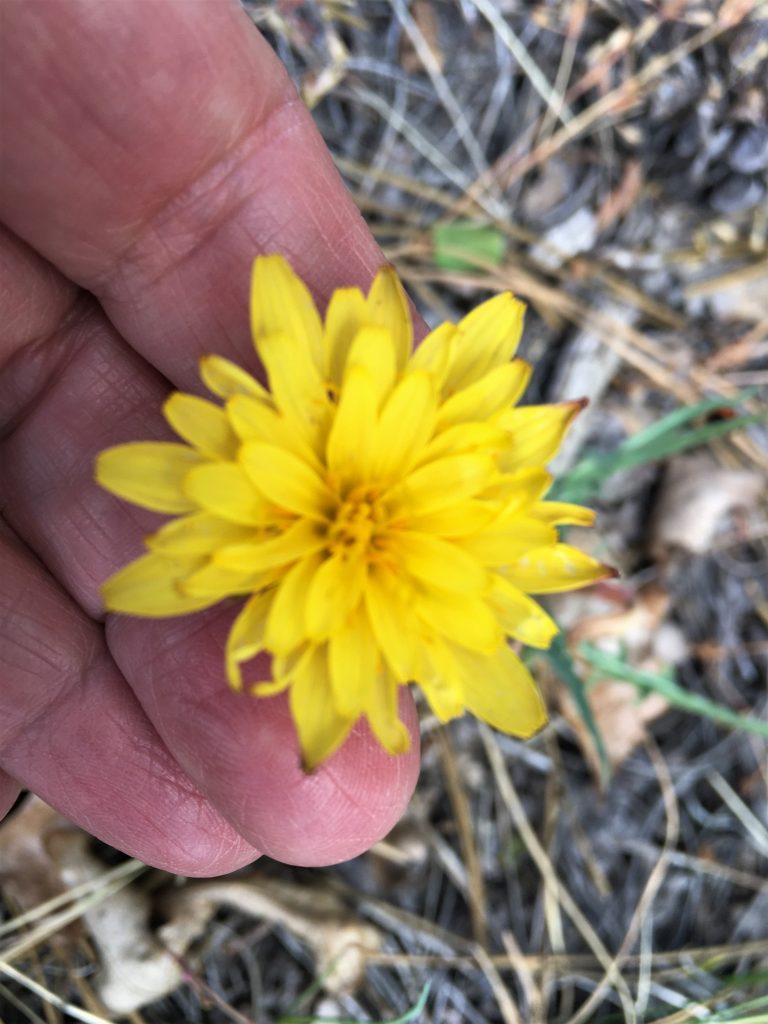
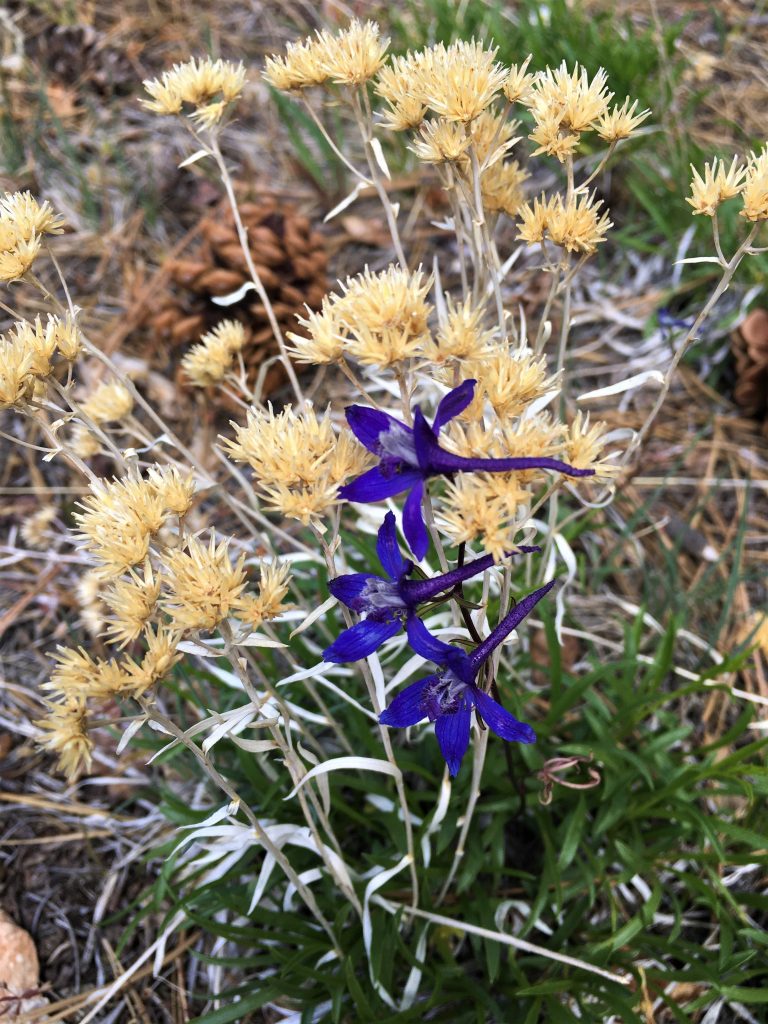
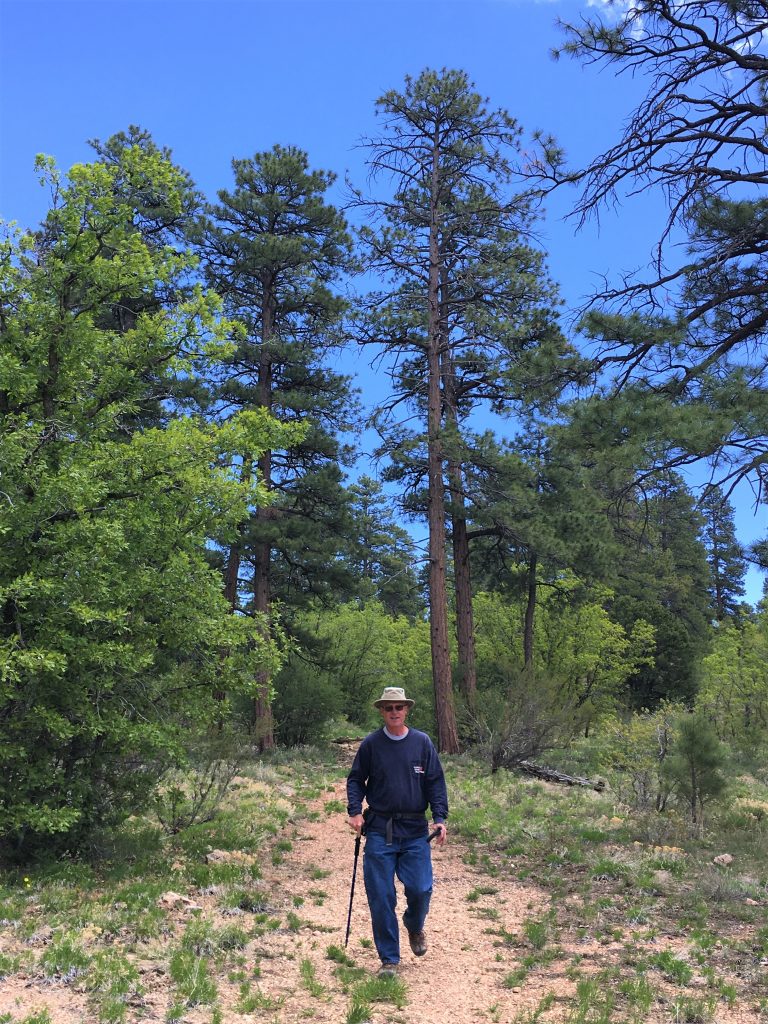
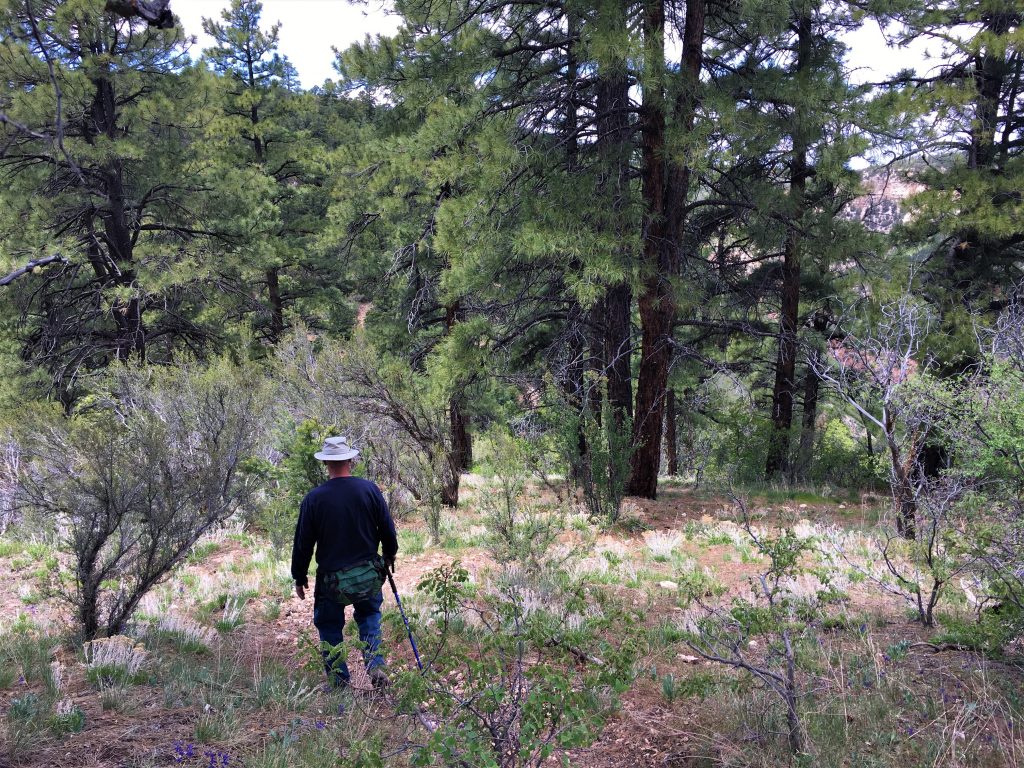
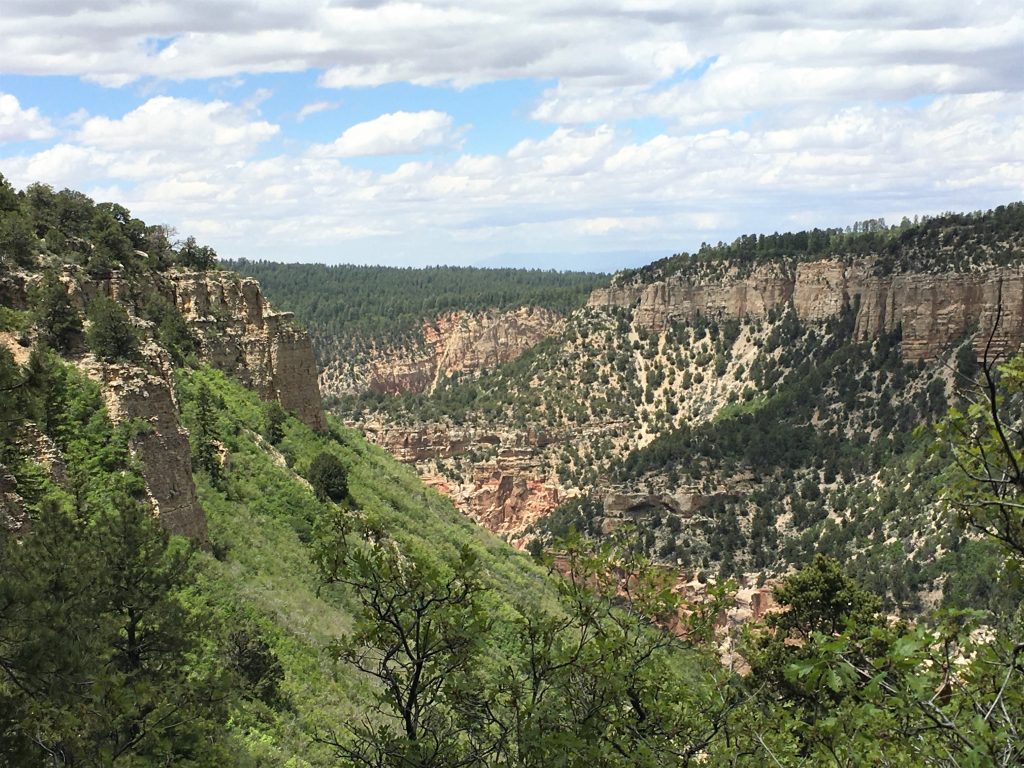
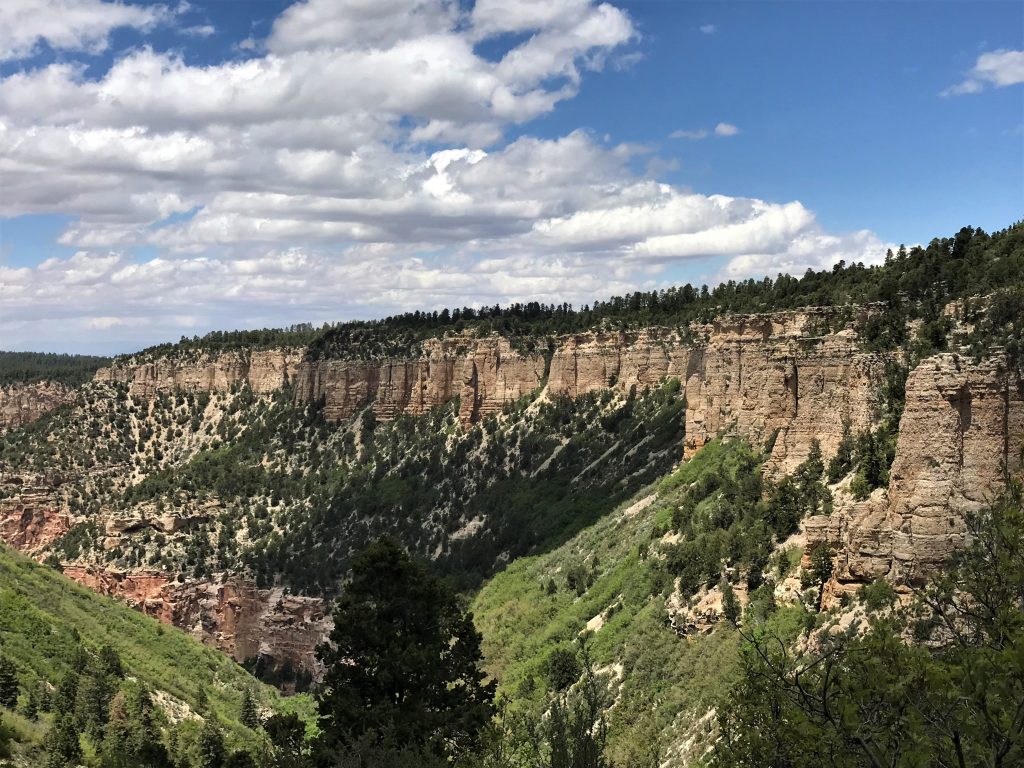
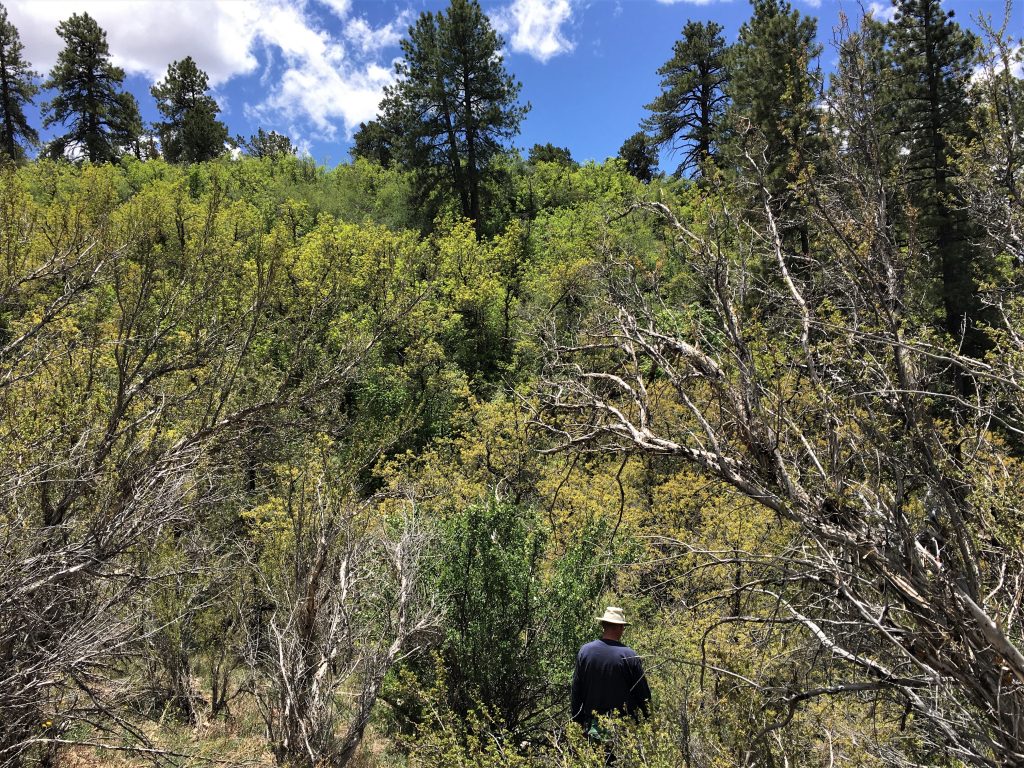
The vegetation just kept getting more and more dense.

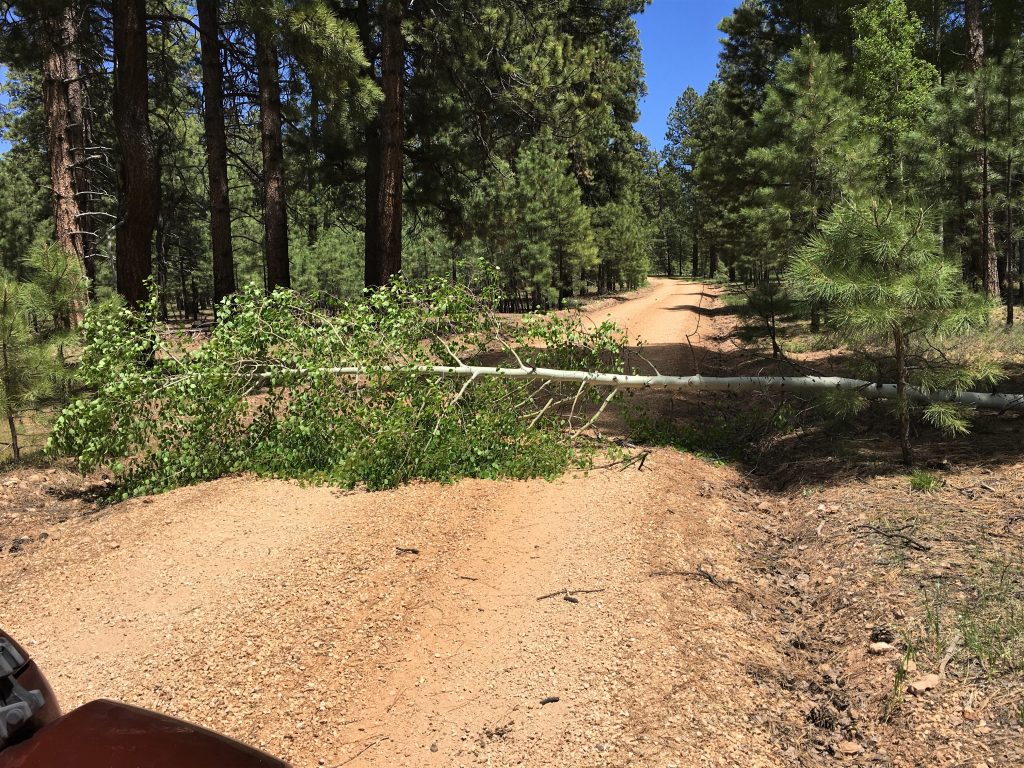
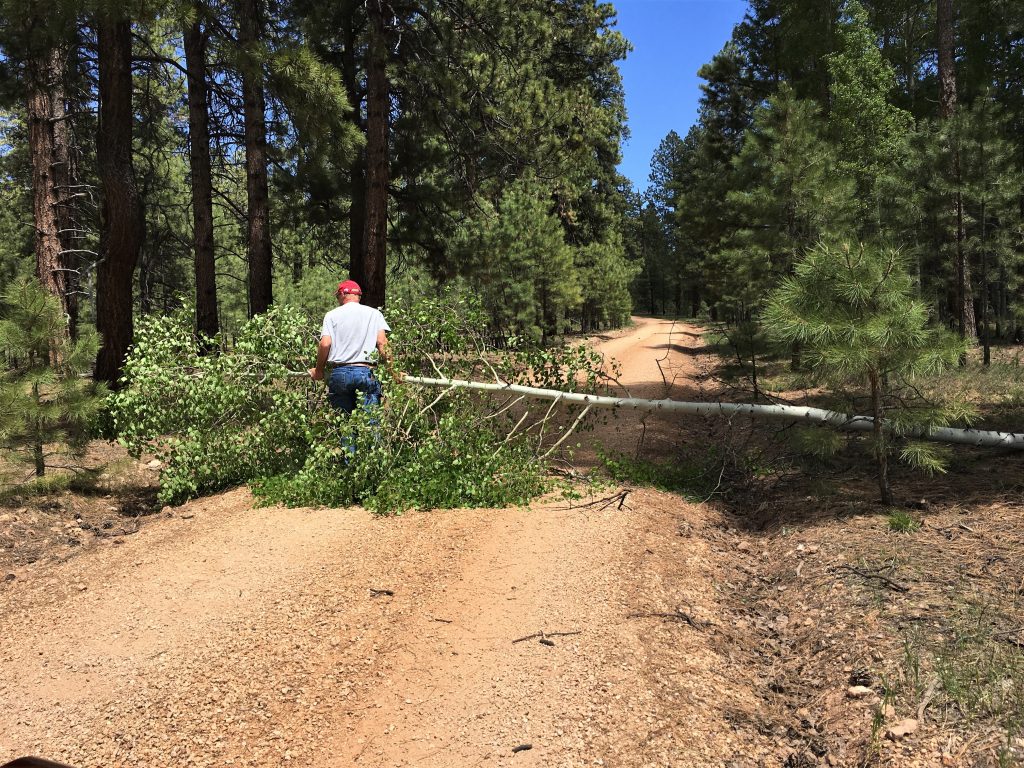
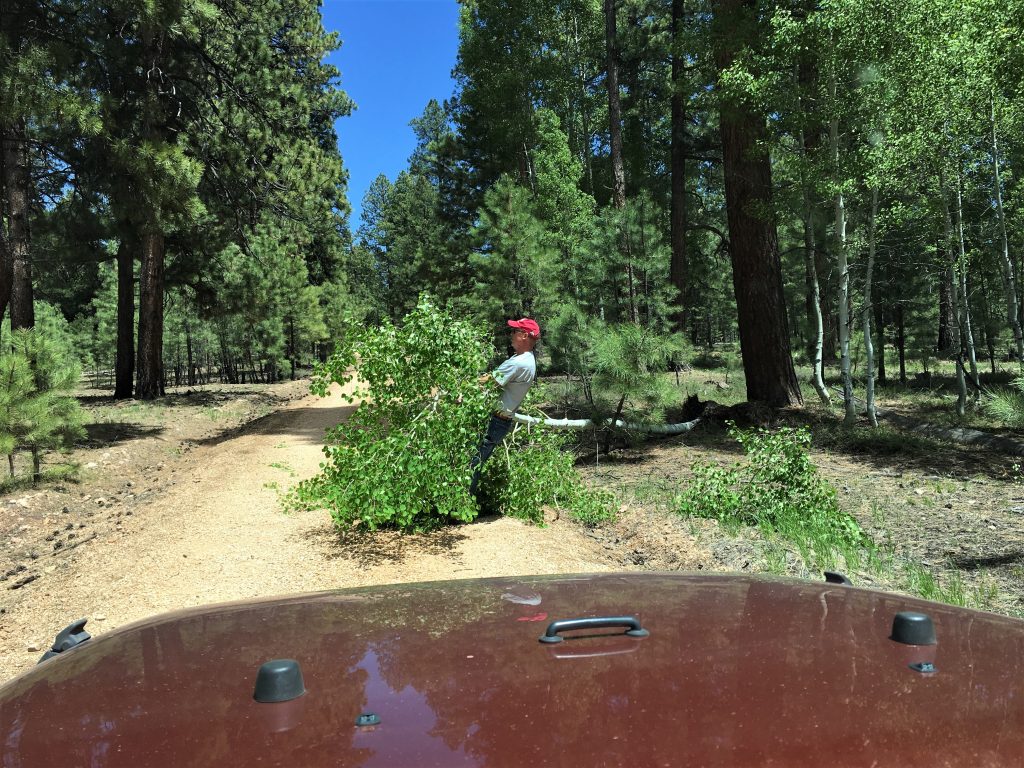
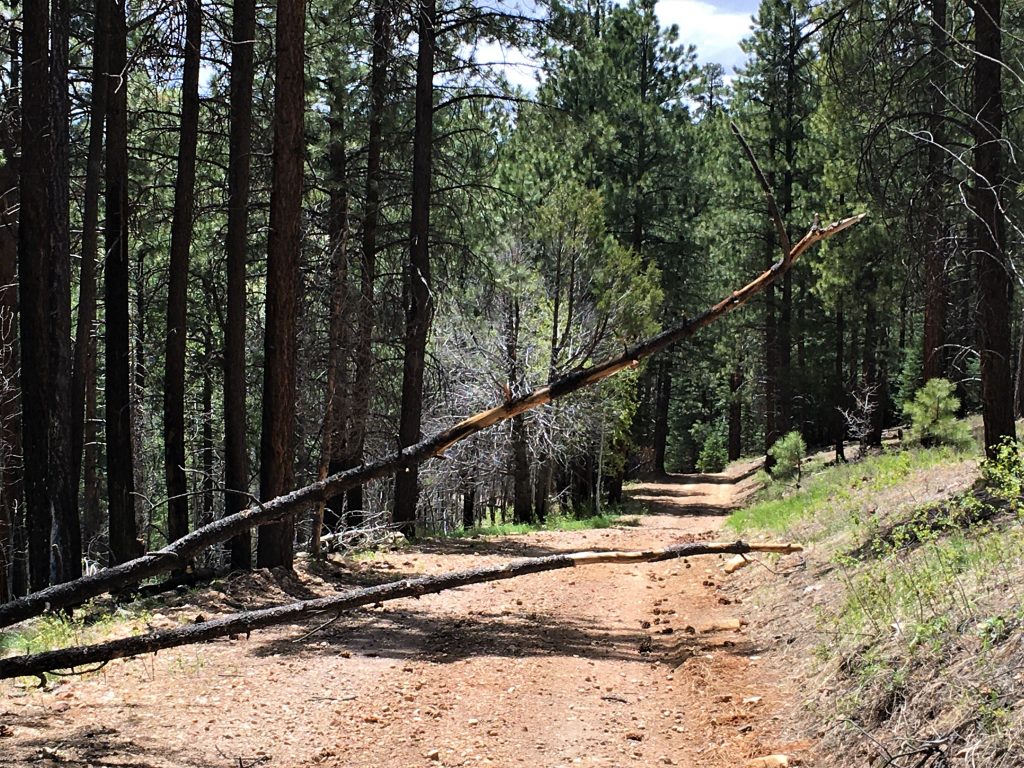
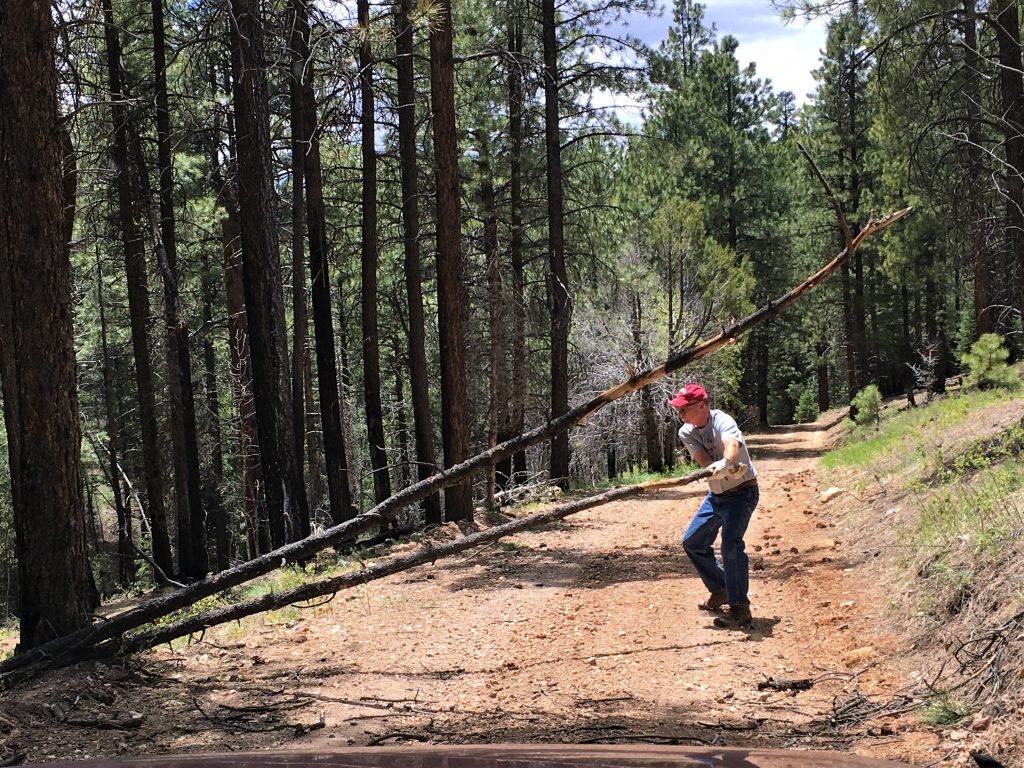
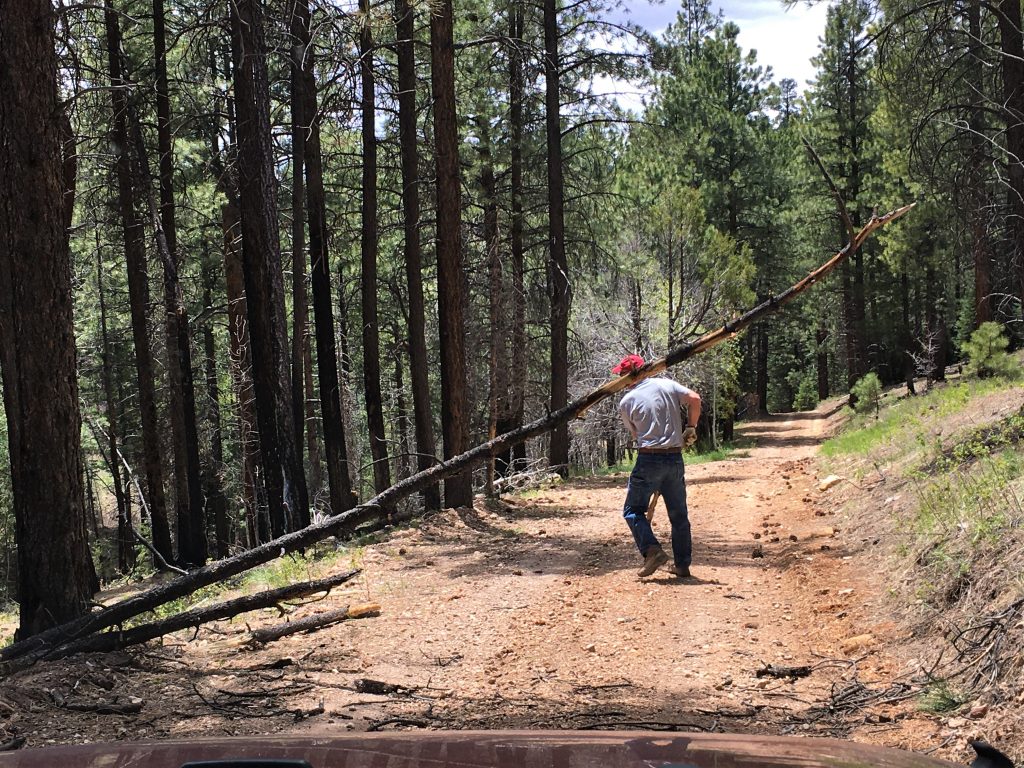
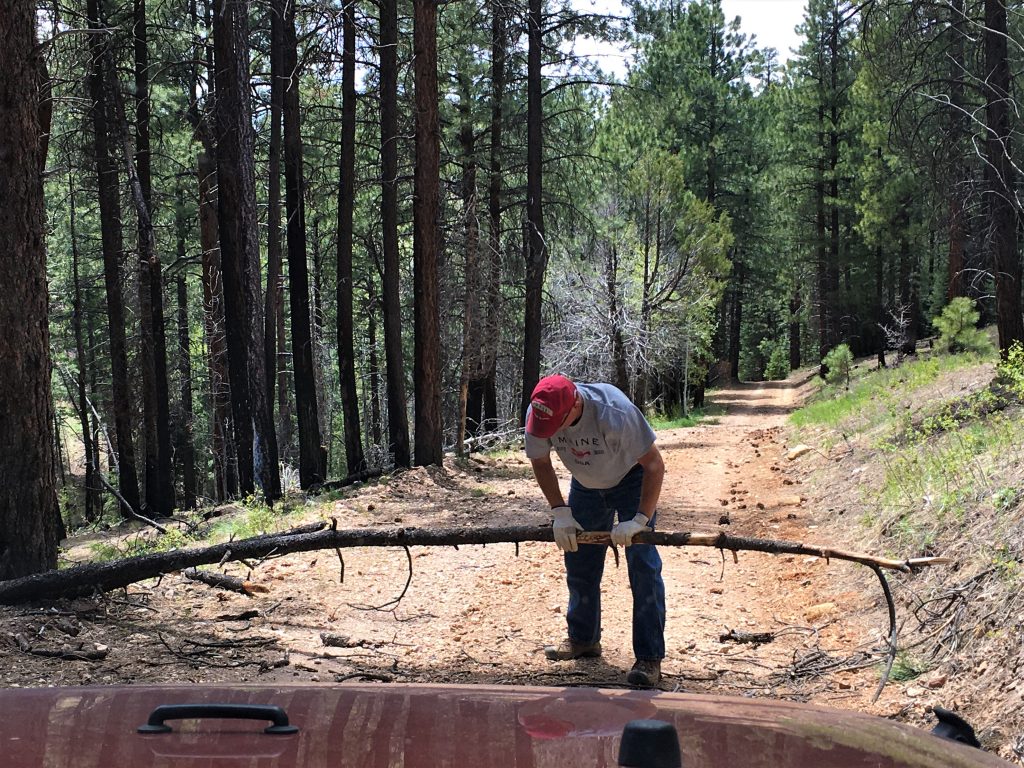
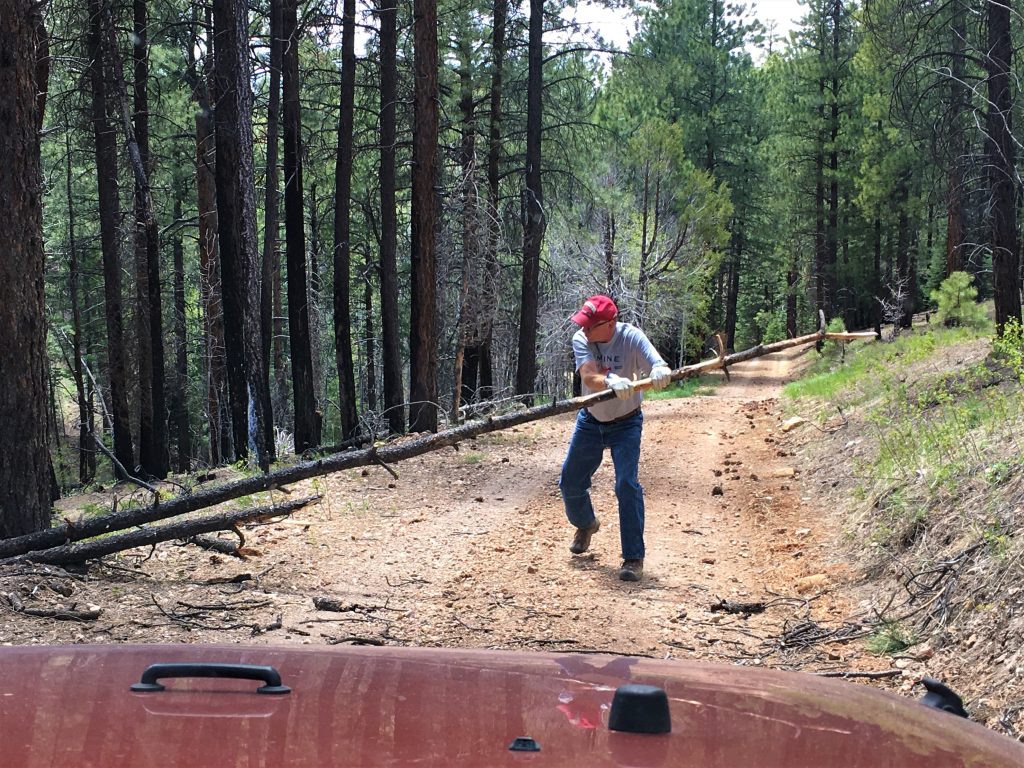
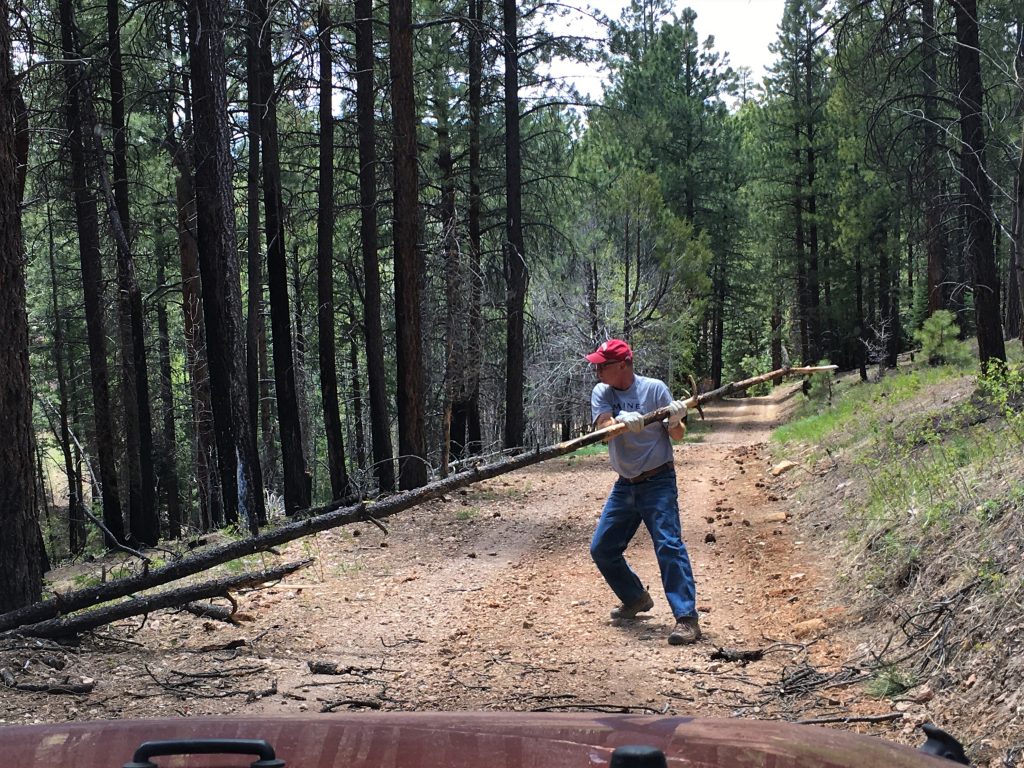
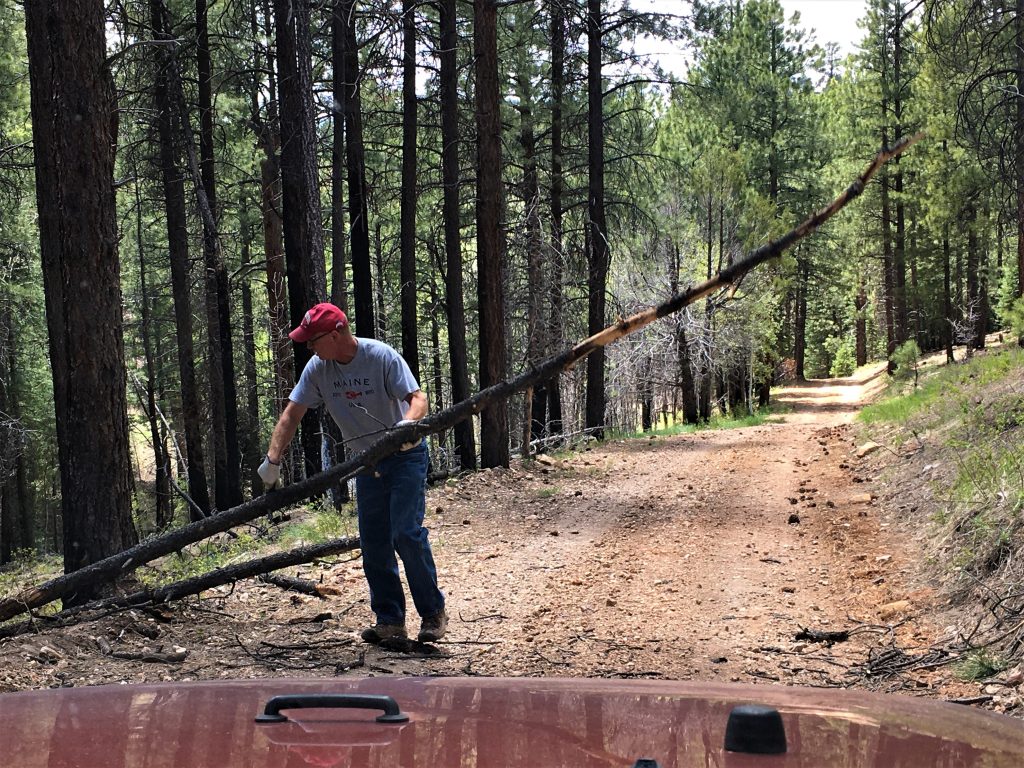
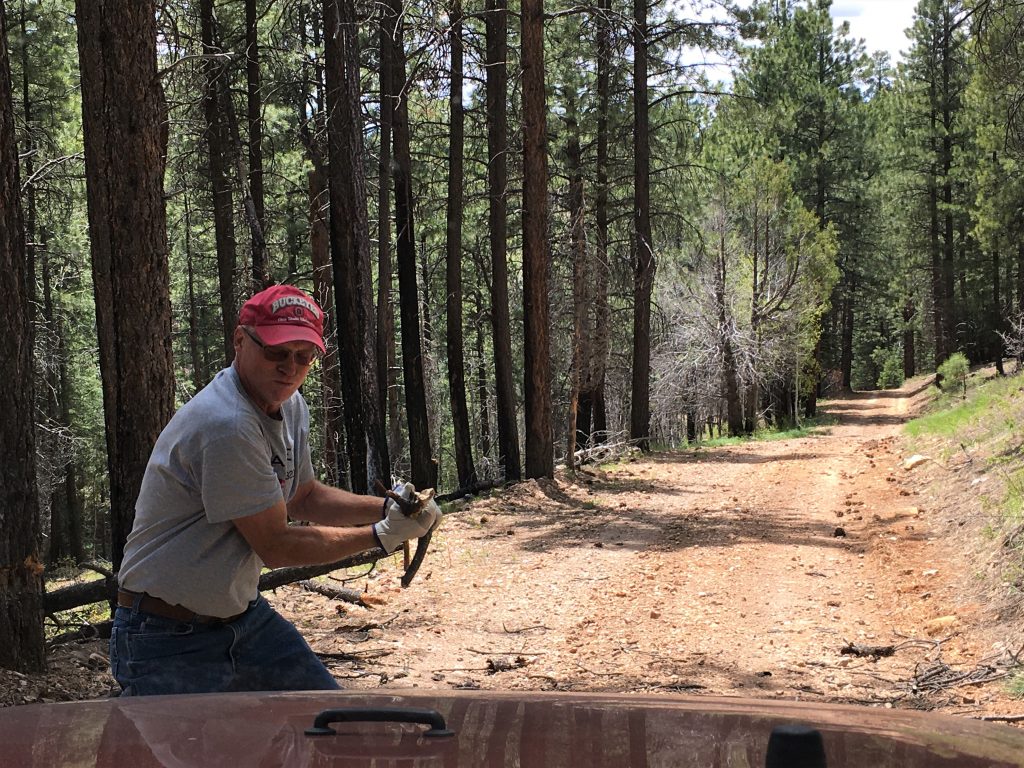
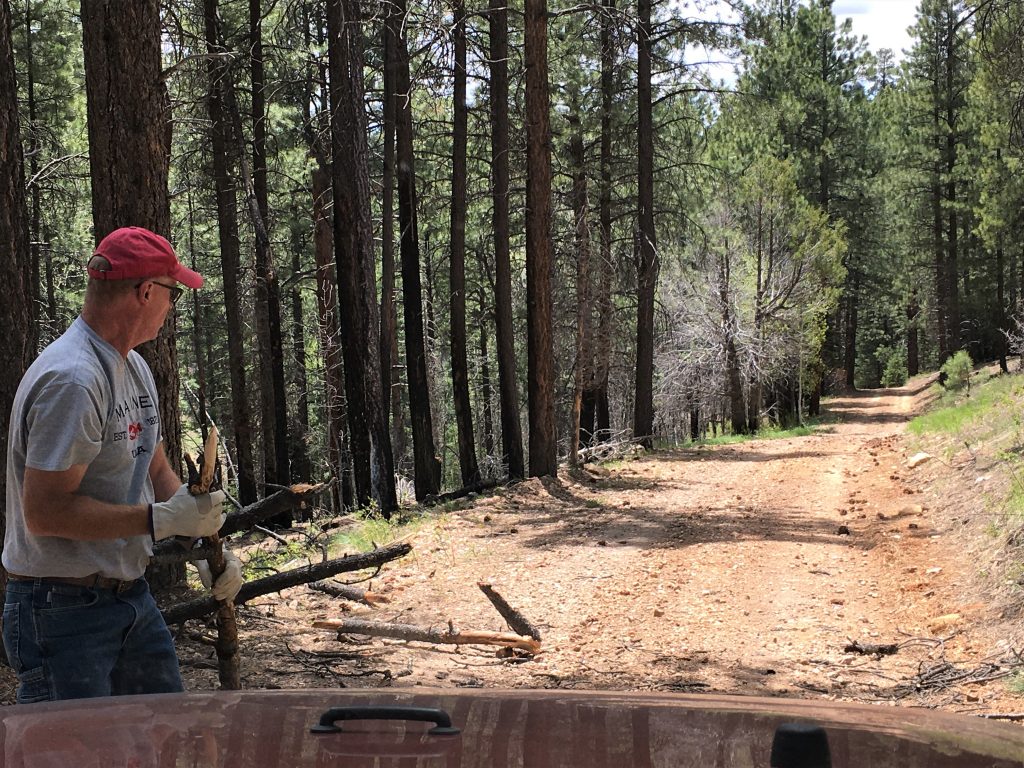
As we walked to each viewpoint, we kept noticing these huge hoof prints that had been left in mud at some point. We thought they might be from elk, but later decided that they’re more likely from cows, once we discovered them wandering around. 😊
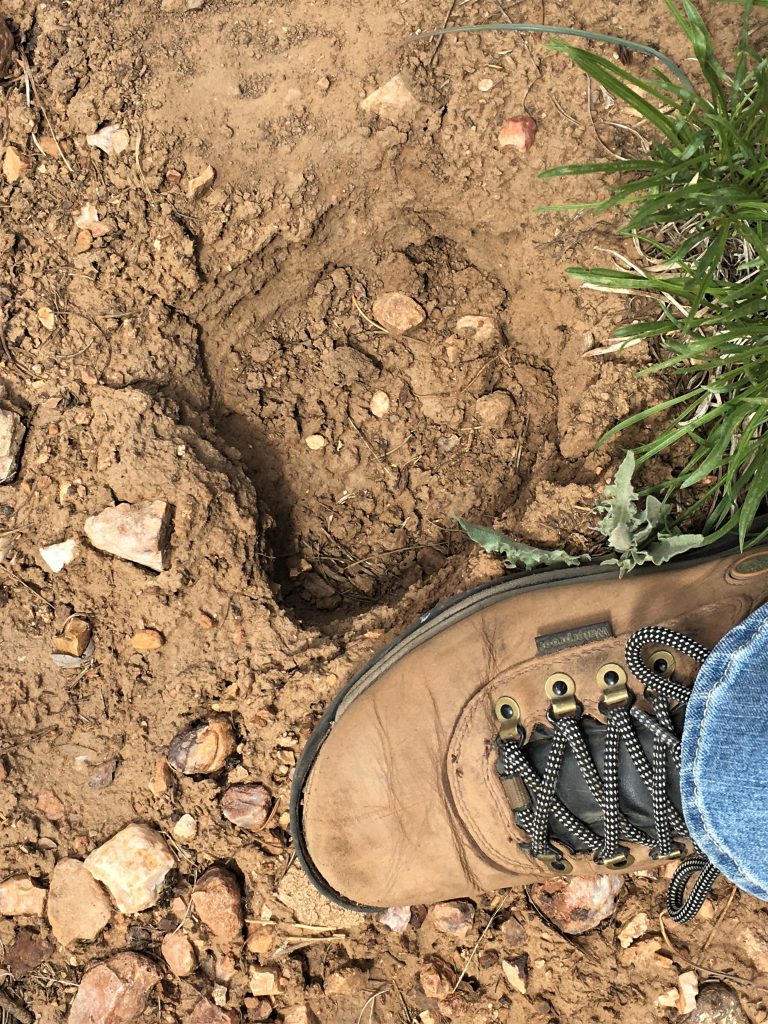


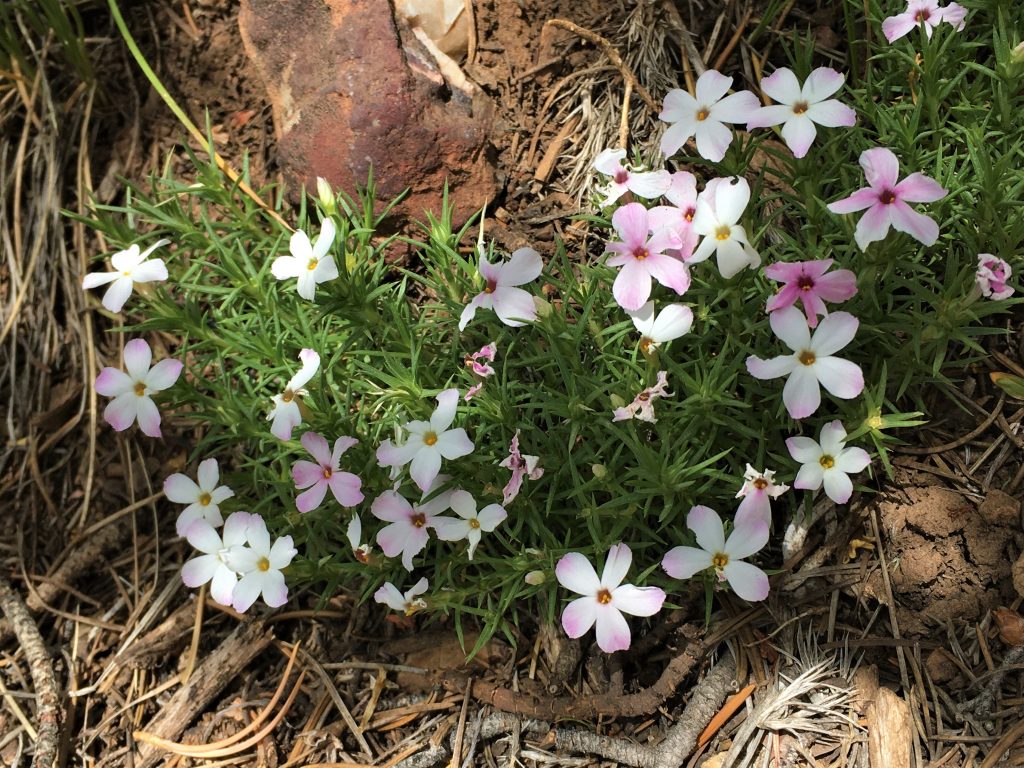
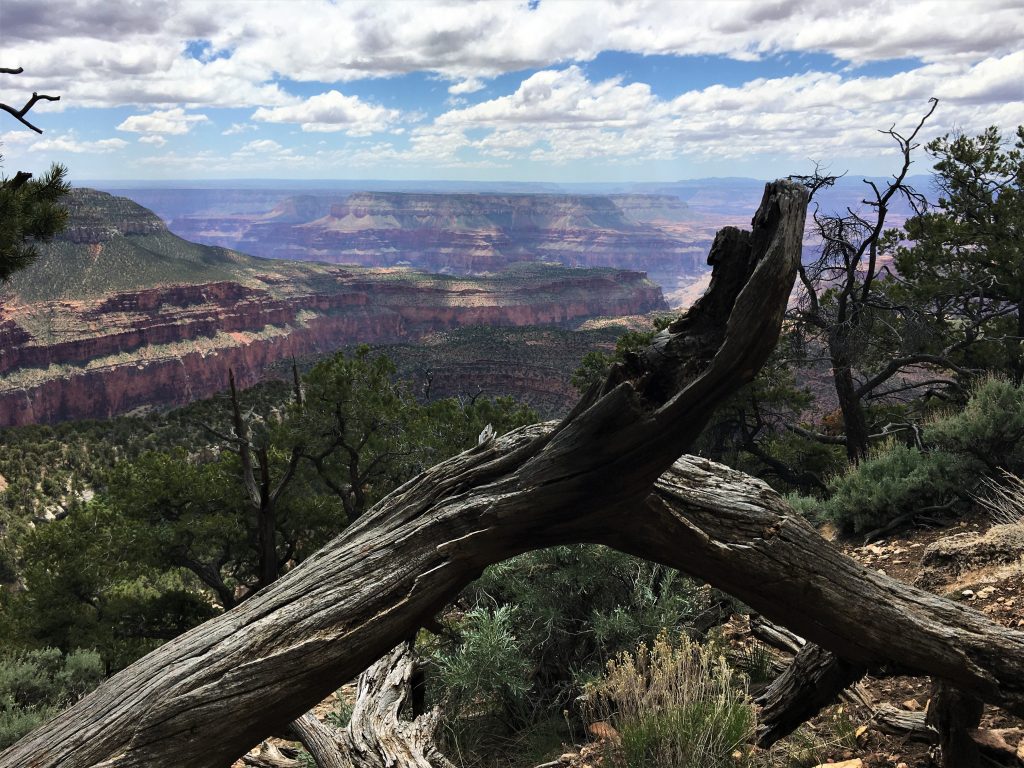
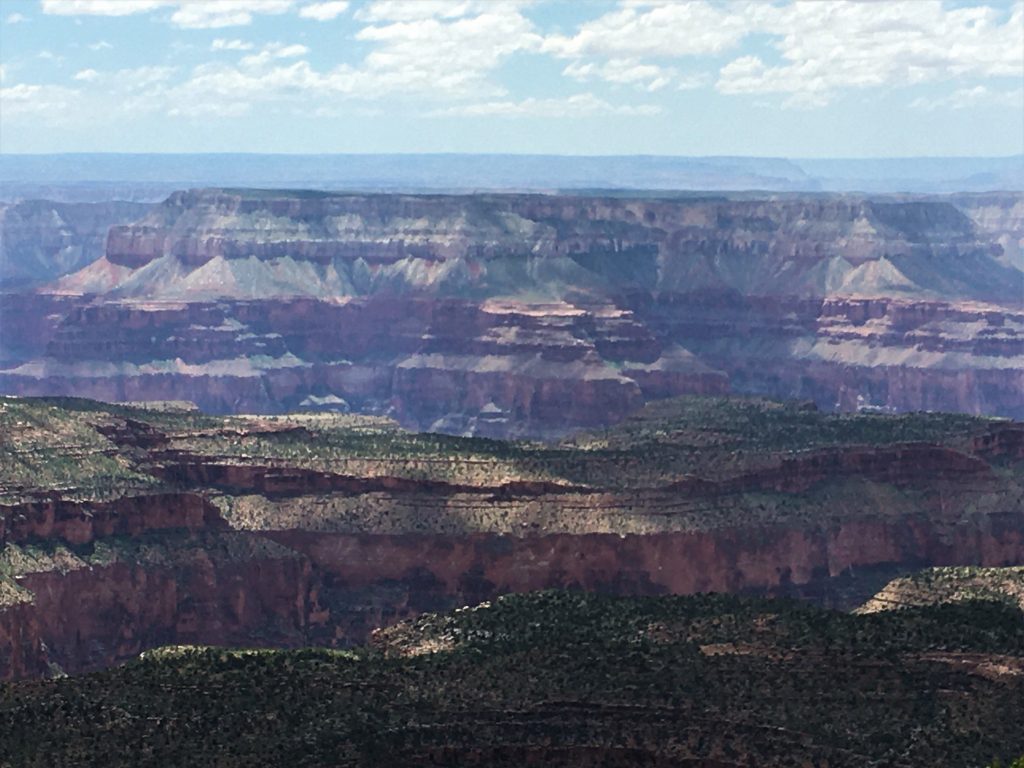


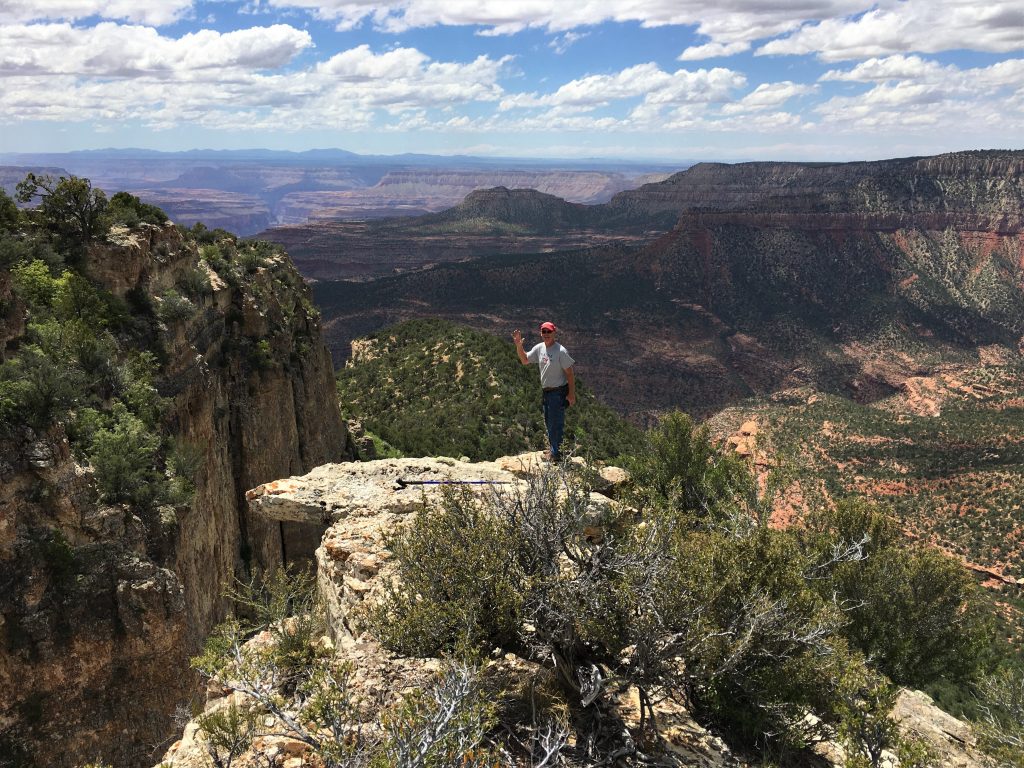
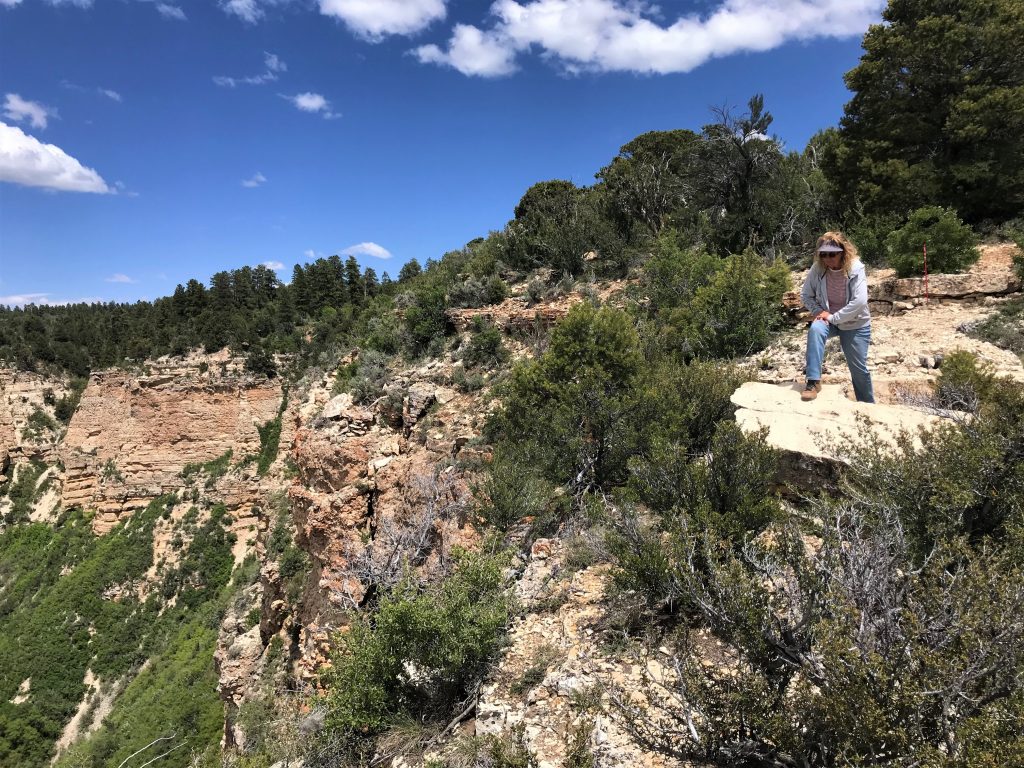
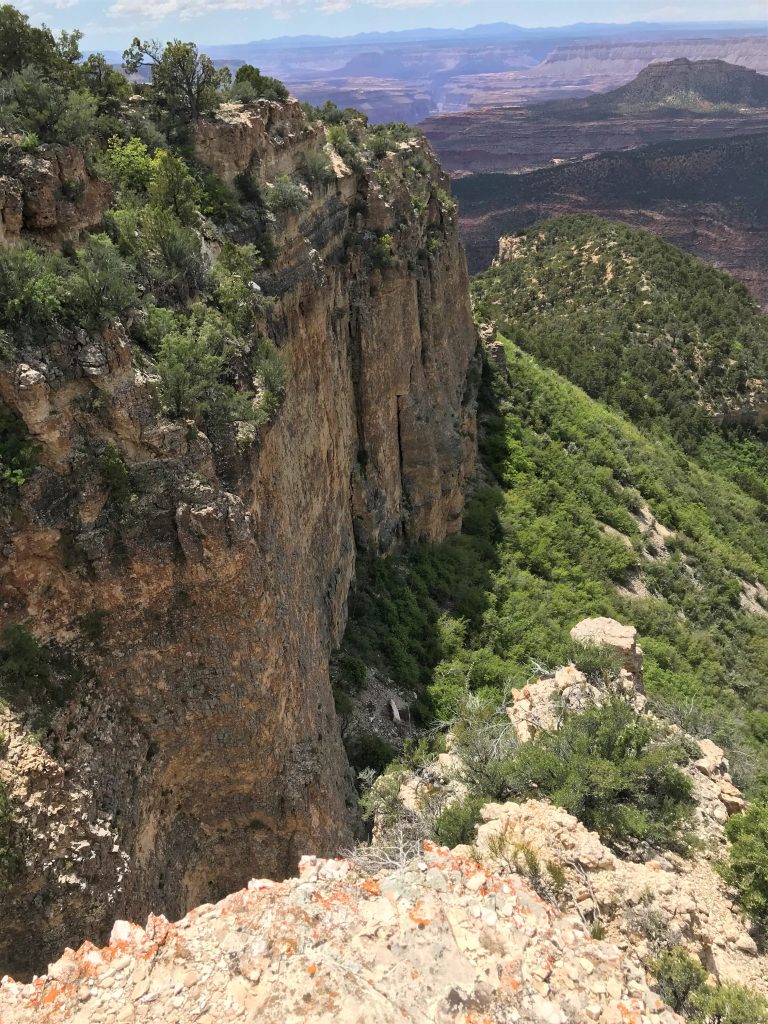
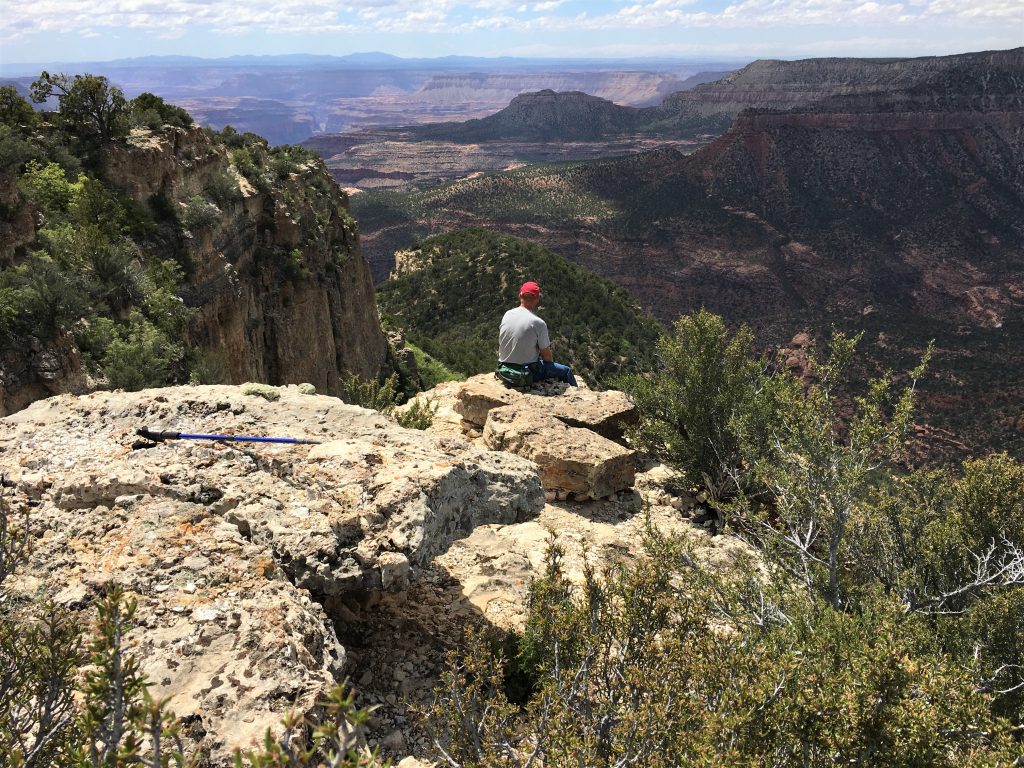
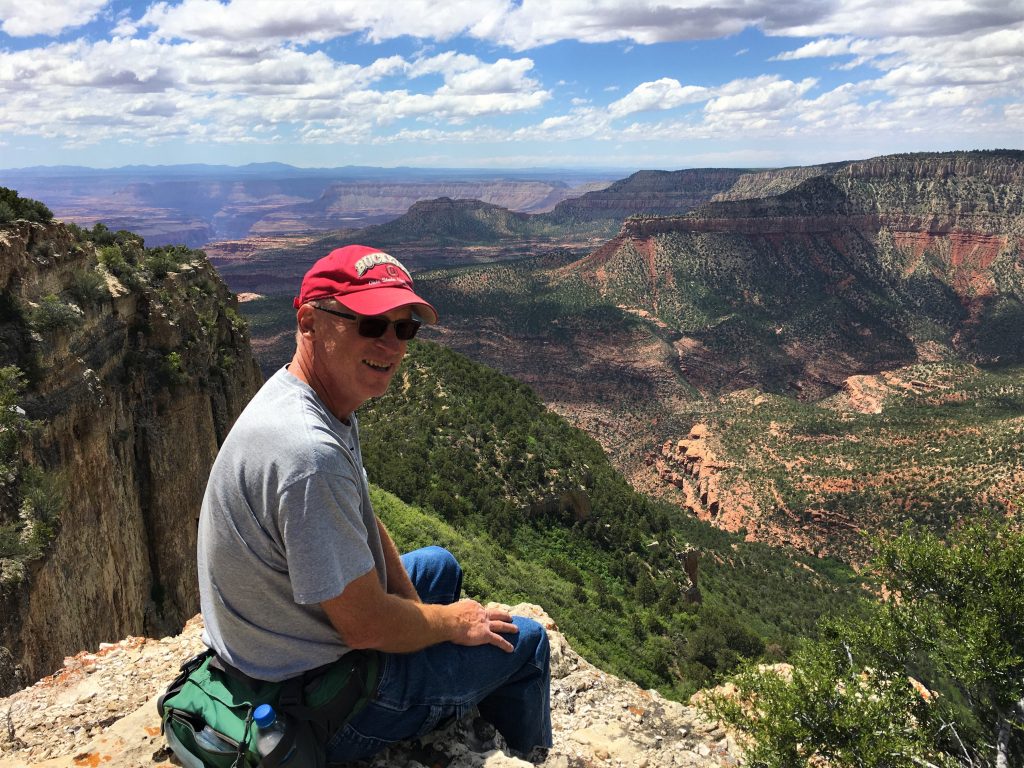
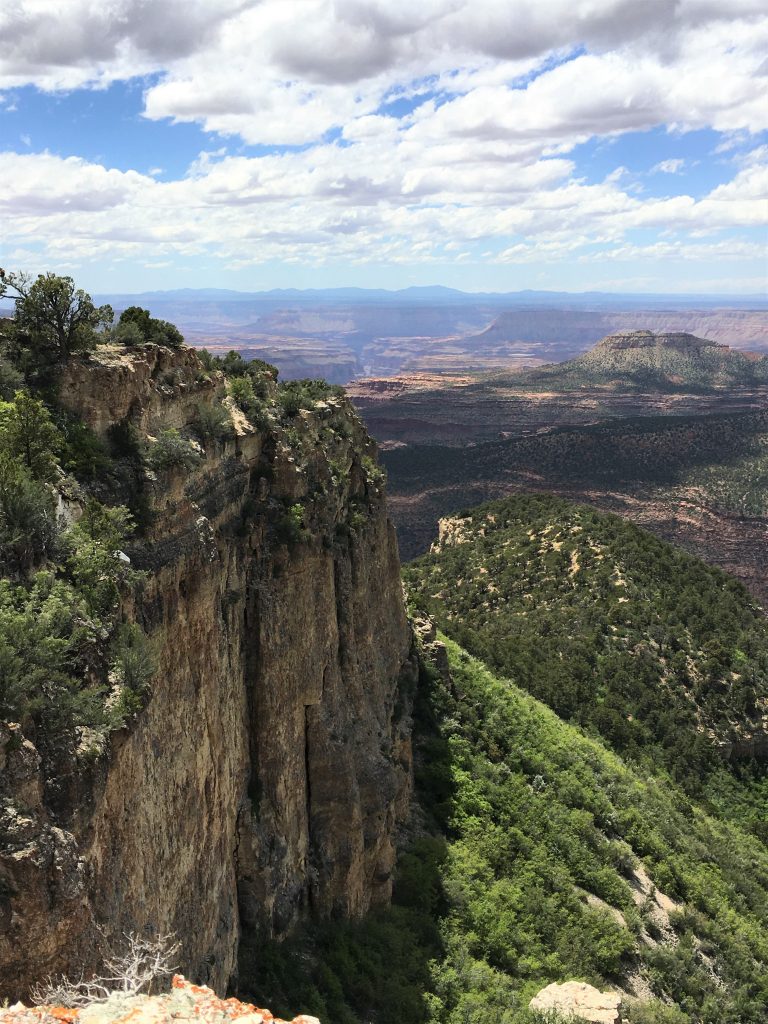
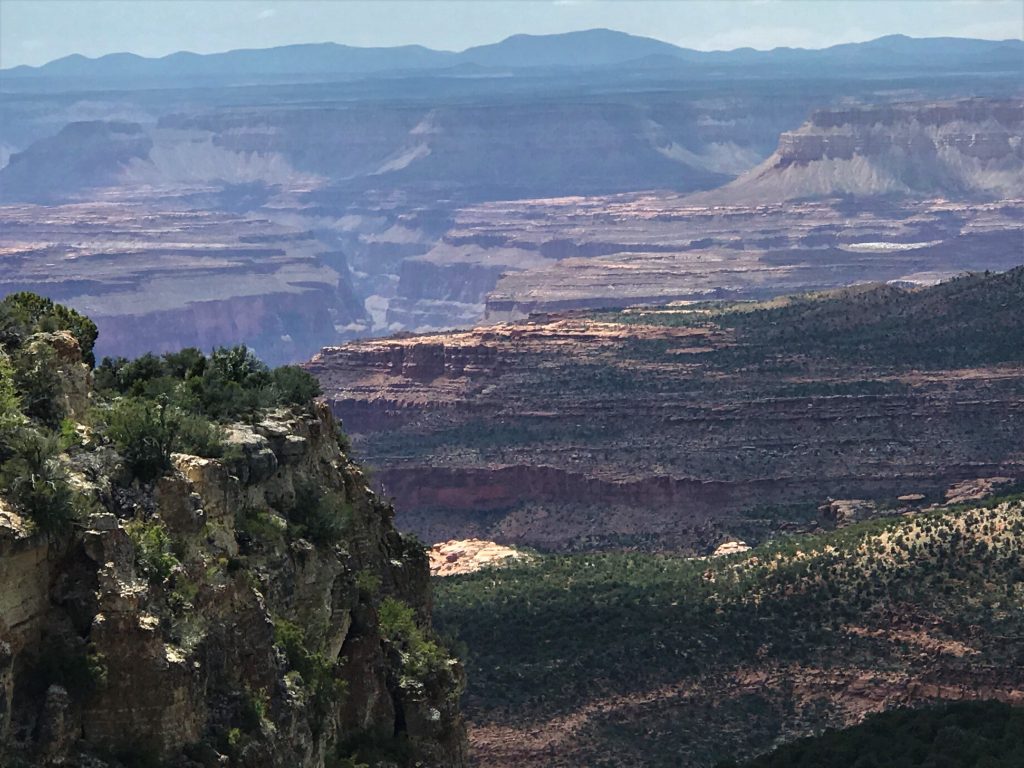
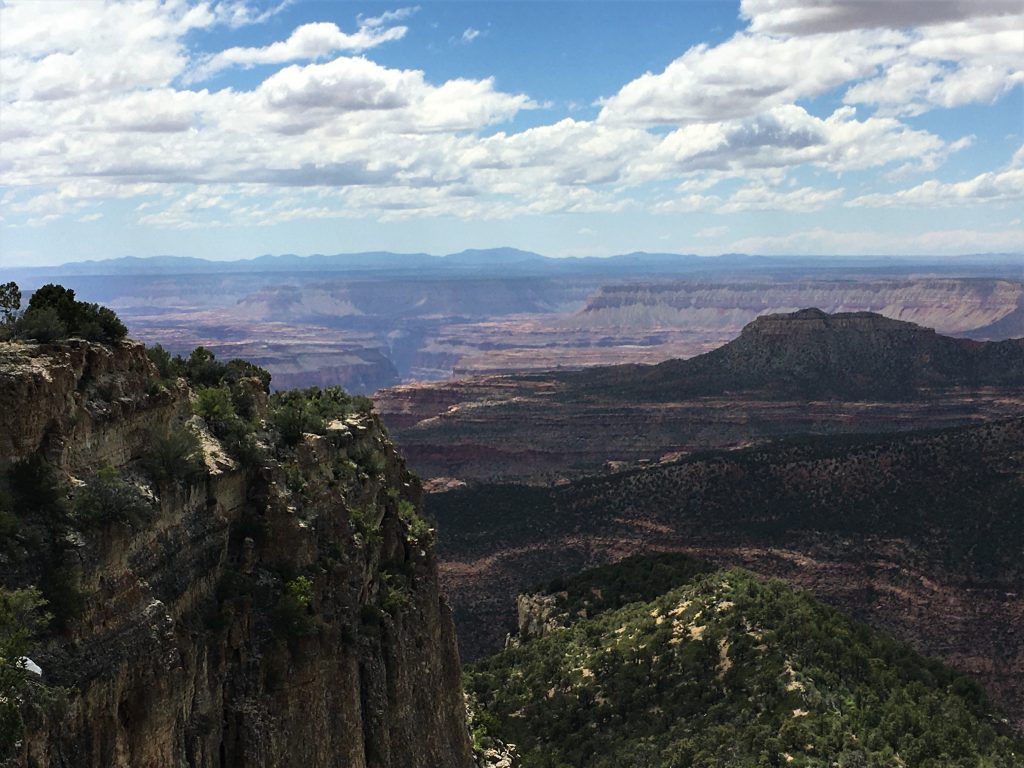
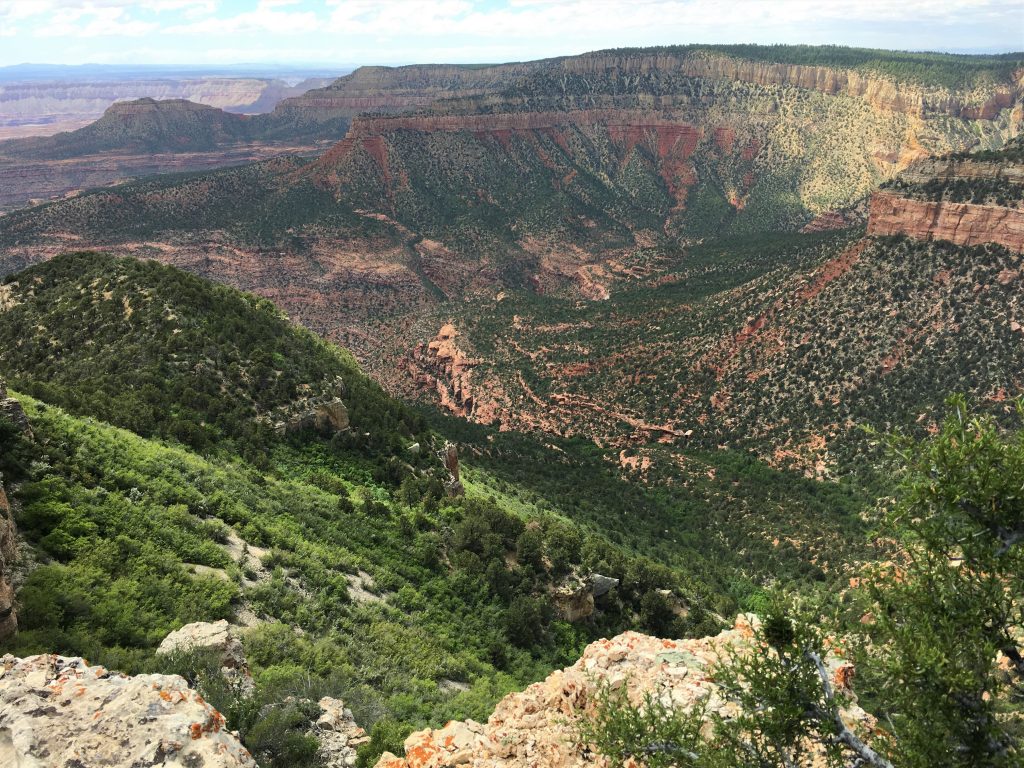
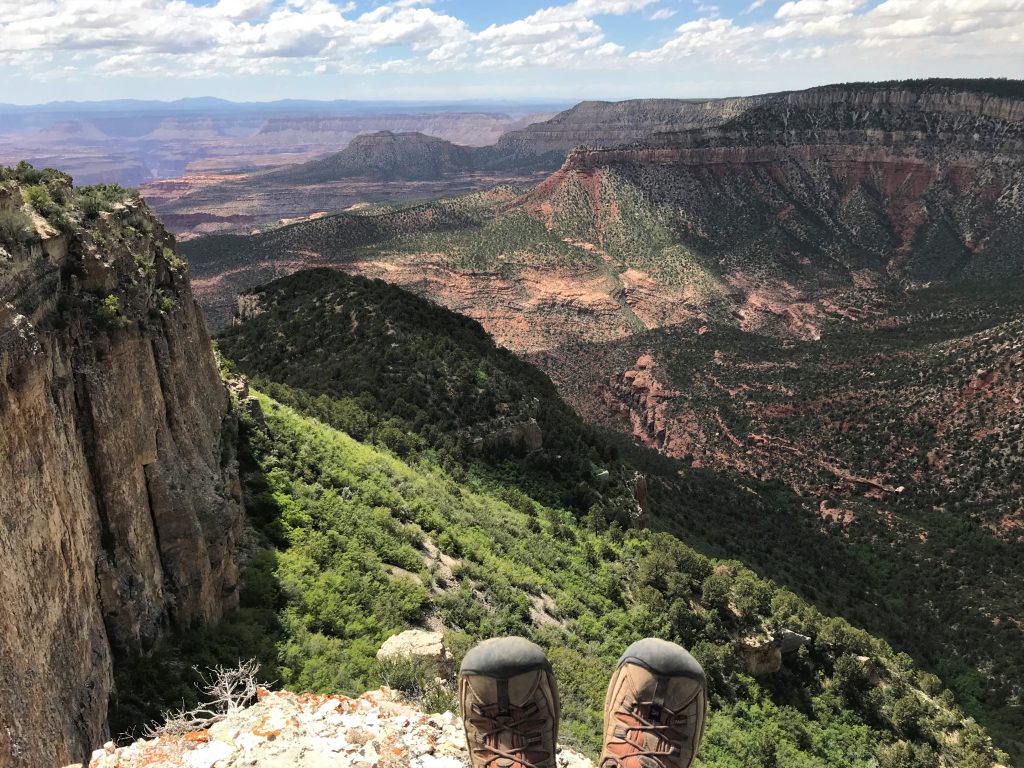

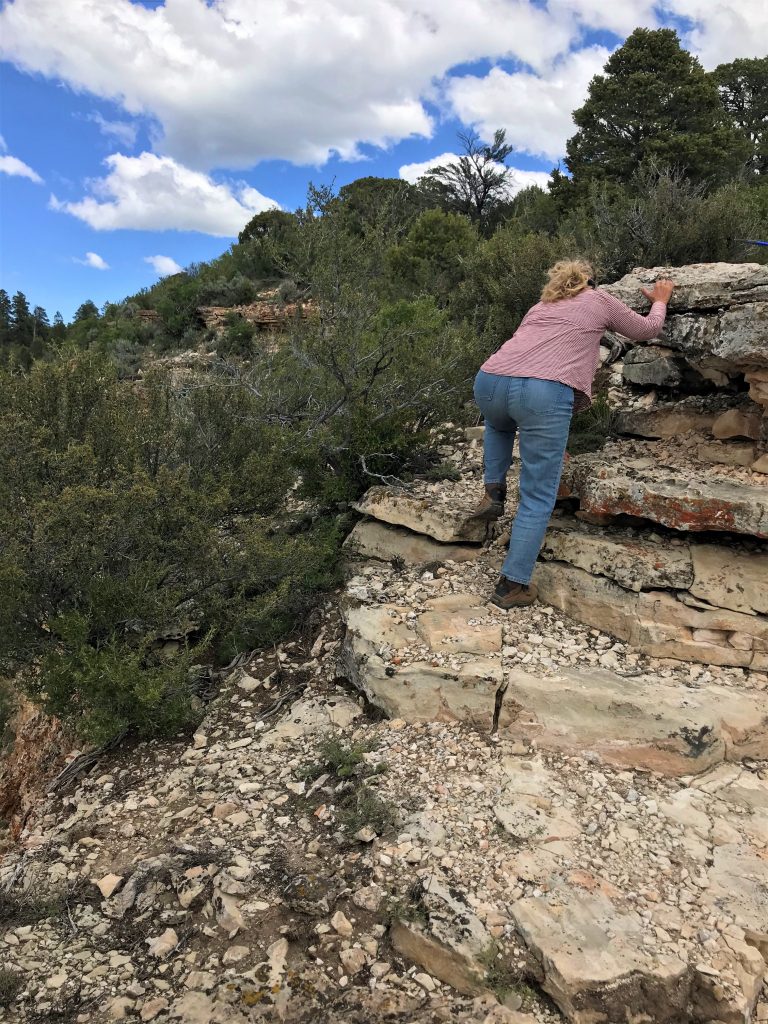
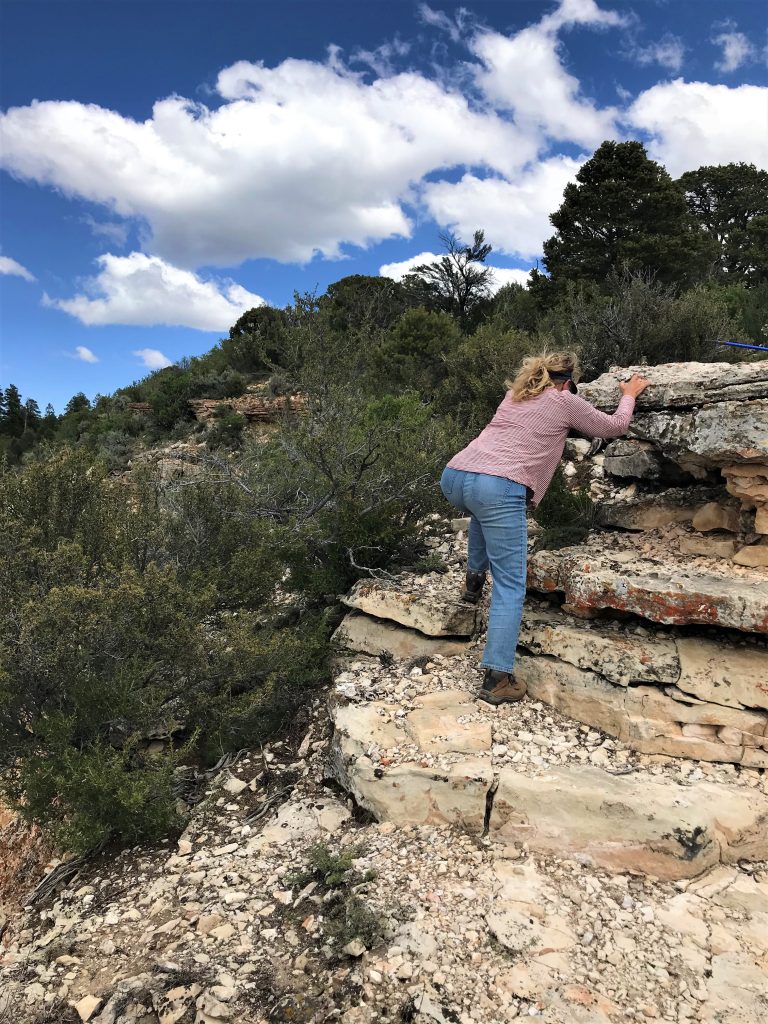
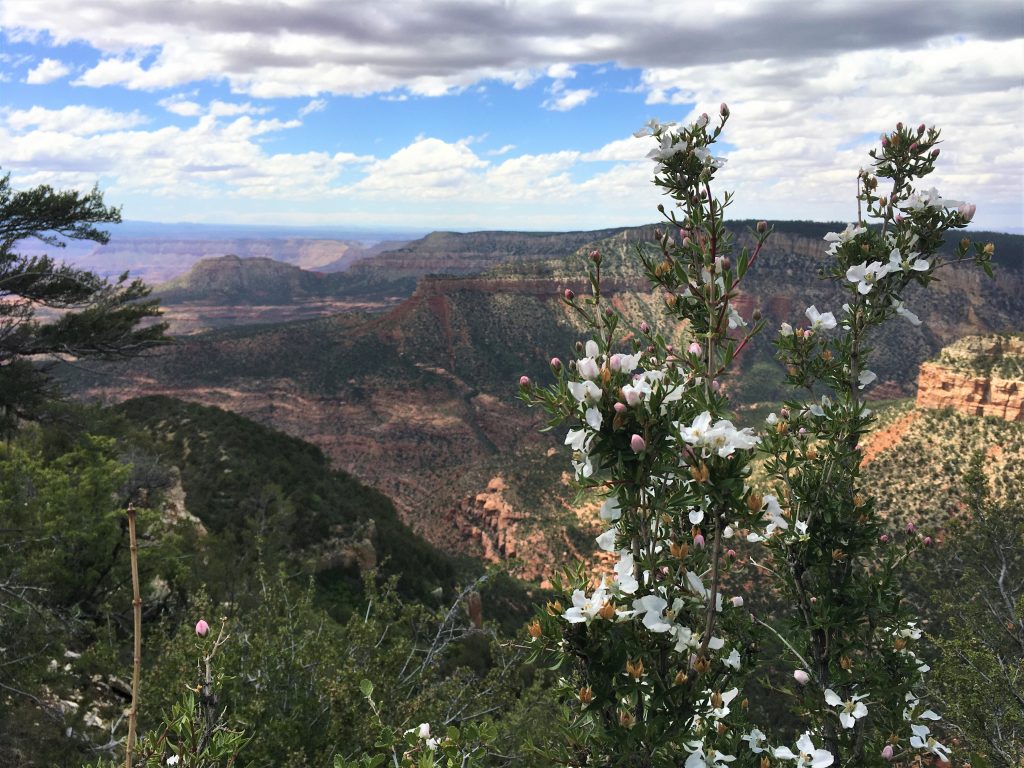
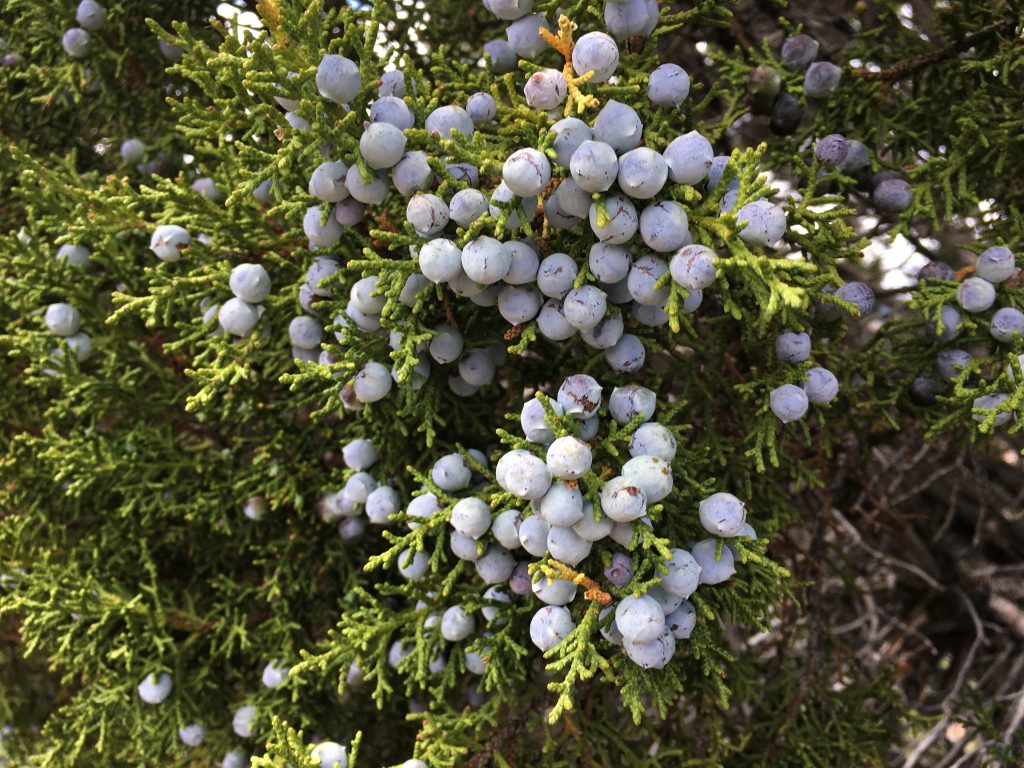
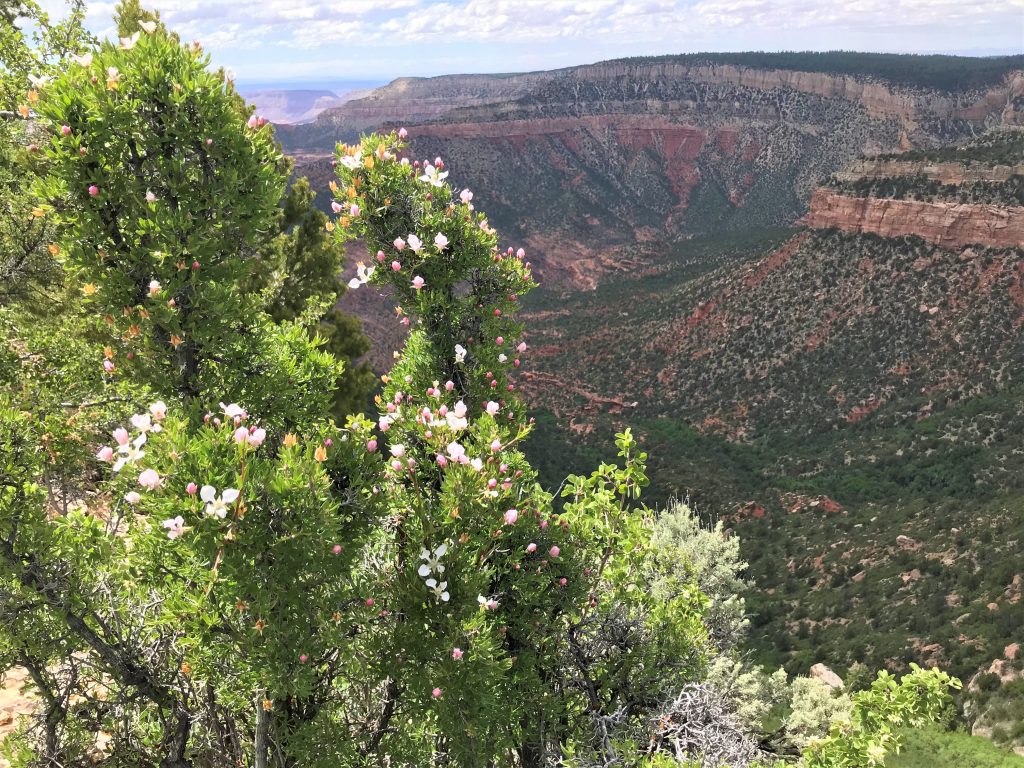
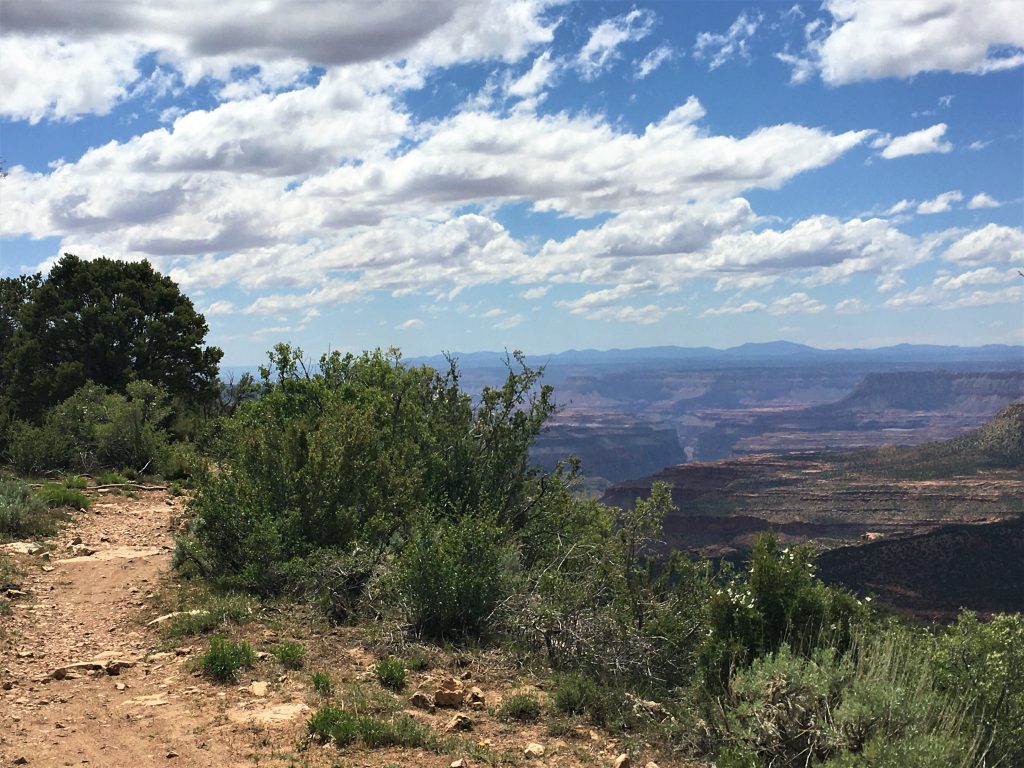
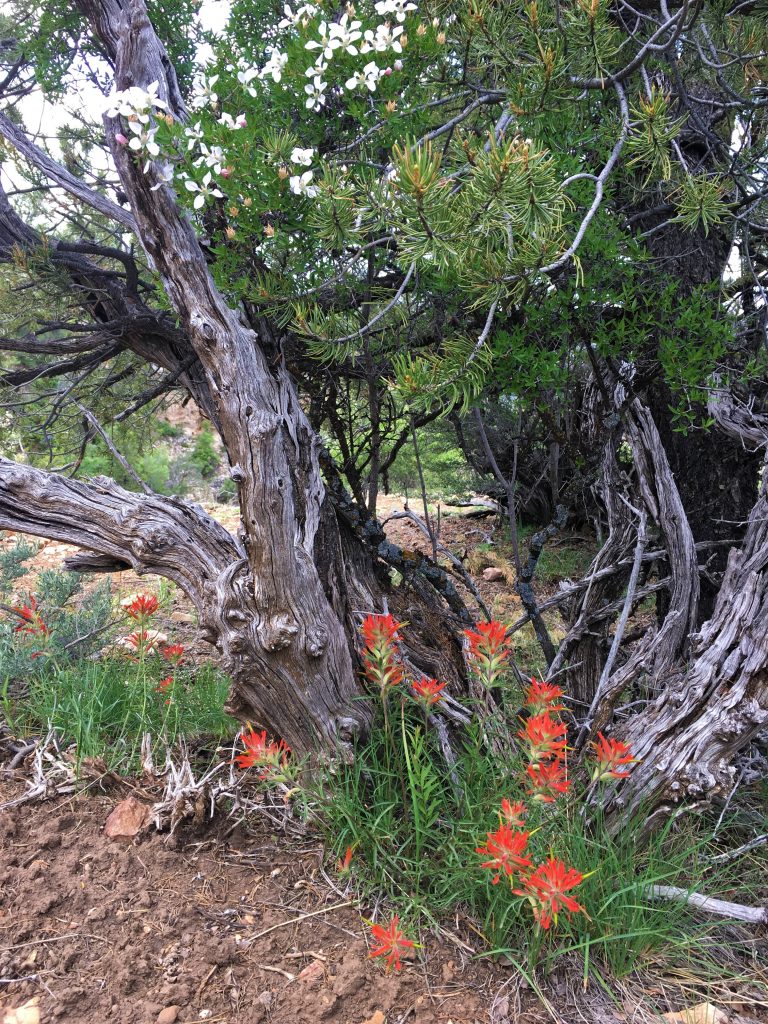
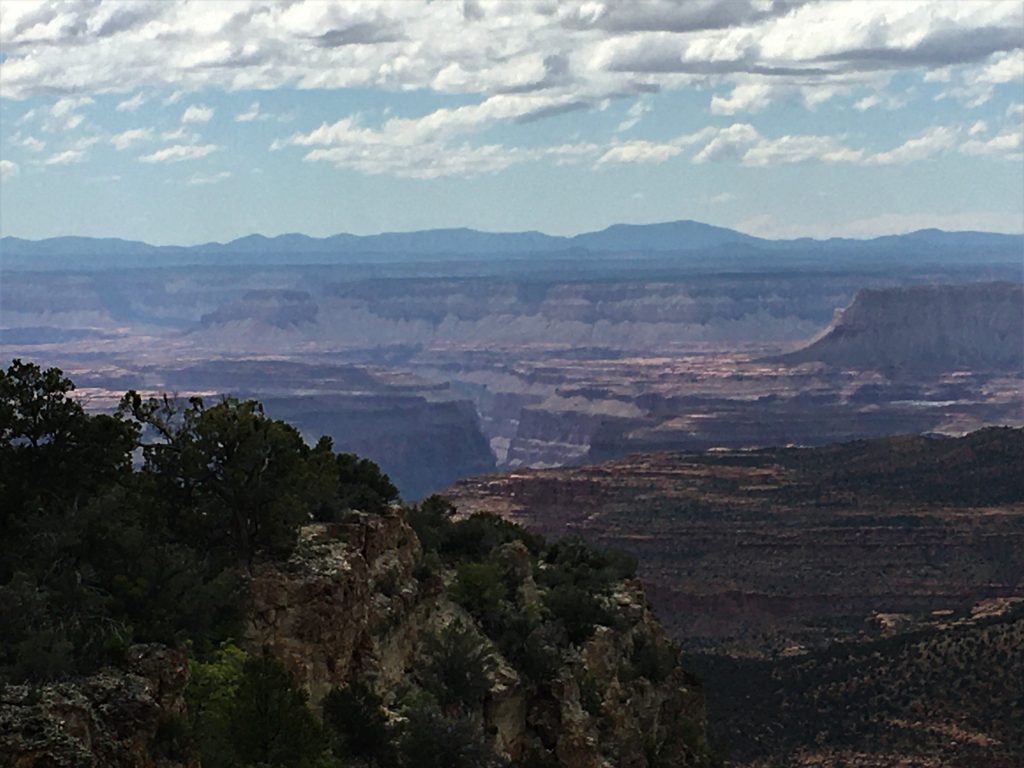
Looking at all these North Rim views, brought to mind the lyrics from ‘How Great Thou Art’.
O Lord my God, when I in awesome wonder, consider all the works Thy Hands hath made.
I see the stars, I hear the rolling thunder, Thy power throughout the universe displayed.
When through the woods and forest glades I wander, and hear the birds sing sweetly in the trees.
When I look down from lofty mountain grandeur, and hear the brook and feel the gentle breeze.
Then sings my soul, my Savior God, to Thee.
How great Thou art!
How great Thou art!
Since we’re not able to visit the Canyon in person, I’d like to indulge in a short visit, with information I found in the Lake Powell Visitor Guide, a few snippets on-line, and some professional photographs. Enjoy!
In 2019, the National Park Service commemorated its 100th anniversary. The Grand Canyon National Park is among the oldest in the U.S. – named the country’s 17th park by President Woodrow Wilson in 1919.
Did you know that the Grand Canyon encompasses a whopping 1,217,403 acres? (That makes it just a bit smaller than Delaware!) Plus, the canyon itself is a mile deep and averages 10 miles in width. And it is old, as in really, really old. It’s estimated that the Colorado River carved this canyon out over the past 6 million years. There are rocks here dating 2 billion years old – almost half of Earth’s age. Over 4,800 archeological sites suggest that humans inhabited the Grand Canyon as far back as 4,000 years ago and journeyed through it for 6,500 years before that.
It was an honorary year that celebrated the significant cultural and natural history of the Grand Canyon, including the park’s relationship with eleven traditionally associated tribes. We thank Teddy Roosevelt, who created the Antiquities Act in 1906, protecting this most amazing place on earth for all the world to see.
Each year, more than 5 million people, from across the globe, visit the Grand Canyon. The more remote North Rim of the Grand Canyon receives barely 12% of that visitation.
And here’s a few more facts for you to chew on:
It creates its own weather
It’s not the deepest, nor the longest in the world. Not even close. That distinction goes to Tibet. (Yarlung Tsangpo Grand Canyon – 19,714 feet deep at one point, but the average is 7,400, and it’s 1,100 miles long.) The Grand Canyon in the U.S. is 277 miles long and up to 6,093 feet deep and averages about 1-mile, or 5,000 feet deep.
No dinosaur bones have ever been found in the Grand Canyon
There are very few fish. That’s because prior to modern flood control, the Colorado River was a difficult habitat. Heavy silt, frequent floods and temperatures that ranged from extreme heat to sub-freezing. Therefore, only 8 species of fish are native to the Grand Canyon, and six of those are found nowhere outside the Colorado River.
There are people living within the Grand Canyon National Park. Supai Village is located at the base of the Grand Canyon within the Havasupai Indian Reservation. Inaccessible by road and with a population of just 208, it’s the most remote community in the lower 48 states, and is the only place where mail is still delivered by pack mule.
From the rim of the canyon to its lowest point, the temperature can change by more than 25 degrees
Many people consider it to be one of the seven wonders of the natural world
At its widest point the Grand Canyon stretches 18 miles across
At its narrowest point it stretches 4 miles across.
There are an estimated 1,000 caves within the canyon, but only 335 have been recorded. Only one cave is open to the public.
The most dangerous animal in the canyon is the rock squirrel. Even though Gila monsters and bighorn sheep also live there, visitors sustain more injuries from squirrel bites.
The drive from the North Rim Visitor Center to the South Rim Visitor Center is about 200 miles (320km) and takes roughly four hours.
The Grand Canyon Pink Rattlesnake is only found in the Grand Canyon
Fewer people have successfully completed a continuous length-wise hike through than Grand Canyon than have walked on the moon
The air at the Grand Canyon is among the cleanest air in the United States.
The Federal Aviation Administration exists because of the Grand Canyon. In the 1950s, commercial airplanes often took detours over the park to give passengers a look at the marvel. In 1956, however, two of these planes tragically collided. The crash had no survivors, leading the federal government to create the FAA.
Hundreds of split-twig figurines have been discovered in the canyon walls, shaped like deer and bighorn sheep. Anthropologists believe that prehistoric hunters used these in religious rituals.
John Wesley Powell led the first expedition down the Grand Canyon in 1869. He was the first to use the name “Grand Canyon”. Previously, it had been known as the “Big Canyon” or “Great Canyon”.


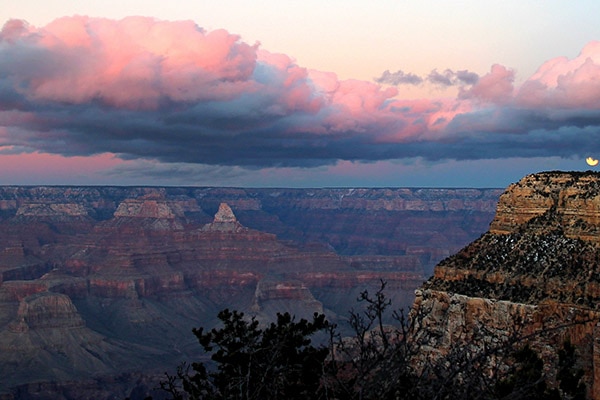
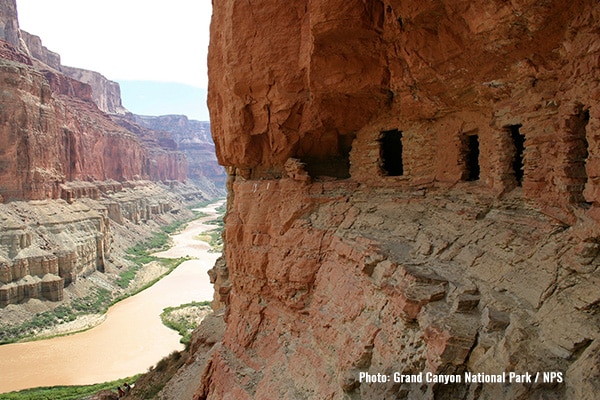
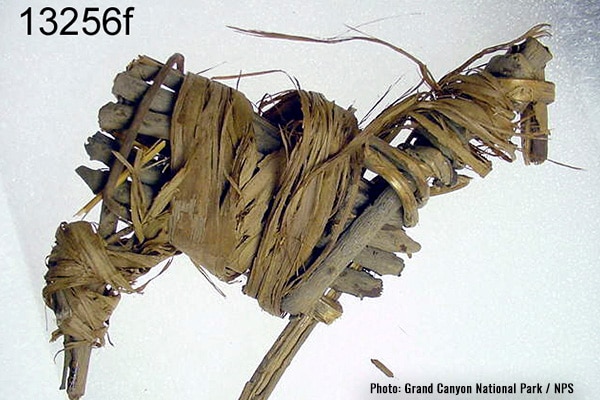
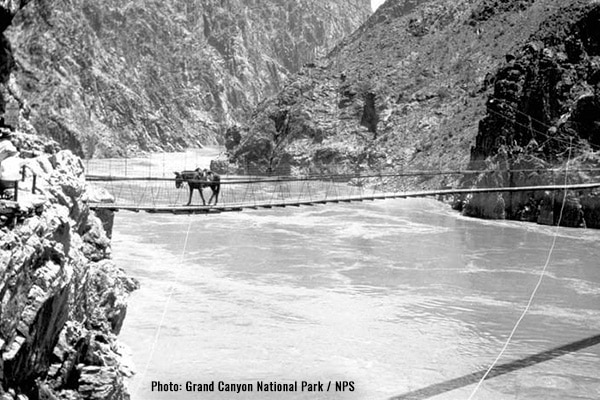

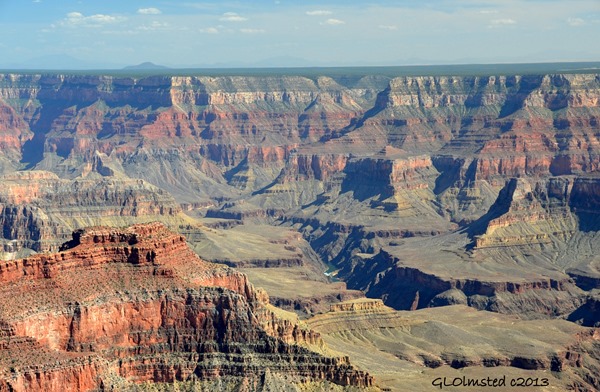
Besides the one deer, we did see some other wildlife in the wilderness today.

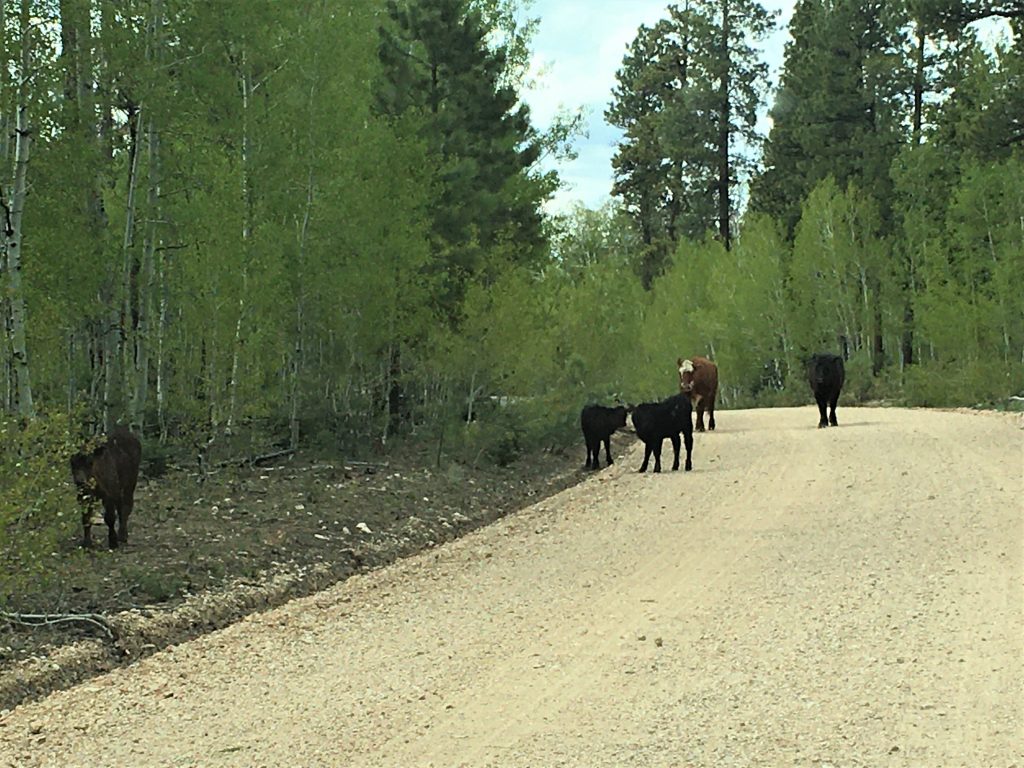
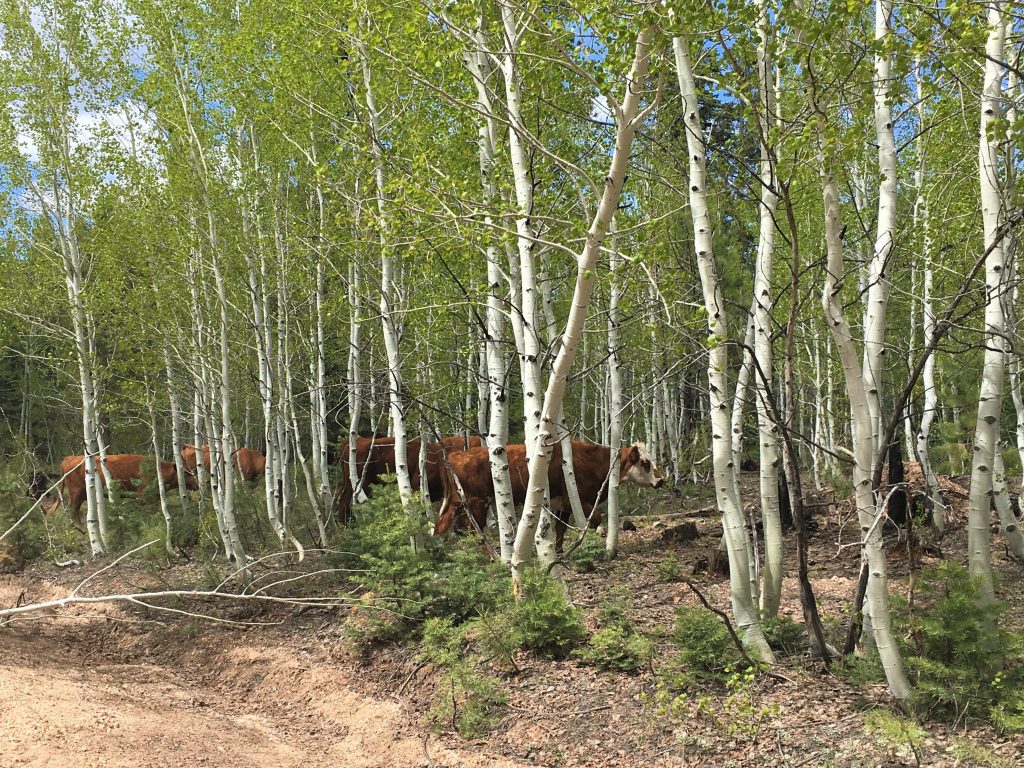
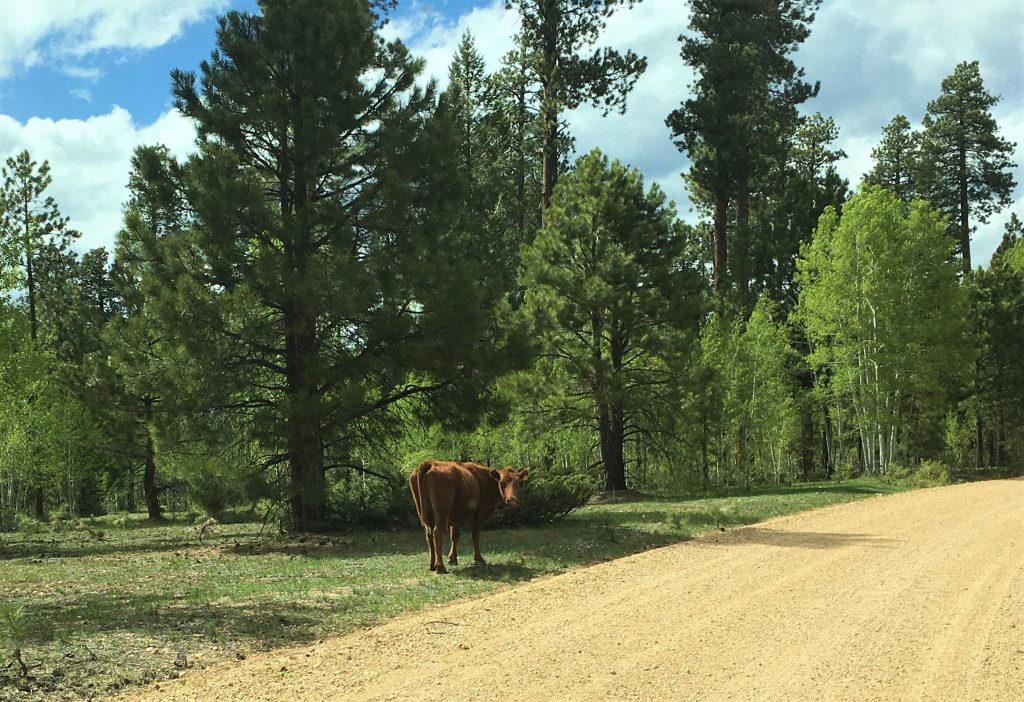
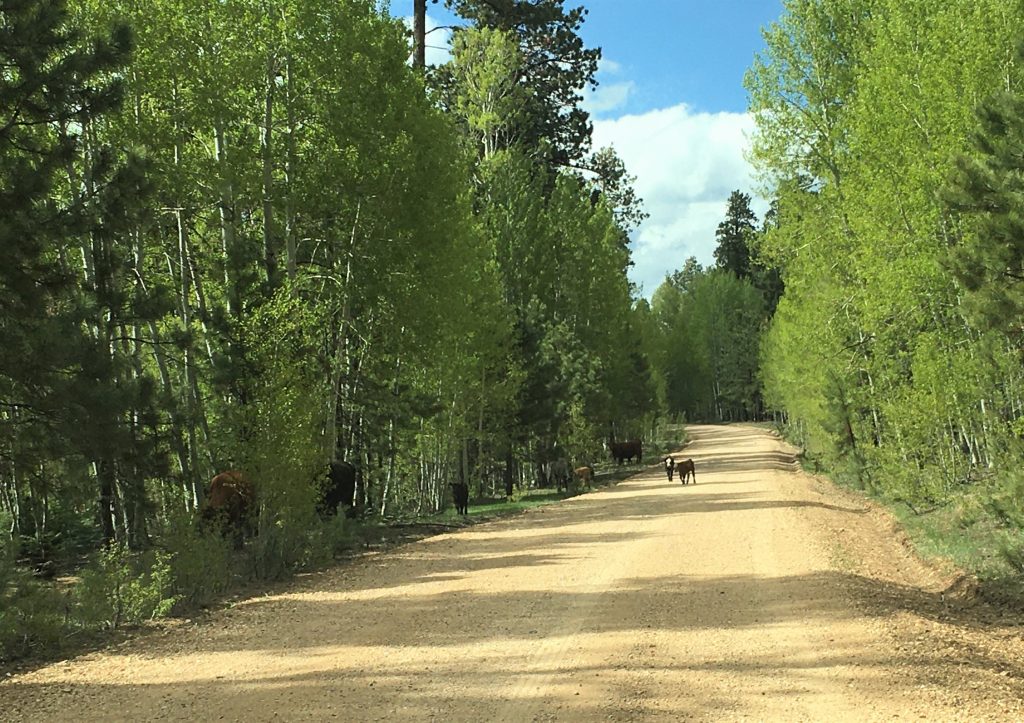
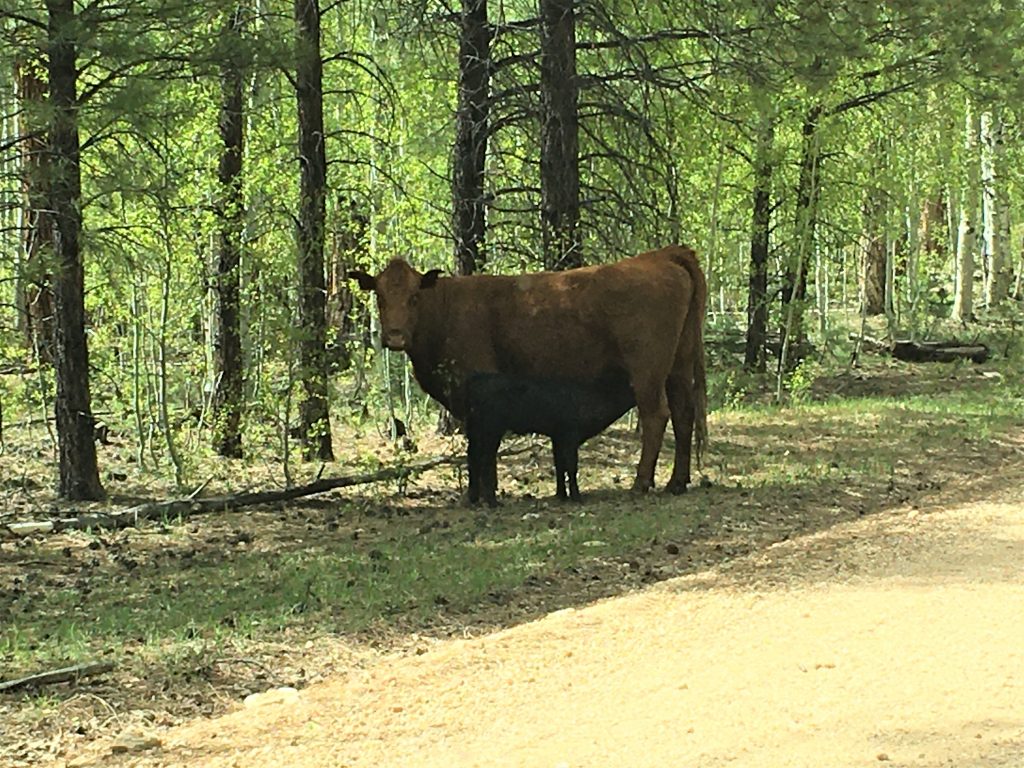
Awwww – – it’s a nursing calf!
